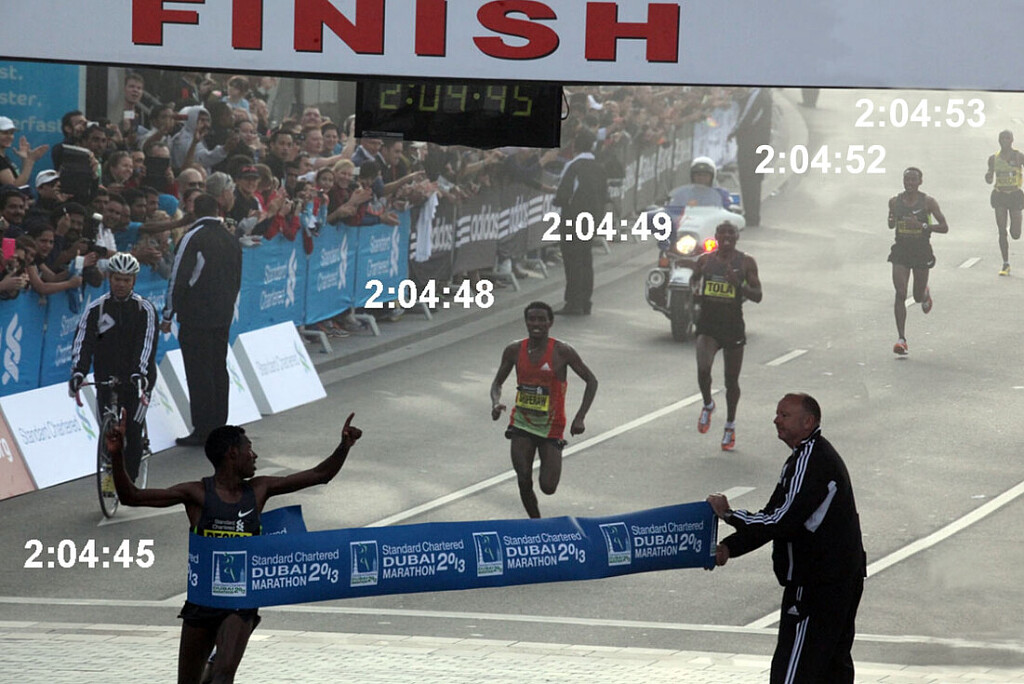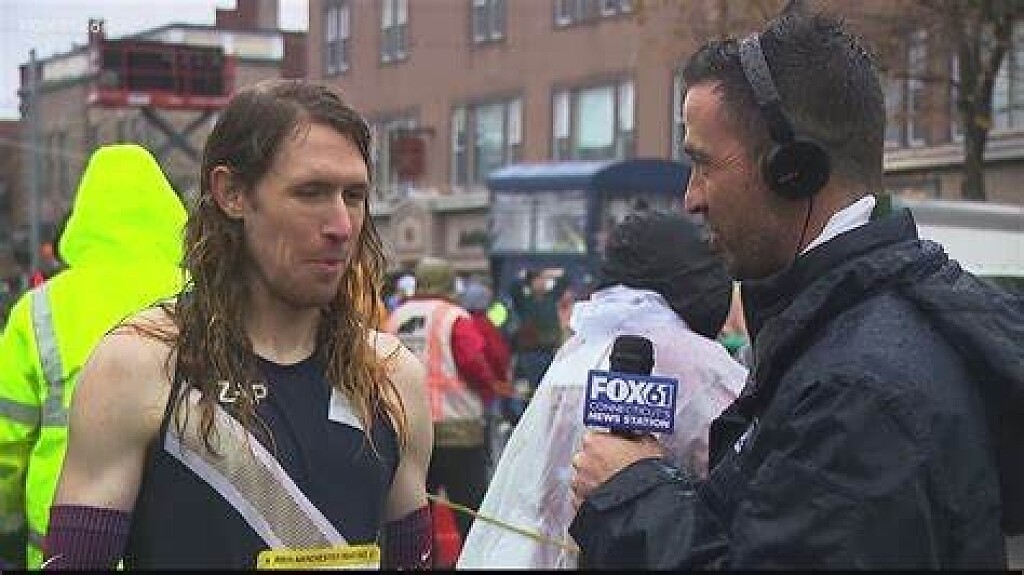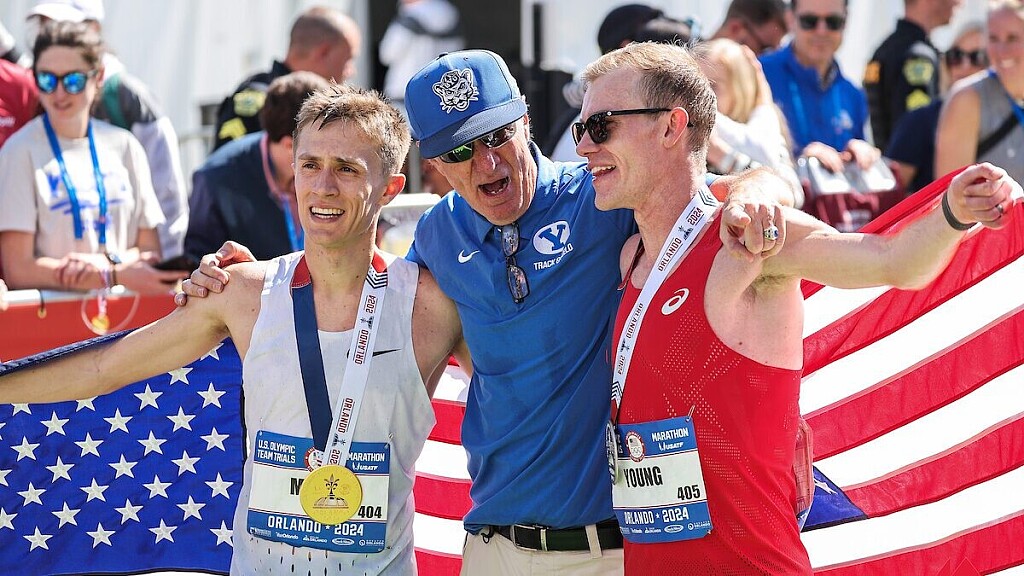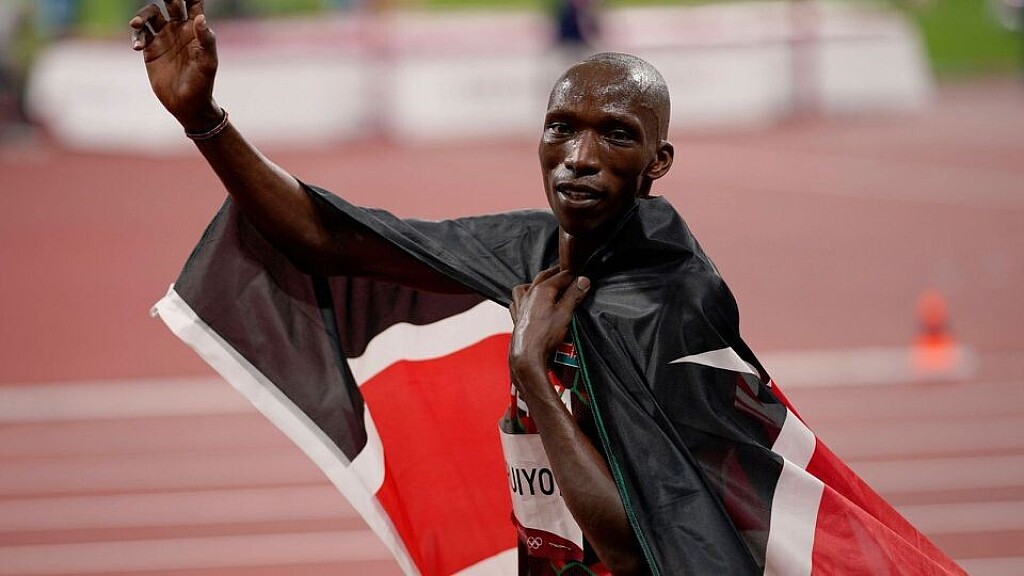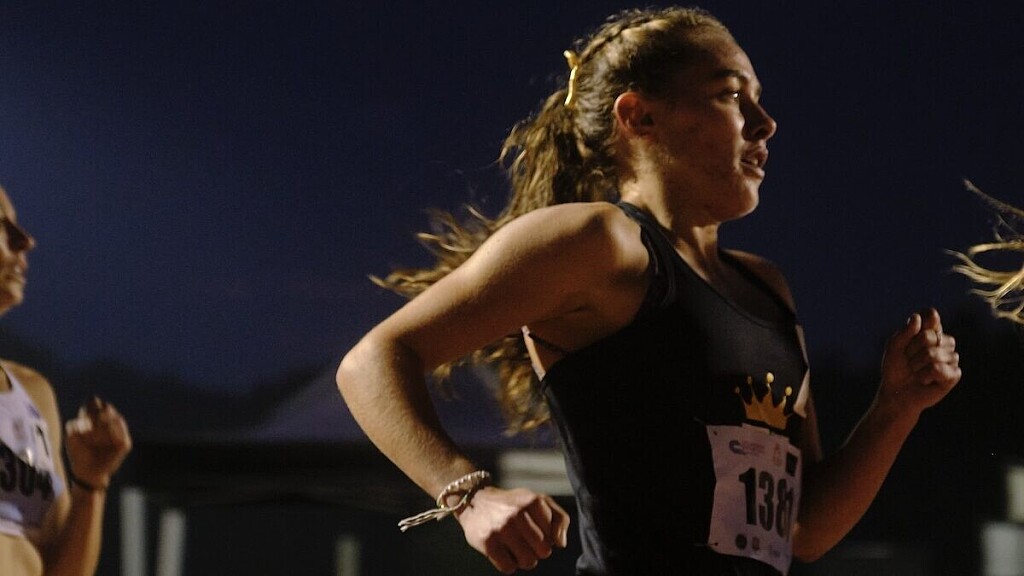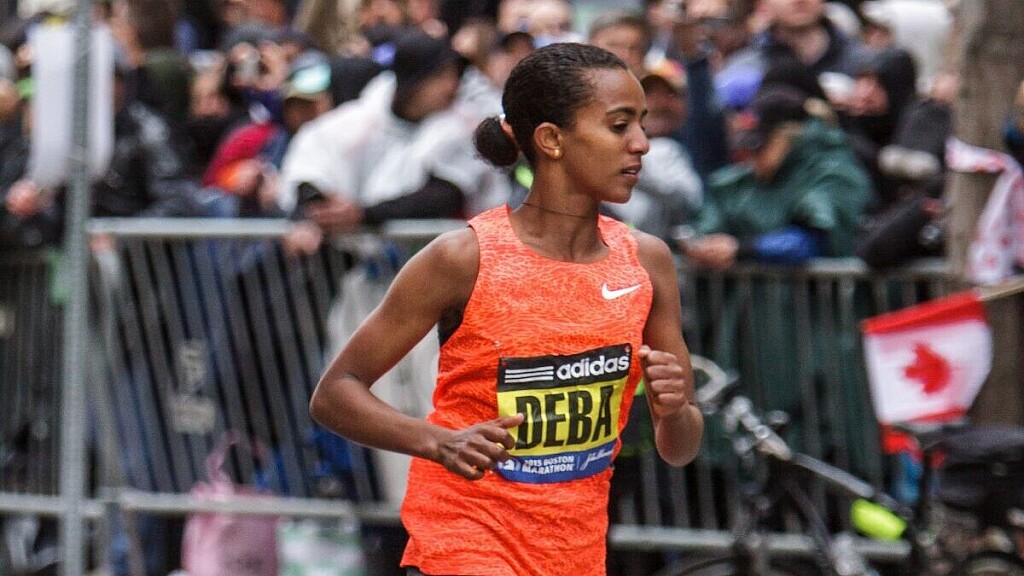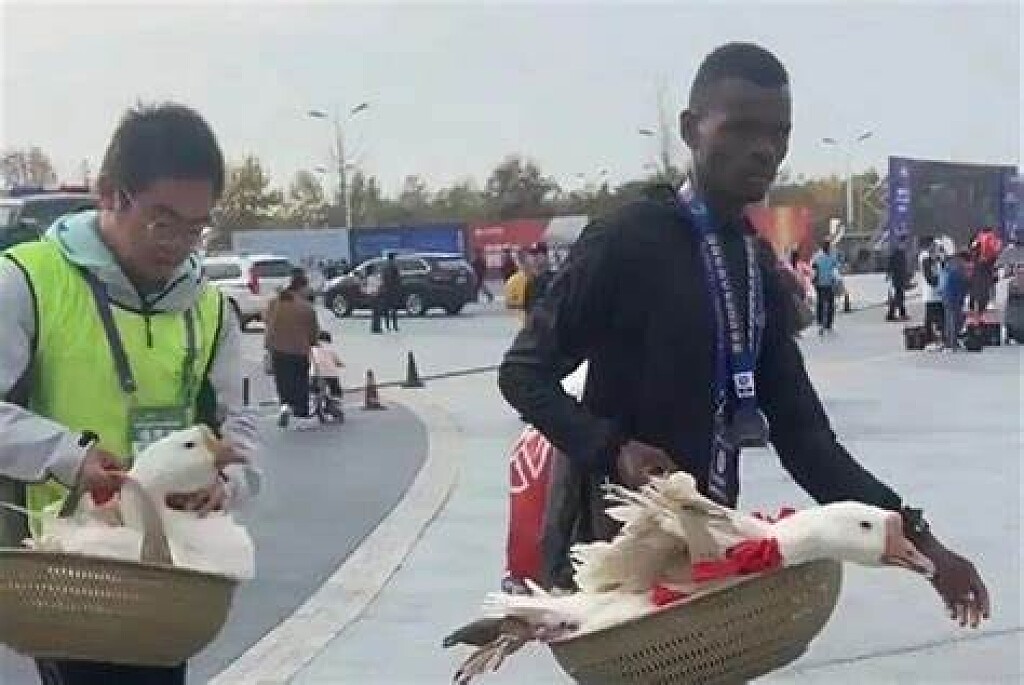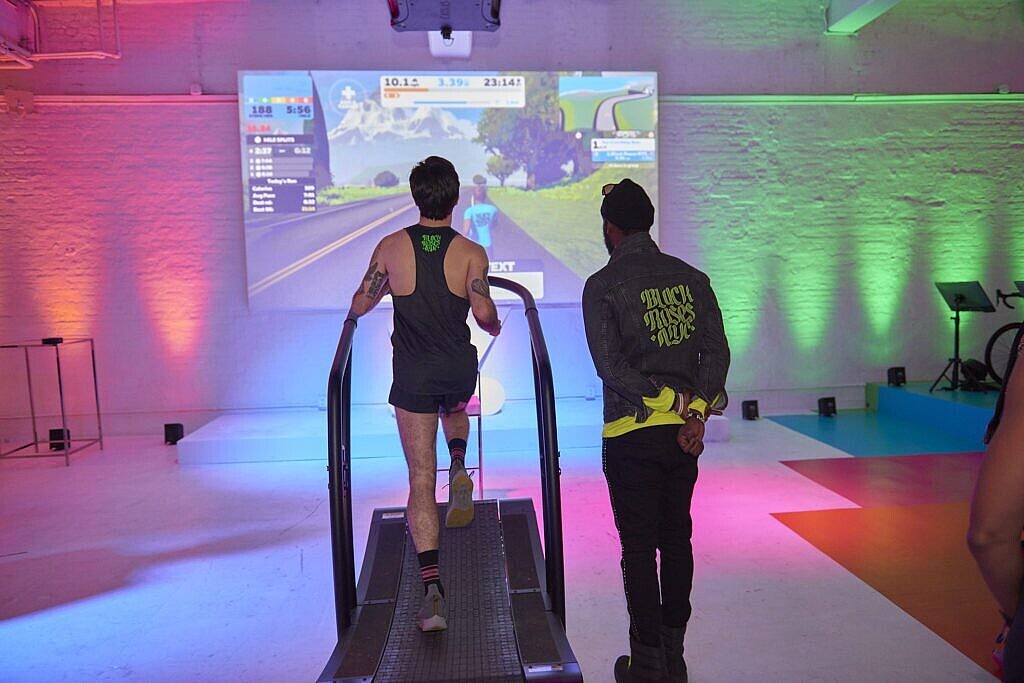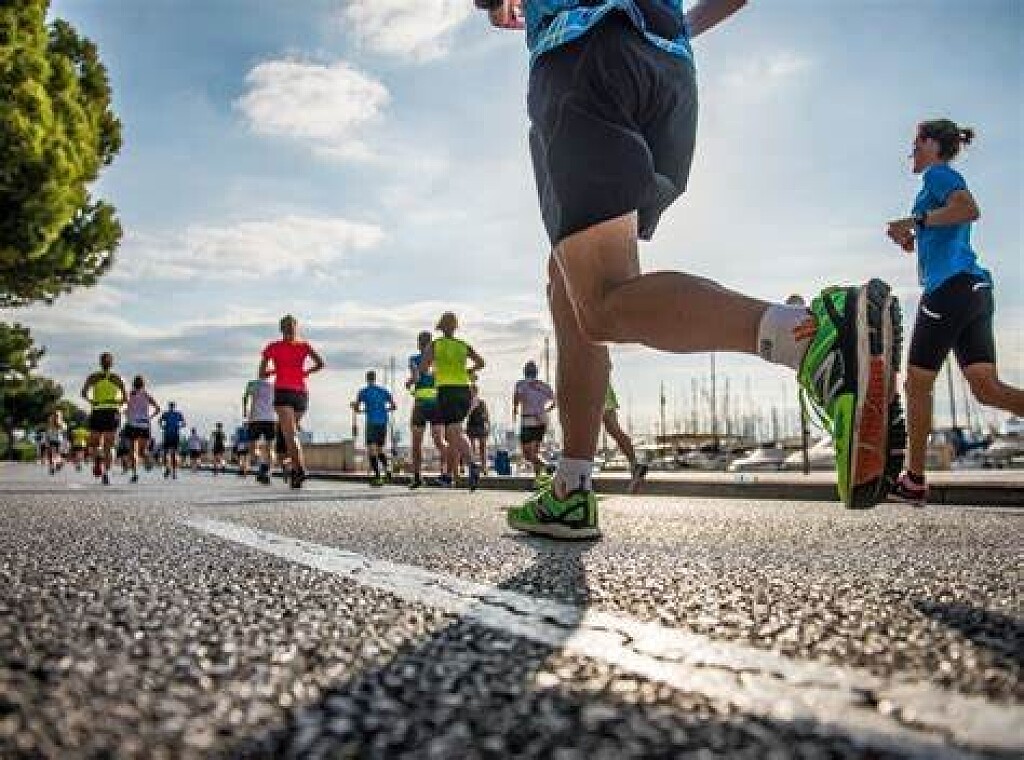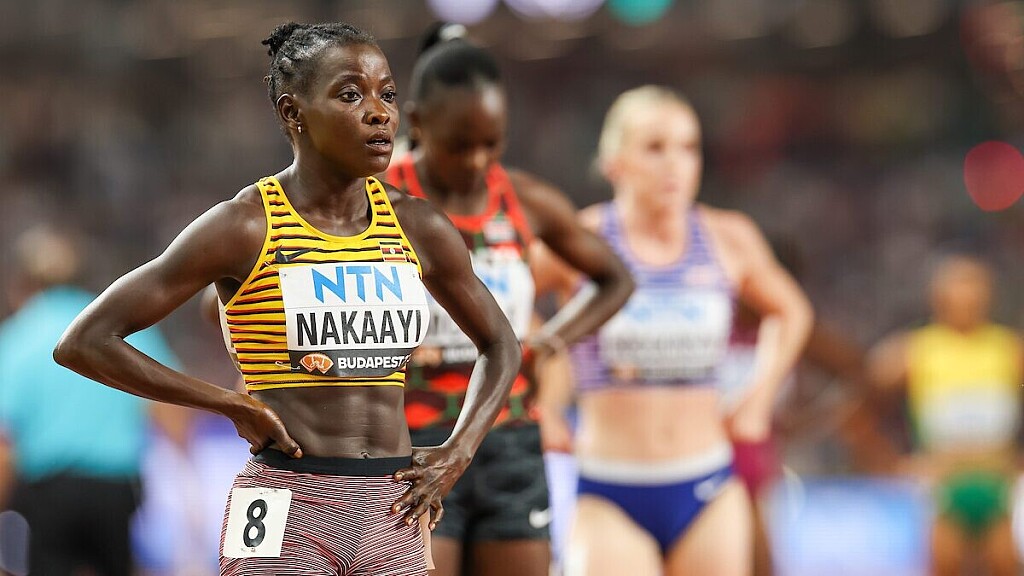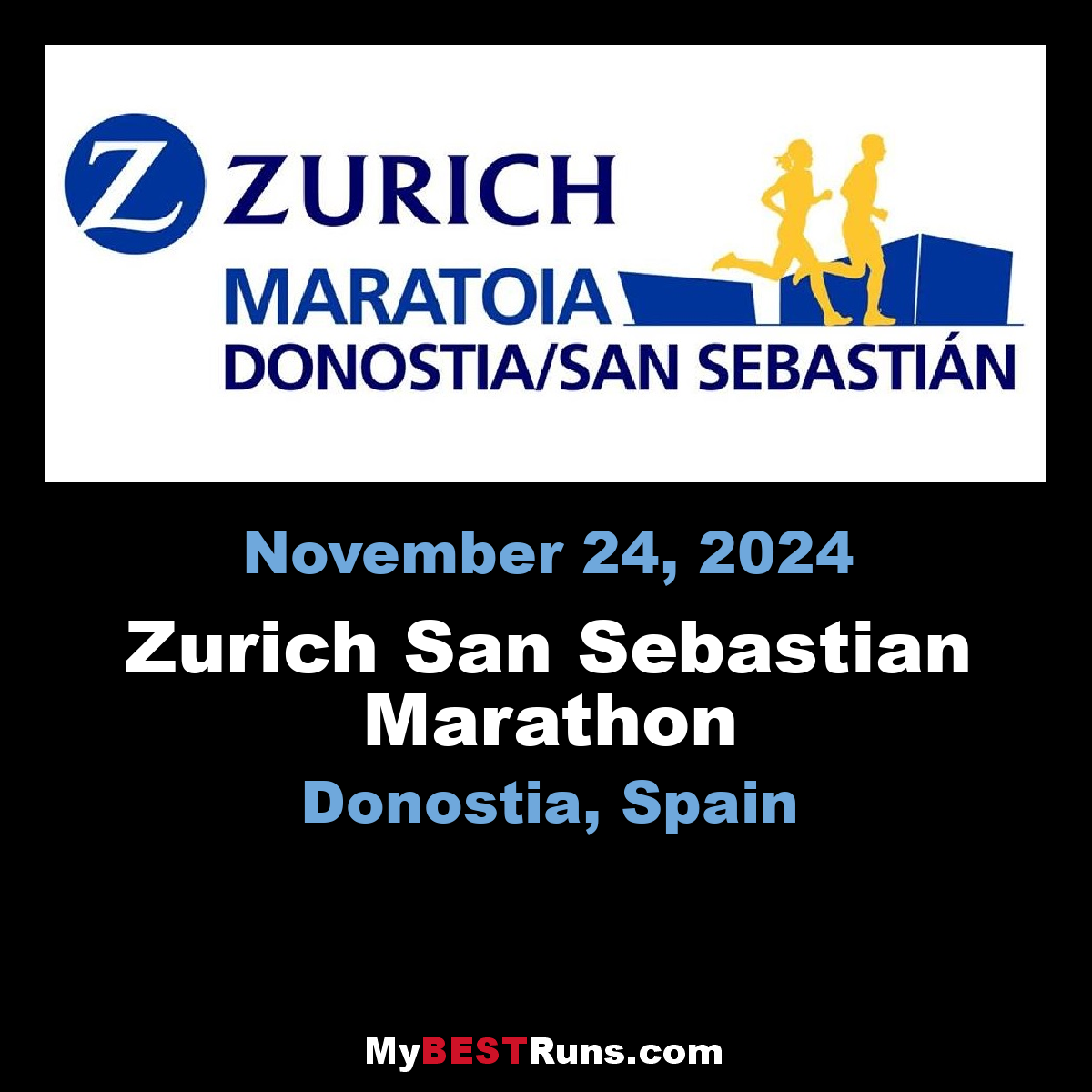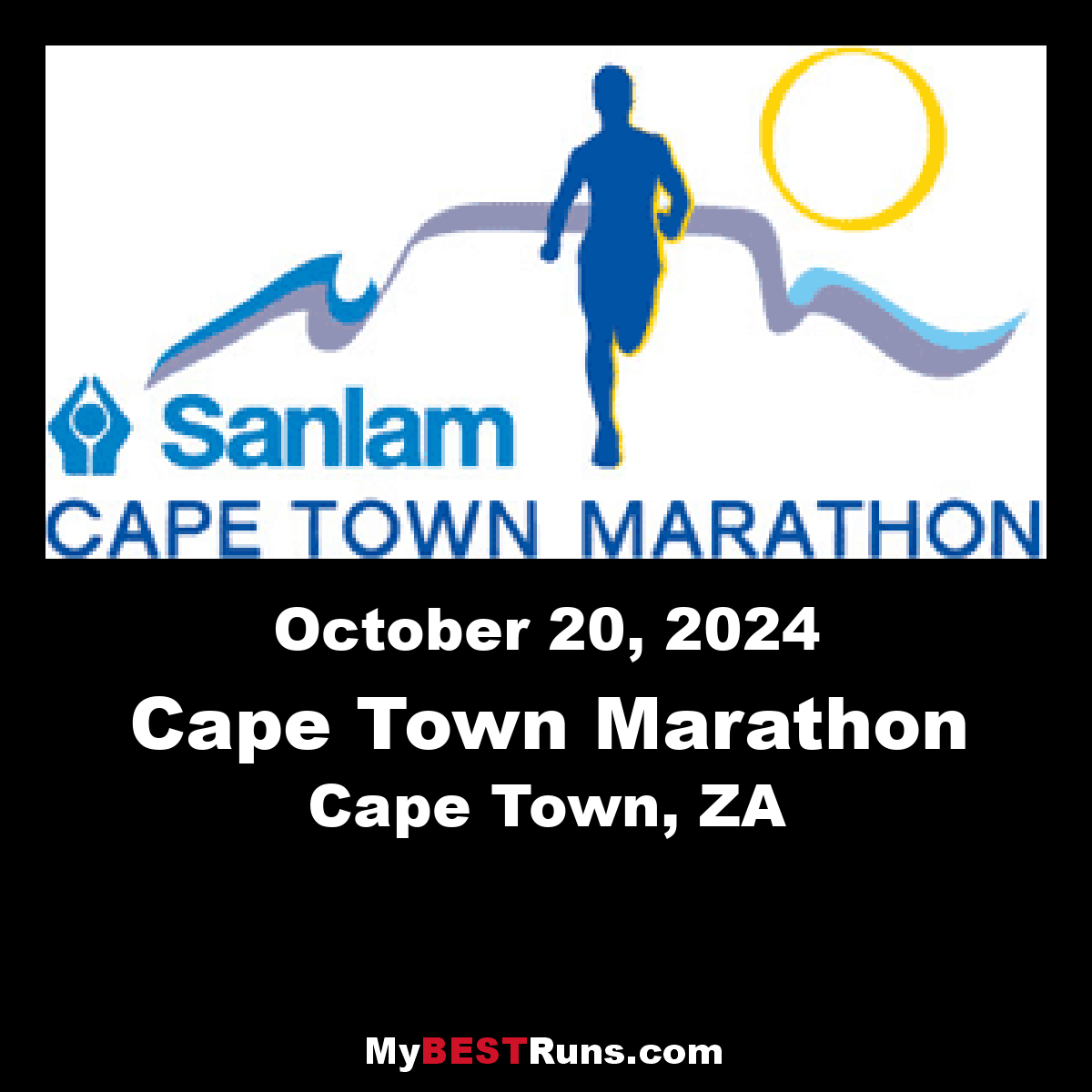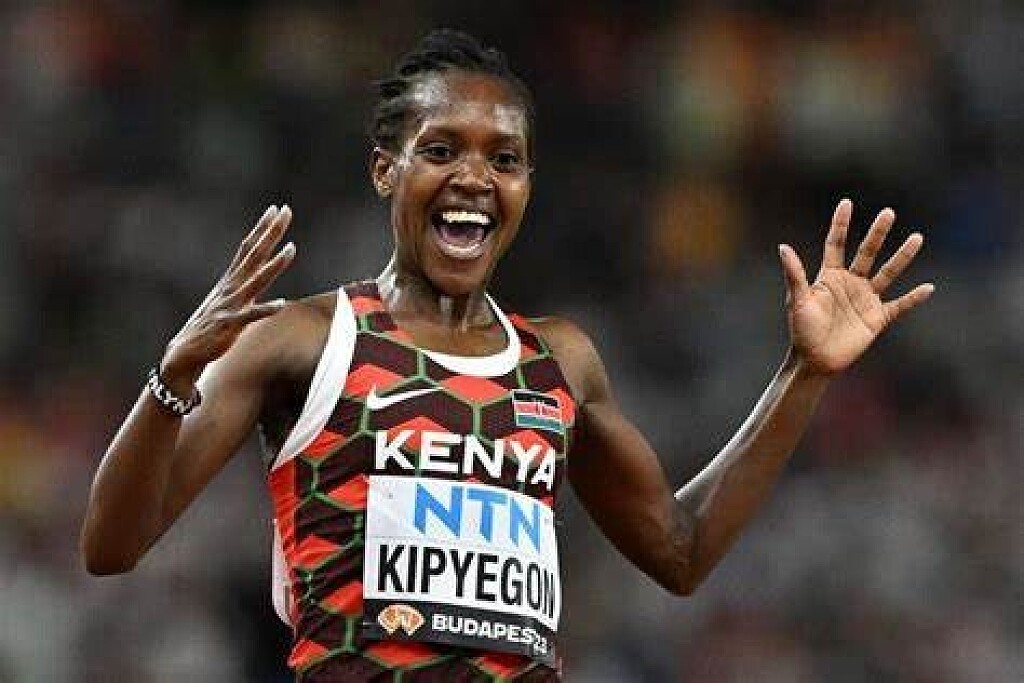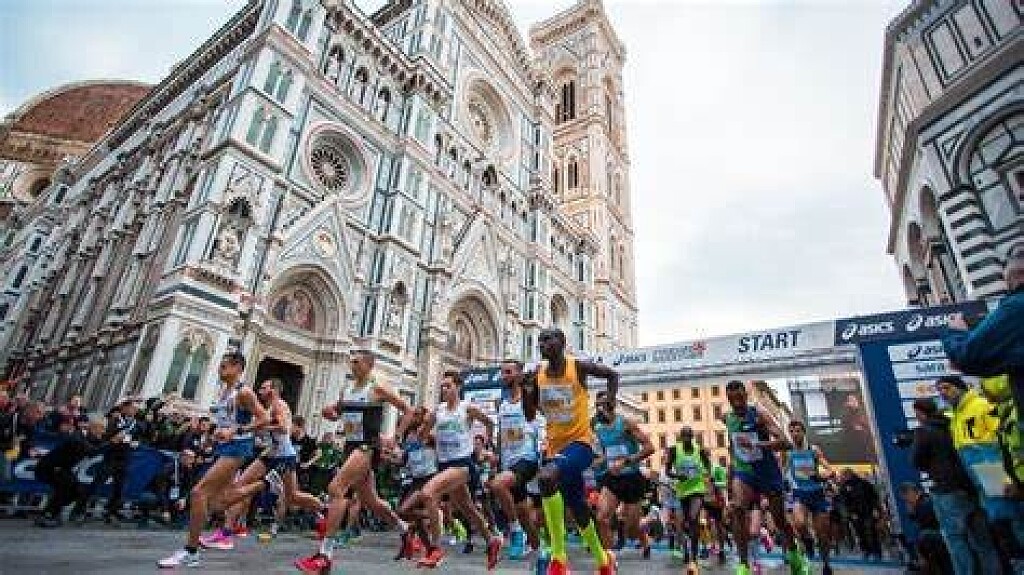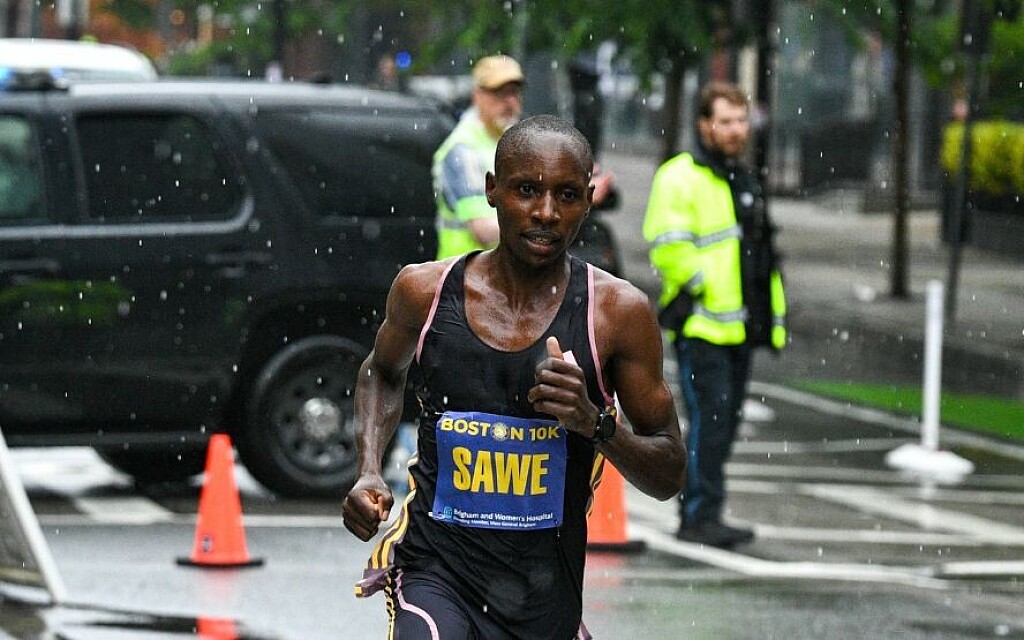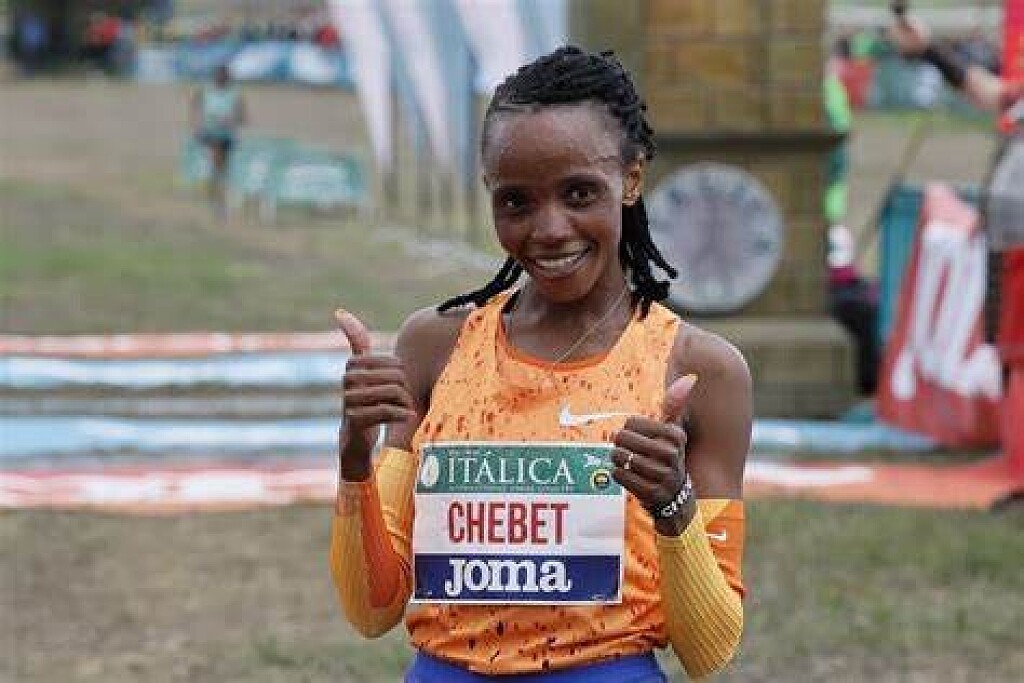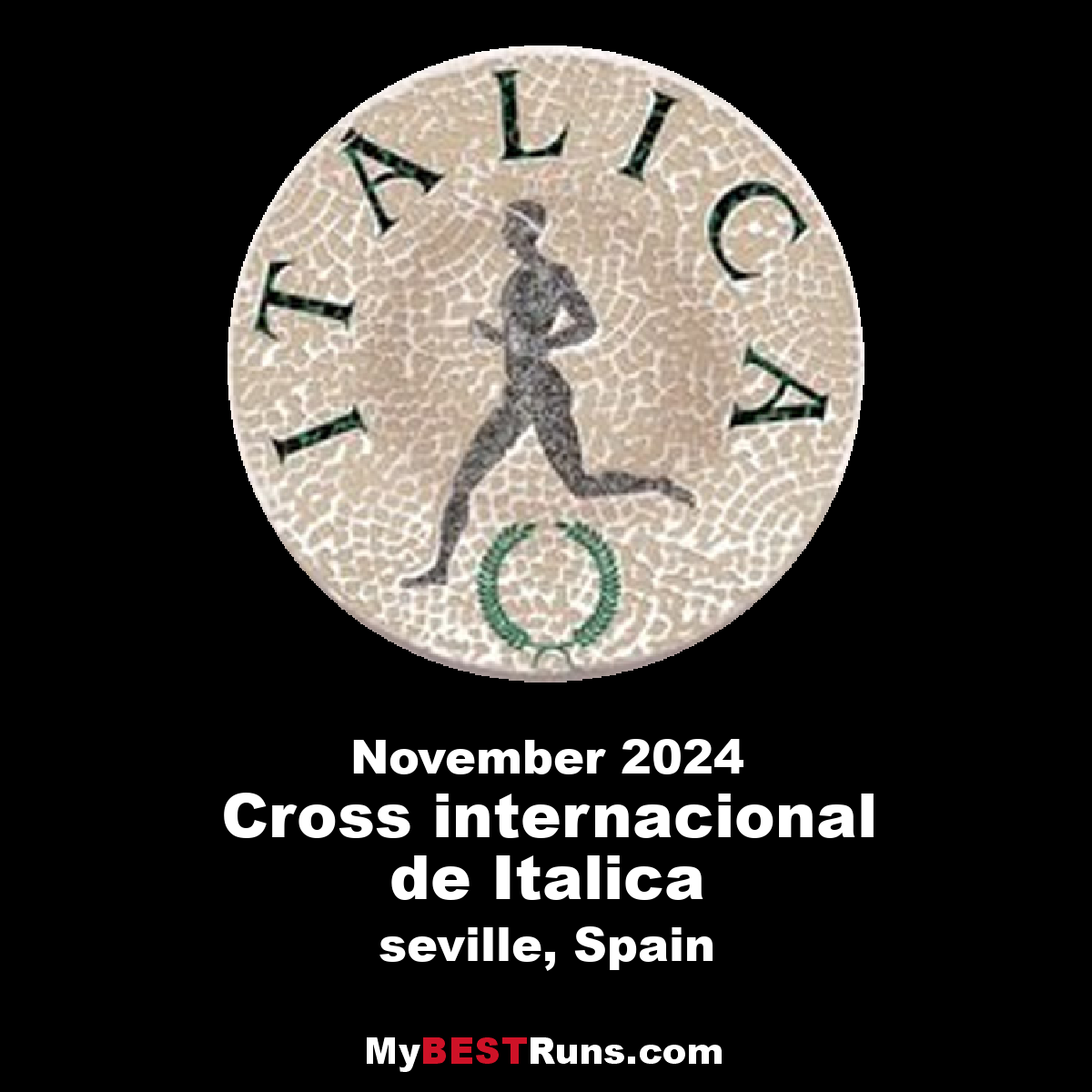Running News Daily
Running News Daily is edited by Bob Anderson. Send your news items to bob@mybestruns.com Advertising opportunities available. Train the Kenyan Way at KATA Kenya and Portugal owned and operated by Bob Anderson. Be sure to catch our movie A Long Run the movie KATA Running Camps and KATA Potato Farms - 31 now open in Kenya! https://kata.ke/
Index to Daily Posts · Sign Up For Updates · Run The World Feed
The second coming of Lelisa in Dubai?
Former world champion Lelisa Desisa is returning to the Dubai Marathon, scene of his debut triumph, hoping that the second coming on 12th January will bring him as much success as the first. Desisa’s sprint to victory in Dubai 2013 with four pursuers strung out closely behind him was the first time five men had gone under 2hr 5mins for a marathon anywhere. With 2.04.45, one of the fastest debuts in history the 22 year old Desisa underlined his new elite status by winning Boston barely three months later, and finishing second in the world championships in Moscow in the summer.
The Ethiopian endeared himself to the Boston public that year of the bombing tragedy by returning to the city two months after the event, dedicating his victory to the victims, and presenting his framed medal to the mayor in a much lauded public ceremony. He endorsed his status as a favourite adopted son by winning Boston again in 2015, then finishing second the following year. He may not be as famous as some, but his record after that suggests he had a good case to be considered male marathoner of the decade – he won in New York in 2018, after a second and third in earlier years; all of which led up to his apotheosis as IAAF world champion in the torrid midnight heat of Doha 2019.
Then came the pandemic, a respite after the efforts of the previous six years; and an opportunity to spend time with his young family and start a business back in Ethiopia. According to his manager Hussein Makke, he is now raring to go again. “Desisa took time off to start his business and put staff in place, to ensure if you like his post-racing career,“ said Makke. “He and his wife also welcomed two children. But he is well rested and he told me he is far from finished in competitive running. He’s back to full force training and looking to return to podiums in 2025.“
“It’s great to have such an illustrious winner back,“ said Dubai race director Peter Connerton this week. “Although we’ve had all-time greats like Haile Gebrselassie here in the past, current Olympic champion Tamirat Tola, and women’s world record holder Ruth Chepngetich, all winning in fast times, we’ve also built up a reputation as a race for debutants; and Lelisa and others have certainly proved that point.“
“We suffered with the pandemic, as did all marathons worldwide, but we’re getting back to pre-pandemic interest and entry levels, and looking to make Dubai 2025 the best ever.“
(11/29/2024) ⚡AMPThree tips for runners making a comeback
Pressed pause on training for a period? Here's how to make your return to running pain and problem-free.
Every runner faces a return to the sport at some point, whether it’s after months or even years away. Rebuilding your strength and fitness can be a fulfilling part of the process, but it’s crucial to do it thoughtfully—and we have some tips to help you stay on track. Whether it was an injury, a major life change or an unplanned extended break that kept you sidelined, now is the time to focus on moving forward.

1.- Leave your past behind
One of the biggest challenges when returning to running is resisting the urge to compare your current abilities to your past performance. It’s natural to feel frustrated when you think back to times when running felt easier, especially when every step now feels more difficult. But here’s the reality: you’re starting fresh from today. Dwelling on past achievements won’t get you anywhere; instead, focus on the progress you’re making as you move forward. Accept where you are right now and take pride in rebuilding your strength for the next phase of your running journey.

2.- Start slow and steady
Rebuilding is not the time for all-or-nothing thinking. Avoid the temptation to jump from zero runs to a packed training schedule—gradual increases are key to avoiding injury and burnout. While your return-to-running plan should be customized with your unique abilities and level of fitness in mind, it’s a good idea to start with two to three short runs per week. Sprinkle in walk breaks as needed, and keep it simple. Add new elements, like strength training or extra mileage, only after you’ve built consistency over several weeks.
3.- Forget pace and heart rate—for now
Press pause on worries about pace or heart rate data. Early in your return, the goal is to enjoy the act of running. Forget about pace, effort or numbers—instead focus on consistency and how running makes you feel. Keeping things comfortable and sustainable will help you rediscover what you love about the sport.
(11/28/2024) ⚡AMP
by Keeley Milne
Colley, Kelati push through rain to win 88th Manchester Road Race
Andrew Colley and Olympian and now four-time winner Weini Kelati brought glory to the table for Thanksgiving after coming out on top at the 88th Manchester Road Race on Thursday morning.
Rainfall throughout the morning didn't stop Colley and Kelati from leading the pack in the men's and women's divisions of the historic 4.737-mile loop through downtown Manchester.
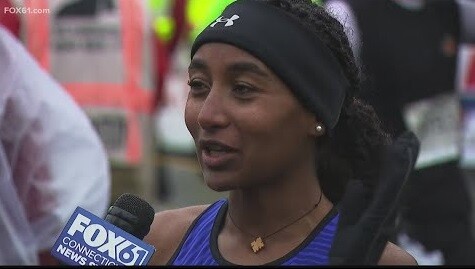
While professional runners typically dominate the results, they're far from the only people that travel to Main Street on Thanksgiving morning.
Organizers declared that the Manchester Road Race's numbers were back to pre-pandemic levels with 12,116 participants signing up for the race by the end of the day on Tuesday, falling just short of the 2018 race's 12,435 registrations and exceeding the 2023 event by more than 1,000.
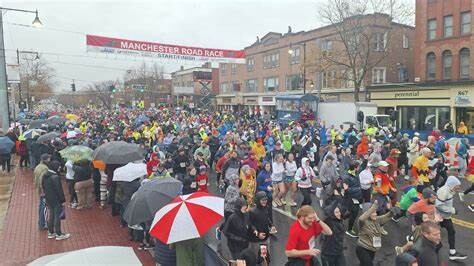
by Joseph Villanova
Manchester Road Race
The Manchester Road race is one of New England’s oldest and most popular road races. The 86th Manchester Road Race will be held on Thanksgiving Day. It starts and finishes on Main Street, in front of St. James Church. The Connecticut Sports Writers’ Alliance recently honored the Manchester Road Race. The CSWA, which is comprised of sports journalists and broadcasters...
more...This one piece of cheering advice could transform your race day
American distance running coach Ed Eyestone helped his athletes find their extra gear with this supportive technique.
Every runner has been there: the gruelling point in a race where exhaustion takes over, and not even a “let’s go” or “keep pushing” from the crowd feels like it’s helping. But what if the right words could reignite your drive and help you find that extra gear to push you to a personal best?
That’s precisely what American distance running coach Ed Eyestone proved at the 2024 NCAA Cross Country Championships last weekend in Madison, Wisc. Eyestone, who coaches U.S. Olympic marathoners Conner Mantz and Clayton Young, along with Brigham Young University’s (BYU) cross-country program, utilized a brilliant strategy to motivate his runners to the top of the podium.
Eyestone wore a quarterback-style wristband inscribed with each athlete’s specific motivational triggers. These were not generic cheers, but deeply personal cues each runner wanted to hear at pivotal race moments. The result? BYU became only the fourth school in NCAA Division I history to win both the men’s and women’s team titles in the same year—a feat not accomplished in 20 years.

Why does personalization matter?
It’s easy to default to encouraging phrases like, “Great job!” or “Good work!” While these sentiments have good intentions, studies have shown that tailored, meaningful feedback has a far greater impact on an athlete’s performance. Specific, personalized words can shift focus, reignite motivation and help athletes fight those challenging moments.
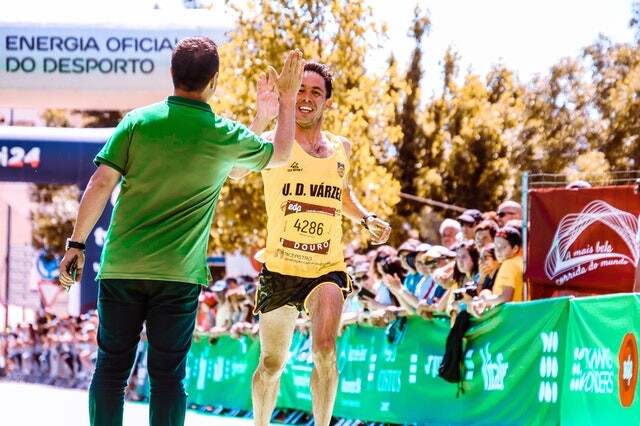
The key as a coach or support crew? Understanding what drives the athlete. Whether it’s reminding them of a goal, reinforcing their training, or simply offering a grounding phrase; these personalized remarks can make all the difference.
When the body starts to struggle, the mind often follows. Strategic cheering taps into sports psychology principles, helping athletes overcome these mental battles by reconnecting them with their purpose and “why.” In this example, coach Eyestone uses small details—like saying exactly what an athlete wants to hear when the going gets tough.
Takeaways for your race day
If you’re cheering for a runner, here are a few ways you can level up your support: first, learn what motivates them. Is it their goal time? A mantra they rely on? A personal reason for running? Use this knowledge to craft your encouragement. Lastly, be specific. Instead of saying, “You’ve got this,” try something more tailored to the race itself, like “You’re right on pace!” or “This is the hill you’ve been training for.” (Or better still, ask them if there are some specific words or phrases they’d find motivating.)
Eyestone’s masterclass in motivation is a reminder that support is more than just words—it’s about connecting meaningfully with the person on the course. Whether you’re coaching, cheering or even giving some self-talk, the right message can turn a good race into a great one.
(11/28/2024) ⚡AMPby Marley Dickinson
Timothy Cheruiyot reveals when he plans to hang up his spikes & his post-retirement goals
Timothy Cheruiyot plans to retire from the 1500m after a final championship, transitioning to long-distance and marathon races.
Timothy Cheruiyot has expressed his intention to retire from the 1500m discipline after the 2025 World Championships in Tokyo, Japan.
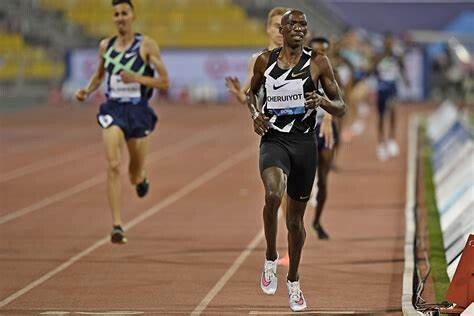
The 2020 Olympic silver medallist aims to transition to long-distance and road racing, marking a significant shift in his illustrious career.
Cheruiyot, one of the most consistent middle-distance runners over the past decade, has set his sights on concluding his 1500m journey with a strong performance in Tokyo.
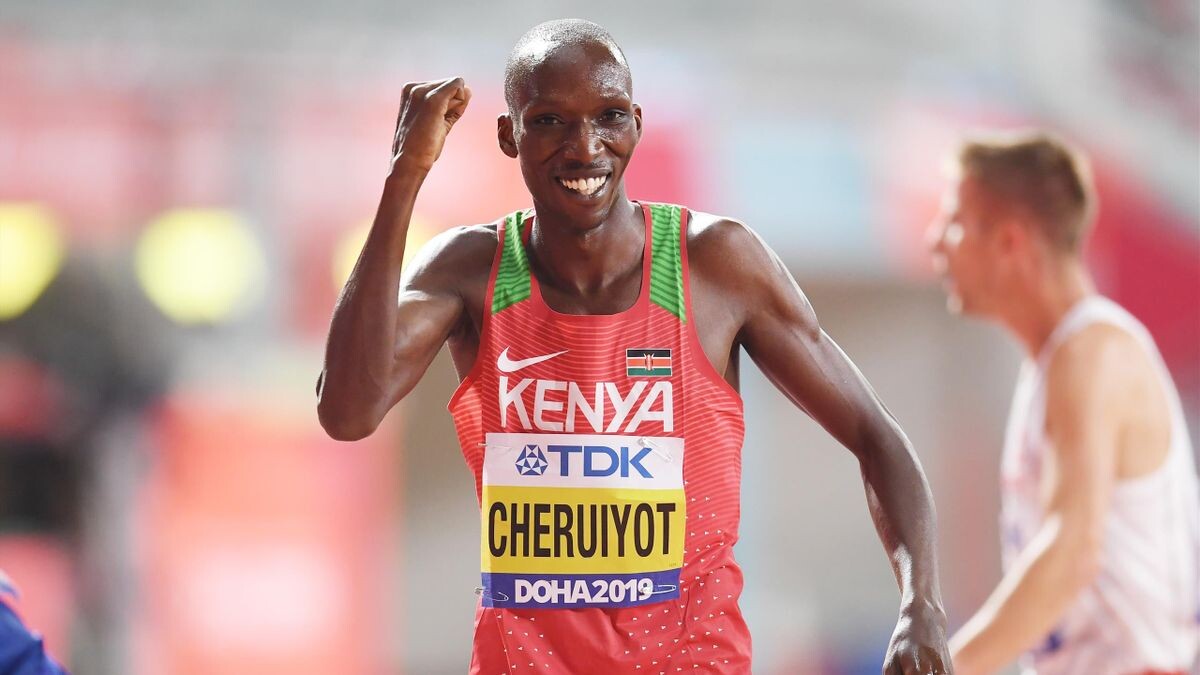
“My plan is to post good results at the 2025 World Championships. This will be my last 1500m after having done it for 10 years,” said Cheruiyot as per The Star.
“I will switch to 5000m or 10000m and then the marathon.”
The 29-year-old’s track record speaks for itself. His first major breakthrough came at the 2017 World Championships in London, where he secured a silver medal with a time of 3:33.99, finishing just behind fellow Kenyan Elijah Manang’oi.
Cheruiyot elevated his game in Doha 2019, claiming the world title in 3:29.26, solidifying his place among the sport’s elite.
Cheruiyot also earned a silver medal at the Tokyo 2020 Olympics, clocking 3:29.01 in a tightly contested race won by Norway’s Jakob Ingebrigtsen.
His dominance extended to the Diamond League, where he clinched five titles, and his medal haul includes two silvers each from the Commonwealth Games and African Championships.
However, Cheruiyot’s journey has not been without challenges. In Budapest 2023, he suffered a tendon injury that sidelined him for nine months.
Despite the setback, he returned to competitive form, surprising even himself by securing a spot at the 2024 Paris Olympics.
“This season was good for me. Despite tearing both my tendons last year, I am happy I came back strong,” he reflected.
“I started my training later than anyone. Making it to the Olympics surprised me; I did not run with confidence at the trials.”
While Paris didn’t go as planned—Cheruiyot finished 11th in a highly competitive race—he remains optimistic about his future. His focus has shifted to 2024, where he plans to participate in several 10km road races to prepare for his transition.
“I have not done any road race before, but I am hoping to test it next year before Tokyo. I will look for a 10km race to gauge my body,” he explained.
Cheruiyot emphasized the importance of strategic planning with his coach, Bernard Ouma, as he gears up for his sixth World Championships appearance.
“I need to sit down with my coach and plan well on the races I will participate in preparations for the World Championships,” he said.
Having made his global debut in 2015, Cheruiyot’s career has been a mix of highs and lows.
From a seventh-place finish in Beijing to gold in Doha and struggles in recent years, his resilience has been remarkable.
Now, as he nears the twilight of his 1500m career, Cheruiyot is determined to leave on a high note.
His ambition to tackle longer distances and eventually the marathon signals a new chapter for the Kenyan athlete, whose legacy in middle-distance running remains firmly intact.
(11/28/2024) ⚡AMPby Festus Chuma
My three biggest inconveniences as a runner
More often than not, I’m convinced my struggles as a runner make me stick out like a sore thumb. I’m always surprised with the number of athletes who share these experiences and make me feel a little less like an oddball. Here are the three recurring inconveniences I encounter on a regular basis, along with adaptations that have helped me thrive.
1. Eating enough food
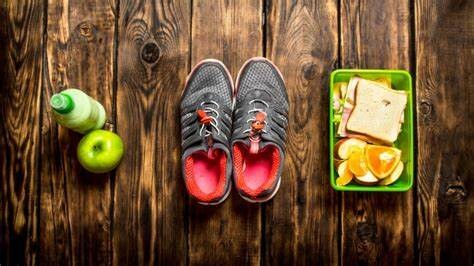
Running is a demanding sport; you’ll expend a lot of energy and need to fuel to replenish those nutrients. As someone with a naturally fast metabolism, it can be tough to keep up with how quickly I get hungry. I found meal prepping has been essential for making sure I’m eating enough, with high-protein meals keeping me full for longer. During peak training months, I’m sometimes eating four meals a day, which can make grocery shopping seem like a full-time job. I also always have a protein bar on hand (I just keep one in my bag at all times) for a post-workout snack or in case of immediate hunger.
Constantly being hungry also makes it difficult to fuel close enough to a race or a workout–I’m hungry, but I don’t want food sitting heavily in my stomach when the pace picks up. I used to follow the two-hour rule, but I’ve slowly trained myself to eat small amounts of food (a bagel, oatmeal or yogurt) closer to the start of my run to ensure I’m not running on empty. Gels and gummies are also perfect for a light, energy-boosting mid-workout snack, without the weight of solid food.

2. Cold hands
Although I have yet to see someone wear gloves while running as often as I do, I know cold extremities are a very common inconvenience among runners. With Raynaud syndrome (decreased blood flow to extremities), even mildly chilly days can make my fingers painfully cold. As fall comes around, you’ll find me with countless pairs of gloves and mittens in my running bag, plus plenty of throw-away gloves for race day. I know–gloves and a tank top isn’t exactly a fashion statement, but I’ve learned to own it.
3. Sweating… a lot
This is something I know all runners deal with, but it can feel excessive when you’re drenched five minutes into your run. It’s easy to compare how much I sweat to my peers, asking myself why I’m the only one changing into clean, dry clothes between workouts. I’ve even wondered if I have hyperhidrosis. Over time, I’ve started to embrace it–after all, it’s just my body doing its job. My solution? Have an extra set of clothes and a sweat towel in my running bag at all times, always drink electrolytes post-workout and never skip deodorant.
(11/27/2024) ⚡AMPby Cameron Ormond
Eliud Kipchoge Foundation lands major financial boost to aid in 2025 developments
The Eliud Kipchoge Foundation has received financial support from a leading sports wearables company to aid in their 2025 executions.
The Eliud Kipchoge Foundation has landed a major boost from COROS, a global company specializing in performance sports wearables.
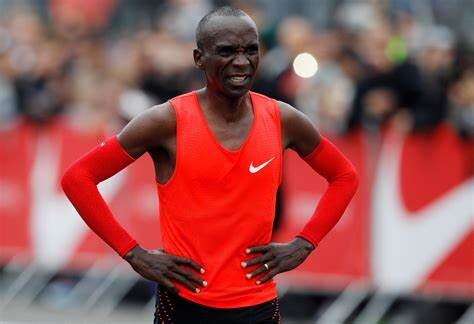
COROS will be running their Black Friday from November 29 to December 3 and announced that the company will donate 5% of all proceeds from direct sales to the Eliud Kipchoge Foundation. The financial boost will come in handy in ensuring Eliud Kipchoge and his team execute their duties diligently in 2025.
The funds will be allocated towards building a new library containing books and resources for individual research and learning. This will be the second library built since the first was constructed in 2022. The library was built for Kapsisiywa Secondary School in Chesumei Sub County, Nandi County, with funding from former President Uhuru Kenyatta. The library currently has 30 computers with internet access.
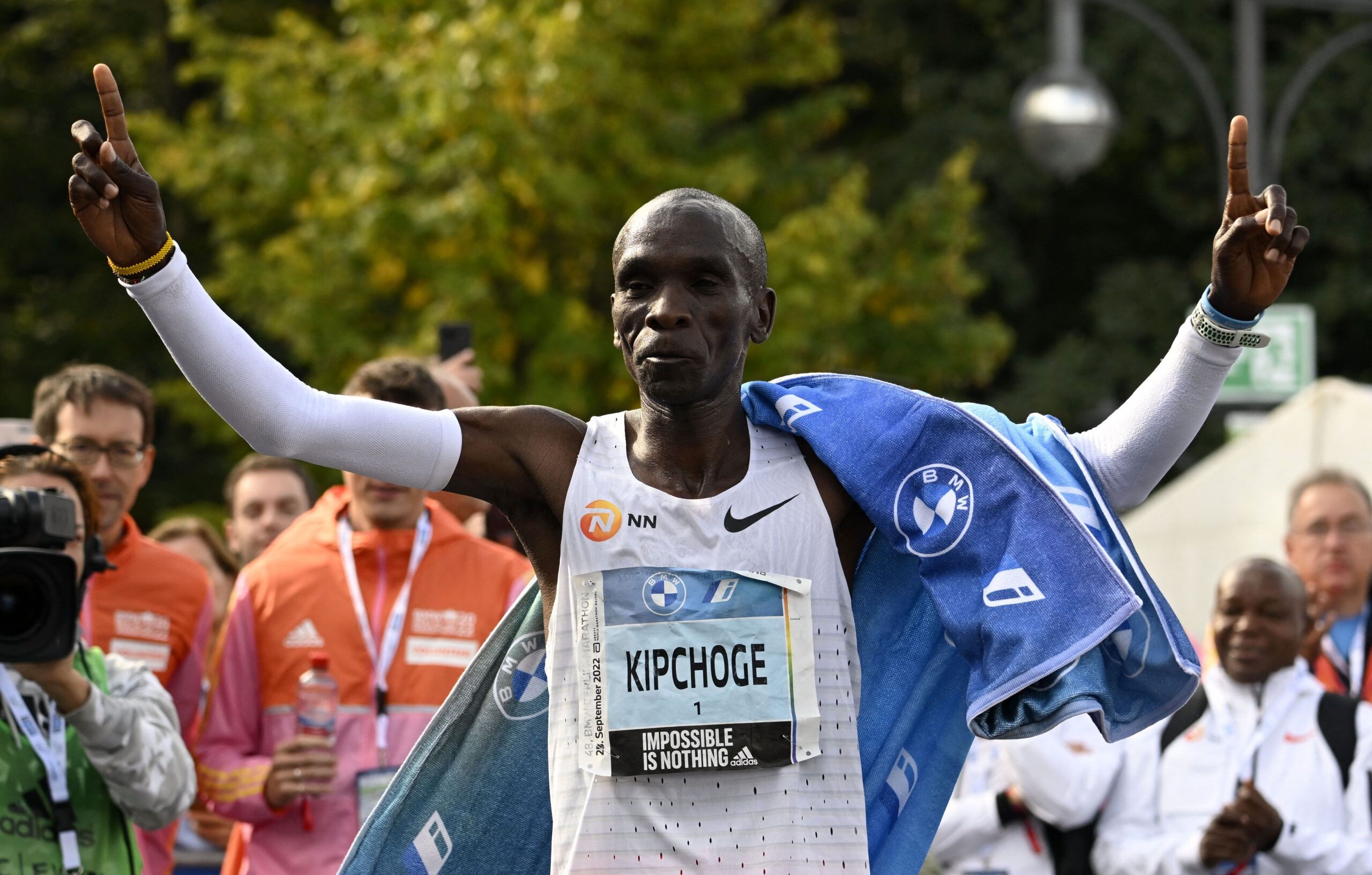
The remaining funds were used to construct 10 classrooms, an administration block, and the extension of a perimeter wall. The new library will be looking to provide a safe community space for young people with COROS customers having a direct impact in fostering educational empowerment.
The funds will also help in the construction of classrooms to host educational sessions for the youth staying around the area. Eliud Kipchoge extended a hand of gratitude to COROS for their charity and once again insisted on the importance of education.
"Growing up in Kenya, I know that access to books and knowledge is not always available to everyone. Libraries open doors to endless possibilities. By building more, we extend knowledge and create lasting change,” the two-time Olympic champion said.
Meanwhile, the foundation is a non-profit organization dedicated to advancing education and environmental sustainability. It was founded in 2020 and has always strived to provide better access to education.
The foundation’s goal is very clear and will be looking to empower the next generation through both education and environmental initiatives.
(11/27/2024) ⚡AMPby Abigael Wafula
2014 Boston Marathon winner to finally receive prize money
10 years after setting the course record, Ethiopia's Buzunesh Deba will be awarded her prize money through the B.A.A.'s new voluntary payments initiative.
On Tuesday, the Boston Athletic Association (B.A.A.), which organizes the Boston Marathon, announced new plans to address prize money discrepancies caused by doping offences over the past 40 years. Starting in January 2025, the B.A.A. will begin issuing voluntary payments to athletes whose results were re-ranked due to disqualifications, dating back to 1986—the year prize money was first introduced.
This announcement is significant for Ethiopian runner Buzunesh Deba and Kenyan athlete Edna Kiplagat, who were both elevated to first place after Kenya’s Rita Jeptoo (2014) and Diana Kipyokei (2021) were disqualified for doping. In Deba’s case, she was originally awarded the second-place prize, but was later recognized as the winner of the 2014 race; she also set the course record of 2:19:59. Despite this, Deba has waited nearly a decade to receive the USD $100,000 owed to her: $75,000 for first place and $25,000 for the course record.
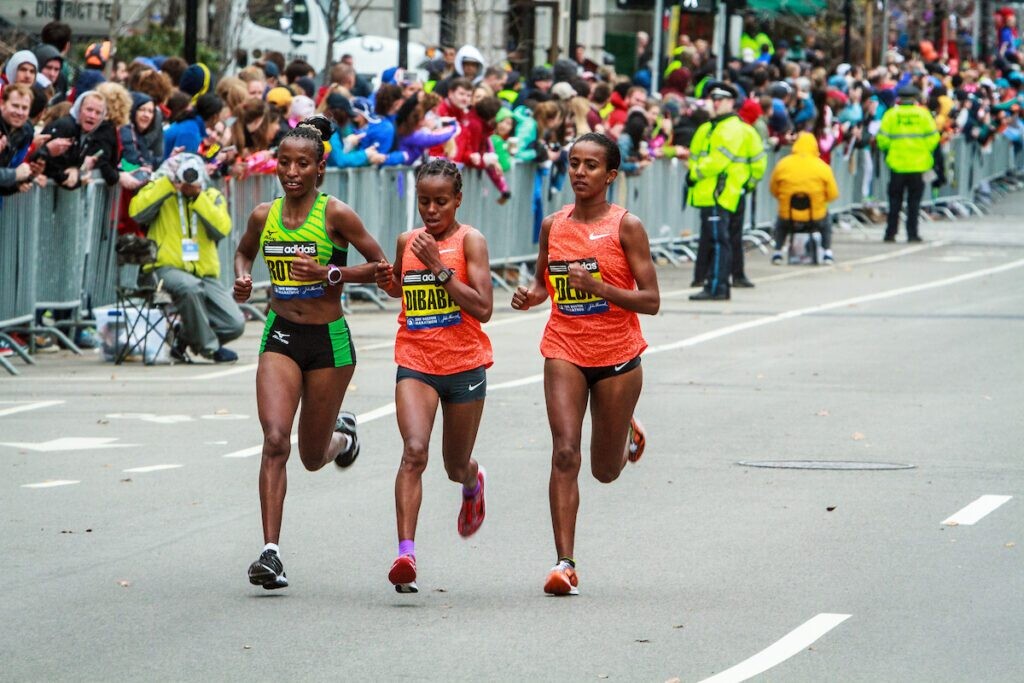
Deba’s payment, set to be issued in January, will be the largest compensation under the B.A.A.’s voluntary payout program. Earlier this year, a Wall Street Journal article put a spotlight on the B.A.A., sharing Deba’s 10-year wait for the prize money. The story caught the attention of Philadelphia businessman Doug Guyer, who sent Deba a USD $75,000 cheque to cover the difference between the first- and second-place prizes.
Jack Fleming, B.A.A. president and CEO said in a press release, “Our initiative aims to ensure that clean athletes are compensated appropriately. While the process to reclaim and redistribute prize money has been challenging, it remains essential to uphold fair competition.”
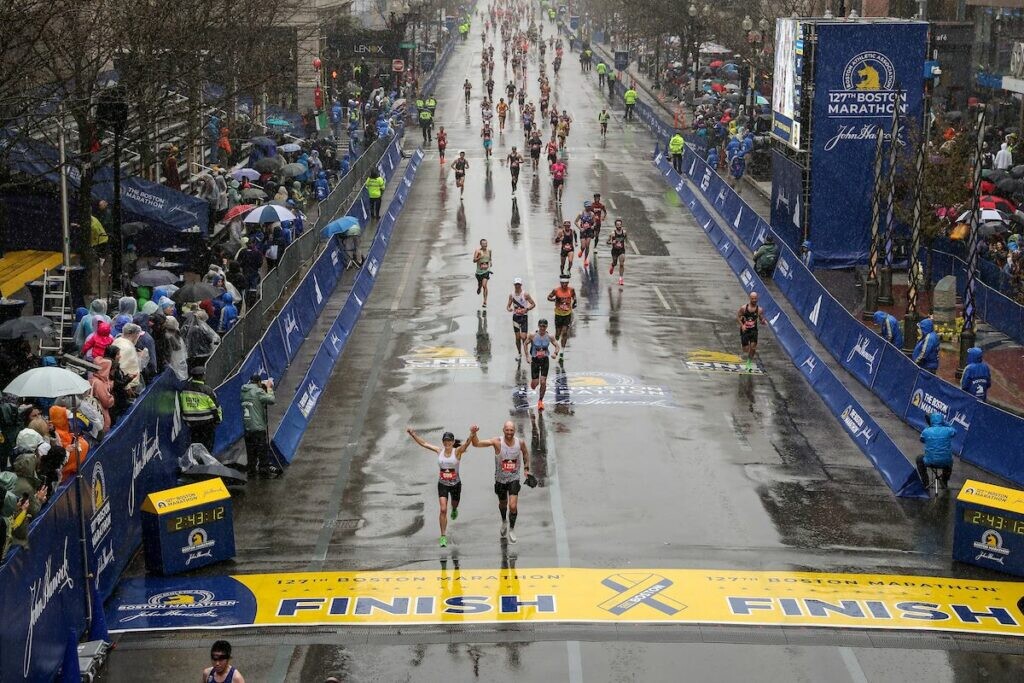
Eighty runners from eight Boston Marathons and nine participants from the Boston 5K event are eligible to receive payments totalling USD $300,000. Athletes found guilty of doping offences at any time will be ineligible for compensation. The B.A.A. says it will seek to reclaim payments from any recipient later disqualified.
The B.A.A. collaborates with global anti-doping organizations, including the Athletics Integrity Unit (AIU), the World Anti-Doping Agency (WADA) and the U.S. Anti-Doping Agency (USADA), to ensure a level playing field at its events. Notably, no male Boston Marathon champion has been stripped of their title for doping.
(11/27/2024) ⚡AMPby Marley Dickinson
Winners presented with live geese at Chinese marathon
Most marathon winners receive a medal, and maybe some prize money, but the 2024 Lu’an Marathon in Anhui, China, stands out for its unique prizes. This year, winners Mathew Kiprotich and Naomi Kakoko, both of Kenya, each received a live goose after breaking the tape.
Kakoko told China’s Jimu News that she was completely shocked by the reward and “wasn’t sure” what to do with it, since she couldn’t bring a live animal on the plane or train she arrived on.

The gift of a live goose is a tradition in the Anhui province, and dates back several centuries. It’s a specialty Anhui white goose, symbolizing fidelity and prosperity. “This is a reward other than the bonus, and it is a little bit of our heart,” said the organizers.
In recent years, the organizing committee has continued this tradition, though it may not consider the difficulty for international athletes to take the geese home. Recently the tradition has been roasted, as the race winners in the last three years have not been from China. However, organizers have stuck to it, saying they cannot predict where the winners will be from.

The winners can keep the goose, sell it, or take it to a restaurant to be slaughtered, stewed and eaten. (Locals will reportedly pay between $7 and $15 for a bird.)
Kiprotich and Kakoko opted to sell their birds. In addition to the live animal, the top three men and women in the marathon are awarded trophies, medals and other prizes.
The Lu’an Marathon isn’t the only race to reward its champions with live animals. The 8.1-kilometre Bulloise Bullfight race in Bulle, Switzerland, awards cattle to its male and female winners. These animals are returned to the farm they came from, but are named after the athletes.
(11/27/2024) ⚡AMPby Festus Chuma
World Athletics considers launching World Treadmill Championships
With an increasing number of virtual events and races taking place in the world of sports, athletics might follow suit. According to the Daily Mail, in an effort to grow the virtual running scene and appeal to the millions of daily gym treadmill runners, World Athletics has proposed a World Treadmill Championships.
In the past few years, integrating tech and indoor exercise equipment into sports has become increasingly popular. Cycling, rowing and triathlon have already seen success in their global championships that take place using indoor exercise equipment to simulate virtual races.
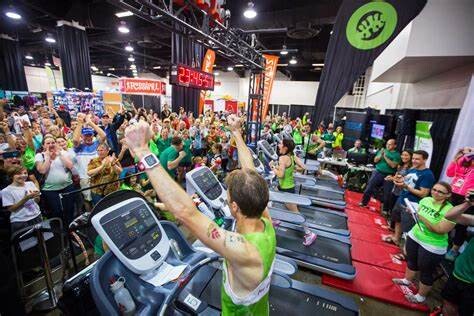
World Athletics also hopes to embrace these technological advancements and aim to attract new audiences. “You might have to watch this space, but ultimately, why not?’ World Athletics President Sebastian Coe told Mail Sport. “We have got to take our sport to where people are. That is crucial. Whether it is through virtual, whether it is through Esports, whether it is through treadmill, these are all the things that we want to really explore.”
Since the running boom–the exponential growth in running’s popularity since the COVID-19 pandemic–World Athletics recognizes that now is the perfect time to increase the opportunities for this audience. World Athletics CEO Jon Ridgeon revealed that the governing body is working with a tech partner to enter and develop the virtual running scene. Fans speculate that the partner might be Zwift, an online cycling and running program that already hosts the UCI Cycling Esports World Championships.
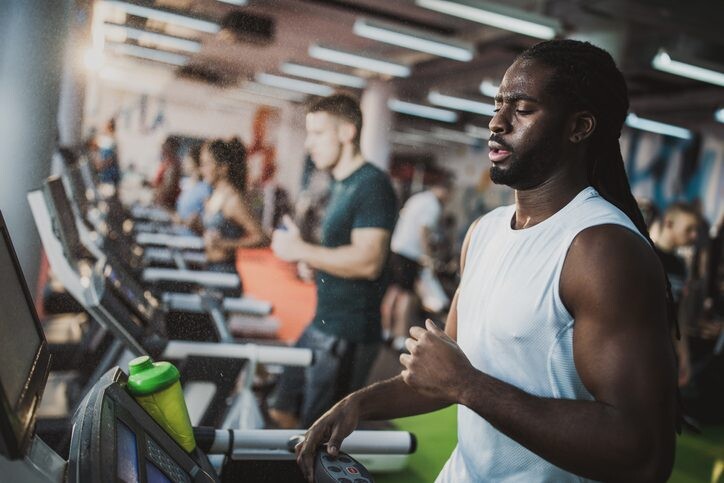
The announcement has received backlash on social media. “Our Global Governing body is really trying to make Wii sports championships. What are we doing man?” American Olympic hurdler Freddie Crittenden commented on Athletics Weekly’s Instagram post. Some users argue that the sport would be more popular if made more accessible for viewers, while others comment that the announcement feels like an April Fool’s joke.
In fact, the concept was originally proposed by Canadian Running’s own Marley Dickinson last year as an April Fool’s joke.
(11/26/2024) ⚡AMPby Cameron Ormond
Keys to Achieving an Incredible Marathon Finish in Less Than 4 Hours
There is one achievement that everyone who takes part in running events can agree is the bar everyone looks to hit; completing it in under four hours.
There is a lot of preparation that goes into averaging 9:09 for 26.2 miles and it is not an easy feat. Full commitment is needed as it will take a lot, both physically and mentally, to get your body into a position to achieve that lofty goal.
People who have completed half-marathons should be aware that things don’t always translate the same to full marathons. Greg Laraia, a running coach in New York City at Motiv, says it is “a little bit more tricky.”
“You have to rely on nutrition, strength, your mental capacity, and a million other factors that running entails before you can say, ‘hey, I'm just going to go out and run the half marathon in two hours, and then do it again,’” said the coach.
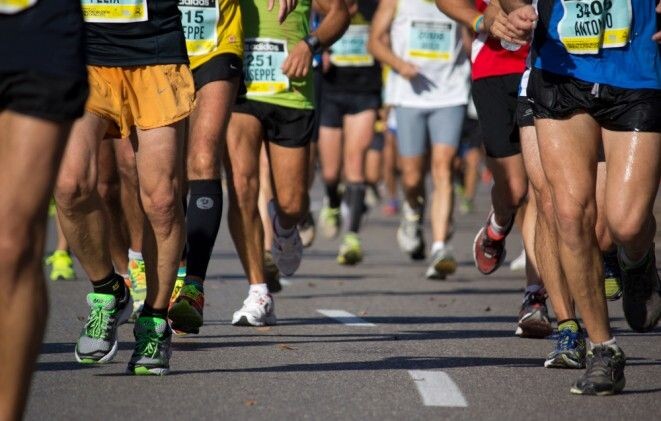
Over at Runners World, Caitlin Carlson revealed what coaches and running professionals recommend to help break the 4-hour mark while running a marathon. For starters, it takes some self-reflection.
Going back and looking at previous races to see where you may have fallen short is key to reaching that next level. Is the necessary work, such as speed and strength training or mobility and recovery work, being put in?
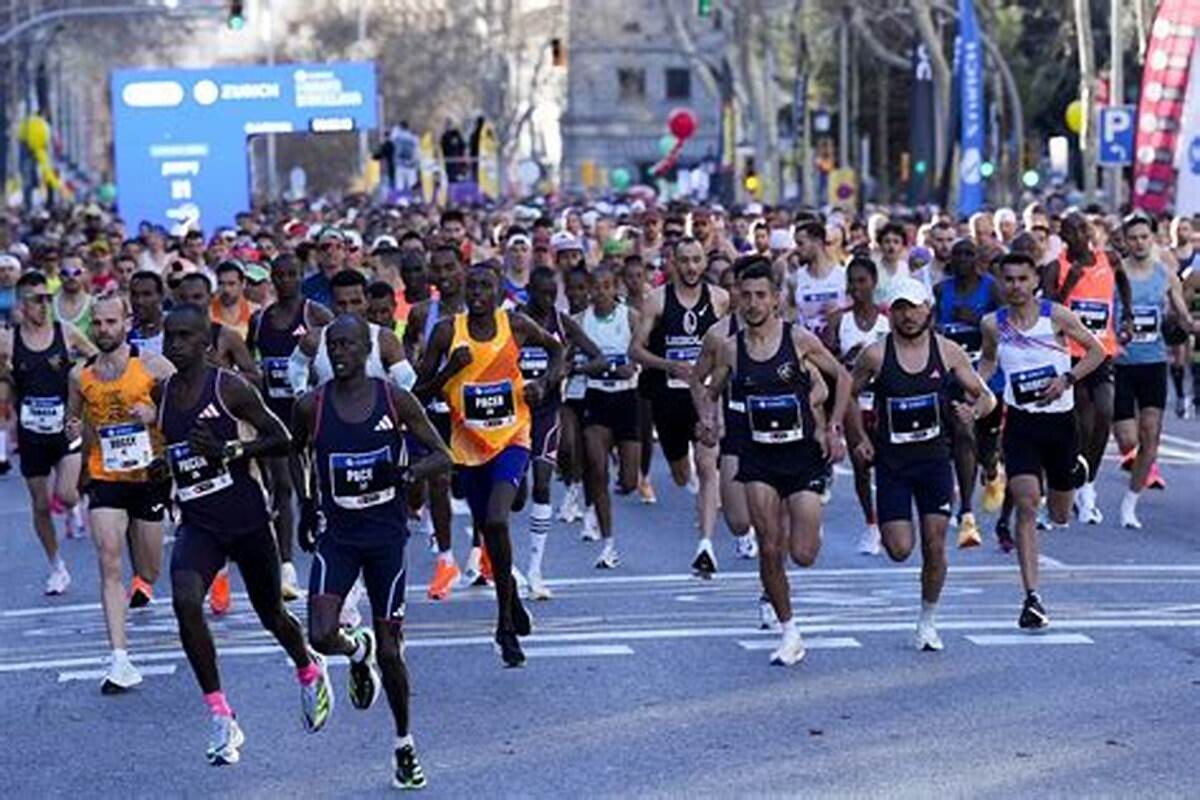
If there are pieces missing, those are easy low hanging fruits where you can add those things in and you should notice a big difference,” Laraia says.
During preparation, it is imperative to put your body through different levels of effort. Sometimes while training, people will get stuck in a rut of wanting to challenge themselves a little bit when it comes to pacing, but not too much.
This is where professionals separate themselves from amateurs and casual runners. They have a distinct plan every week, knowing that mixing in easier days with tougher ones will get your body where it needs to be.
“I was in my early 20s for the first two and I really didn’t know what I was doing training and fueling-wise, thus, both races went terribly with horrible zonks at miles 18 to 20,” said Marie Gundersen Ishpujani, who broke the 4-hour mark at the 2011 New York City Marathon in her third attempt.
It is a good way for a person to learn just how much their body is capable of. The same can be achieved by pushing beyond 20 miles in training leading up to the marathon.
How can you complete a sub-4 hour marathon if you aren’t training those distances? But, this is where having a coach helps because novices to the sport could actually hurt themselves if they are not preparing correctly.
“If you’ve done three or four marathons and you’re trying to get this sub-four-hour marathon, your body’s probably pretty strong and pretty physically able to handle the 22 and 24 miles,” said Jimmy Anderson, who is 51 years old with 27 marathons under his belt; 25 of which he broke the 4-hour mark in.
Last but certainly not least, recovery needs to be optimized. There are many different things people can do to ensure their body gets back to as close to 100 percent healthy as possible and is ready to perform on marathon day.
Cold plunges are enjoyed by some, while foam rolling and stretching are incorporated by others.
(11/26/2024) ⚡AMPby Kenneth Teape
Ugandan distance star stands up against gender-based violence
Ugandan middle-distance runner Halimah Nakaayi, the 2019 800m world champion, is using her platform to raise awareness about gender-based violence in East Africa. In a powerful video released by Uganda Athletics on UN’s International Day for the Elimination of Violence Against Women (Nov. 25), Nakaayi underlines the struggles many women (including herself) face outside of running.
The video portrays Nakaayi training, with the message: “On the track, she runs for gold… At home, she runs for her life.” It also depicts a man threatening her with violence–a threat millions of women endure. According to global statistics, one in three women will experience gender-based violence in their lifetime. The campaign, supported by the Ugandan Olympic Athletes Commission, aims to spark conversations and push for systemic change to protect women and girls.
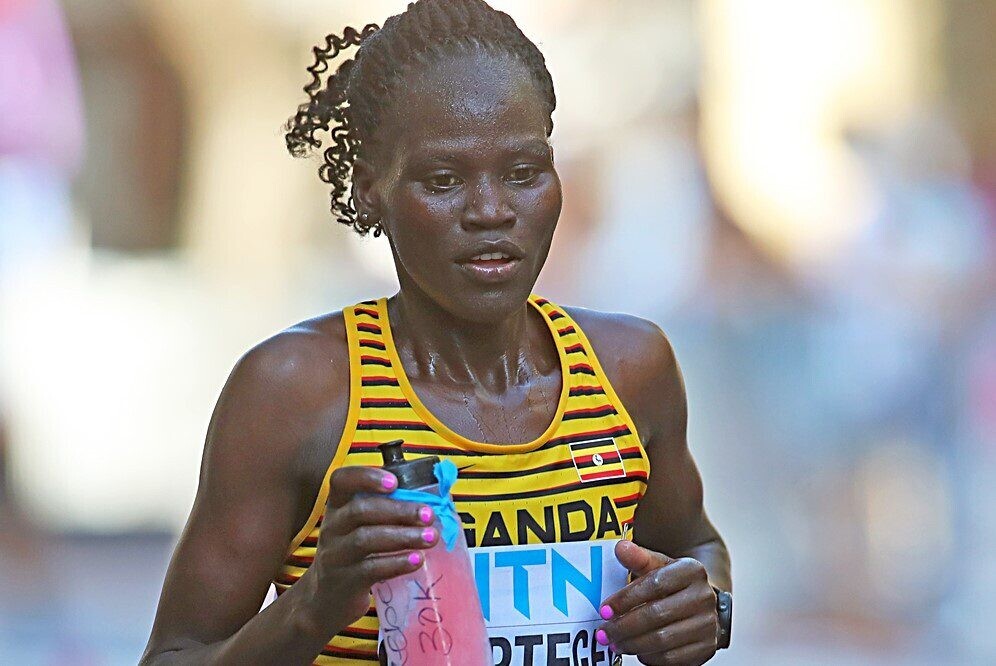
This campaign comes in the wake of a shocking incident involving Ugandan Olympic marathoner Rebecca Cheptegei. In August, Cheptegei was attacked by her ex-boyfriend, Dickson Ndiema Marangach, who doused her in gasoline and set her on fire. She succumbed to her injuries on Sept. 5, with burns to 80 per cent of her body. Ndiema also died, days later, from burns sustained during the attack. The incident devastated the athletics community and highlighted the urgent need to address domestic violence in East Africa.
In 2021, Kenya’s Agnes Tirop, a two-time 10,000m world championship bronze medalist, was found stabbed to death at her home. Her husband was arrested and charged with her murder. These incidents underscore the prevalence of violence against women, including among some of the world’s most high-profile athletes.
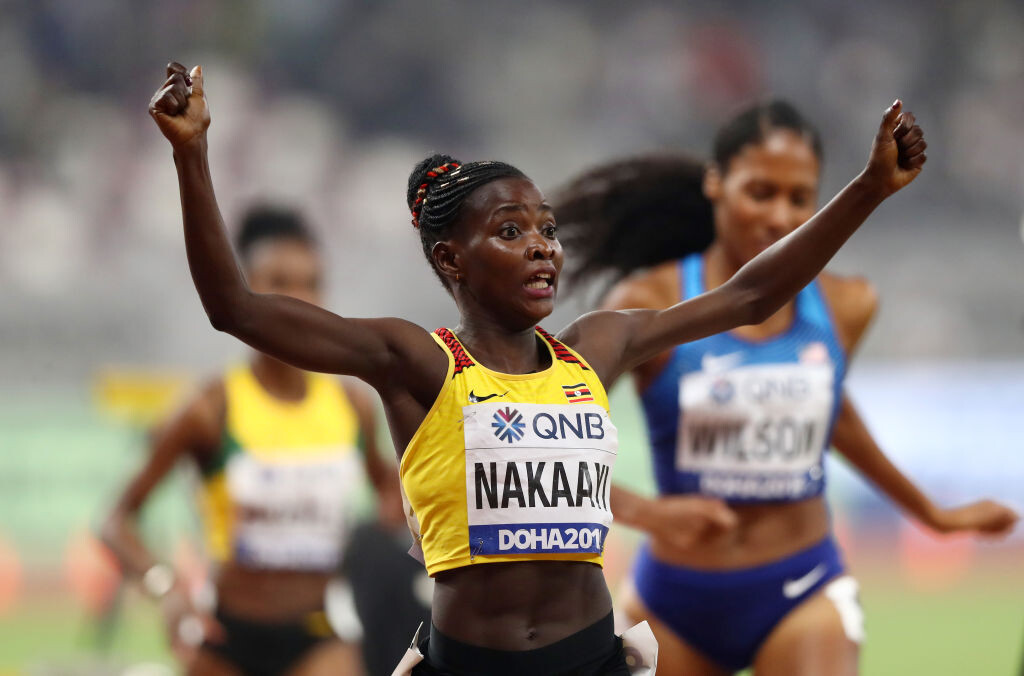
Nakaayi’s commitment to advocacy stands beyond her athletic career. Fans have praised her for standing up in a region where gender-based issues are often underreported. The campaign, launched by the Ugandan Olympic Athletes Commission, serves as a reminder of the ongoing fight against femicide and gender-based violence, and urges communities and governments to take stronger action.
(11/26/2024) ⚡AMPby Marley Dickinson
Valencia marathon participants promised millions if they break Kelvin Kiptum's record
The 2024 Valencia marathon will take place this weekend as runners return to one of the fastest courses in the world.
It is in Valencia that the late Kelvin Kiptum introduced himself to the world by running the fastest-ever time clocked by a debutant after he used 2:01:53 in 2022.
Valencia Marathon 2024 start list

This year, 2023 champion Sisay Lemma will headline the stacked list. The Ethiopian will be looking to win a second marathon this year after winning in Boston in March.
His time of 2:01:48 to win in Valencia last year is the sixth-fastest time in history, making him an overwhelming favorite on Sunday.
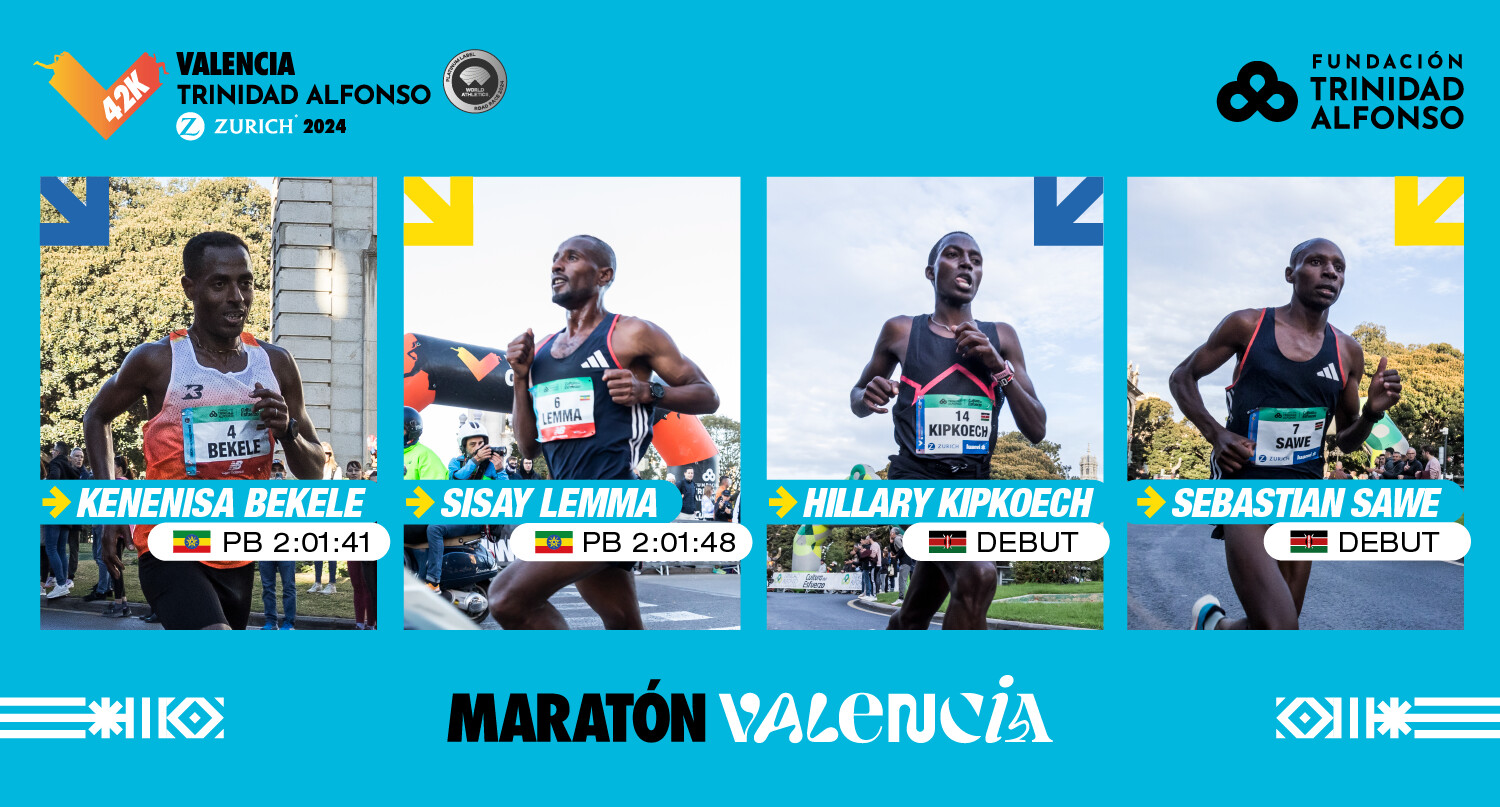
Kenenisa Bekele will also be part of the start list. Bekele is the third-fastest marathoner in history. The 42-year-old finished a distant 39th at the 2024 Paris Olympics, and redemption will be on his mind.
Others include world half marathon champion Sebastian Sawe and two-time Tokyo marathon winner Birhanu Legese.
The organizers have made the race sweeter by introducing a raft of monetary awards if certain records are broken.
Valencia Marathon 2024 prize money
Athletes who break the course record of 2:01:48 (men's) and 2:14:58 (women's) will win €30,000 (approximately 4 million Kenya shillings).
Meanwhile, athletes who break the men's and women's marathon world records will get a whooping €1,000,000 (approximately 135 million Kenya shillings).
What is the men's marathon world record?
The late Kiptum is the current world record holder. He clocked 2:00:35 to win the 2023 Chicago Marathon.
The website indicates that the women's time the participants need to beat is 2:11:53 despite Ruth Chepng'etich lowering it to 2:09:56 last month in Chicago. Chepng'etich's record is, however, yet to be ratified by World Athletics.
The 2:11:53 mentioned therein is the former world record set by Ethiopian Tigst Assefa. Evaline Chirchir is the only Kenyan registered in the women's race.
(11/26/2024) ⚡AMPby Richard Nutakor
VALENCIA TRINIDAD ALFONSO
The Trinidad Alfonso EDP Valencia Marathon is held annually in the historic city of Valencia which, with its entirely flat circuit and perfect November temperature, averaging between 12-17 degrees, represents the ideal setting for hosting such a long-distance sporting challenge. This, coupled with the most incomparable of settings, makes the Valencia Marathon, Valencia, one of the most important events in...
more...'It kills me inside'- British runner on how competing at the dirtiest race in Olympic history forced her to retire
The 2006 Commonwealth Games 1500m champion explained how competing in the dirtiest race in history forced her into early retirement.
Retired English middle-distance runner Lisa Dobriskey has detailed how having to compete against runners who cheat fueled her desire to retire before she was ready.
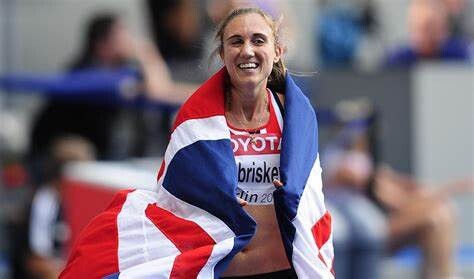
The former Commonwealth Games champion recounted the 1500m final race at the London 2012 Olympic Games where almost every runner was banned for doping. The winner of the race, Asli Cakir Alptekin was banned in 2017, for a third-time offence, this time for life.
The second-place finisher, Gamze Bulut was also banned for four years in 2016, meaning the athlete who finished third at the time, Maryam Yusuf Jamal, was elevated to first place. Tatyana Tomashova who finished fourth was banned for two years in 2008.
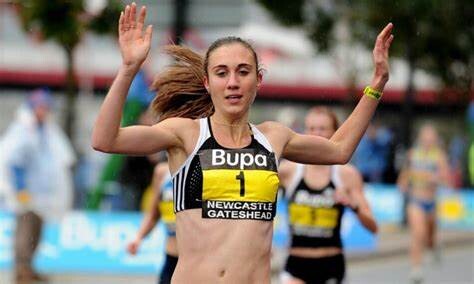
Abeba Aregawi who finished fifth was suspended in 2016 but that was lifted. Shannon Rowbury was elevated to third place in the race. Natallia Kareiva was also banned for two years in 2014 while Lucia Klocova was since elevated to fourth. Ekaterina Kostetskaya was also banned for two years in 2014 with Lisa Dobriskey now elevated to fifth-place. Laura Weightman, Hellen Obiri and Morgan Uceny were also in that race.
Lisa Dobriskey revealed that athletes constantly cheating impacted her career and she opted to leave other than having to constantly fight for justice and nothing right seemed to be happening.
“Trying to get back I thought, ‘What’s the point?’ I lost my heart and it played a big part of my decision to walk away. I have never, ever got over it. There’s not a day that goes by when I don’t think about it. It kills me inside,” Dobriskey said as per The Times.
“I’m not someone who makes that sort of comment lightly. I knew my sport so well and I knew what I was saying was grounded and true. It was a case of, ‘I’m telling you these people are cheating,’ but my voice just got crushed and I was made to look foolish and bitter. From the outside I can understand I looked spoilt, but it took courage to speak out, and that got trampled on.”
The doping menace hurt her so bad that she admitted she could not watch the Paris Olympic Games. Dobriskey disclosed that she never wanted to stop running but her body had had enough and was not going to condone that.
Even after a series of attempts, she could not get herself to get back on track since it was mentally draining. She has lost a lot of faith in what the future holds when it comes to track and field as she believes the game is rigged.
“I just can’t. It hurts so much. I didn’t want to stop running but my body gave up. I tried to get back to watching but it’s just too painful and makes me spiral and get in a mess mentally. Now 2012 feels almost comical. I was fifth but never finished fifth,” she said.
“I just don’t know. It’s hard to trust a system that let you down so many times. I’m detached from it now. I’ve moved on.”
(11/25/2024) ⚡AMPby Abigael Wafula
Pro tips for your first ultra
"It’s a long way. Get comfy being uncomfy. And smile," says Australian ultra-trail pro Lucy Bartholomew.
When pro ultra-trail runner Lucy Bartholomew opened her social media to questions recently, she was met with a flood of queries from runners preparing for their first 100K or 100-mile adventure. Her advice wasn’t just practical—it was a masterclass in mindset, offering wisdom that will resonate with anyone tackling a challenging race, no matter the distance. Here’s how Bartholomew’s approach could help you crush your goals while enjoying the journey.
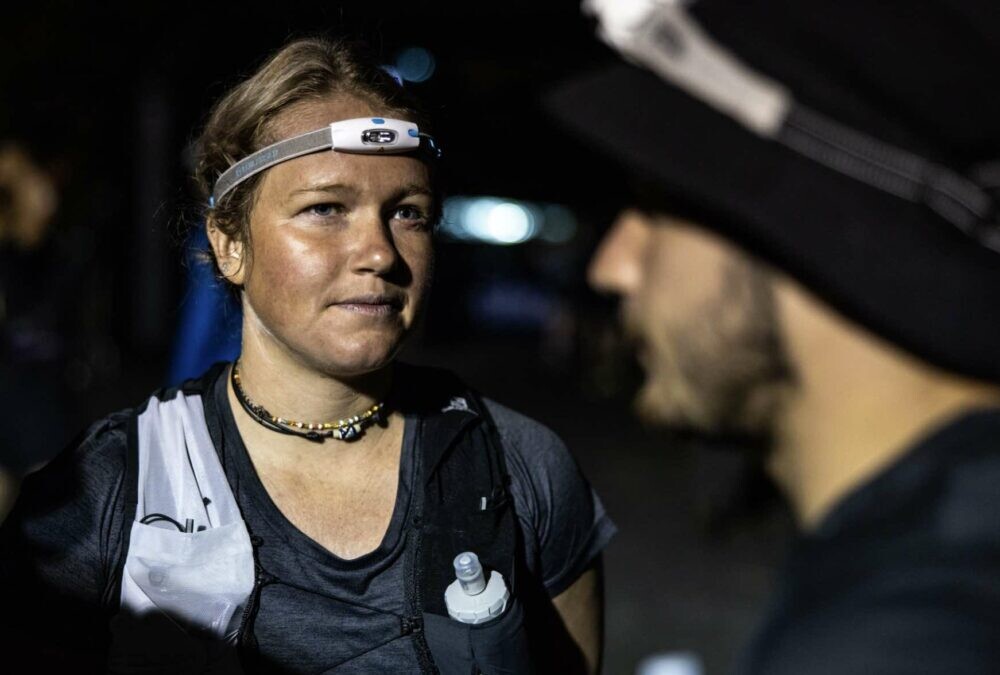
Curiosity and gratitude
Bartholomew believes perspective is key to a good day on trails. “What a privilege/What a way to spend a day (and night!)/What a thing for your body to allow you to do,” she shares. Shifting your mindset from obligation to opportunity can reframe even the toughest sections of a race.
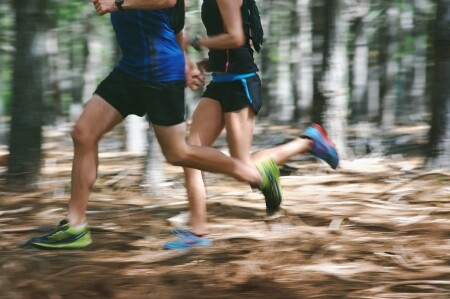
She also has powerful advice on staying present: “Take it one step at a time. The impermanence of each moment when running is my fav part. Stay curious. Stay open-minded.” Ultras are long, unpredictable and transformative. Embracing the unknown with curiosity can turn challenges into adventures.
Gratitude is another key to a strong performance and a fulfilling experience. “Give energy to others and you get energy back. Say thank you to the vollies [volunteers], your crew, your legs,” Bartholomew says. From aid station volunteers to cheering spectators, acknowledging the support around you creates a positive feedback loop.
Effort, attitude and adaptability
When it comes to race-day strategy, Bartholomew keeps it simple: “Nibble nibble sip sip. Keep that energy flow in.” Consistent fuelling and hydration are non-negotiable during ultras. Pair this with frequent mental and physical check-ins. “Do little checks of toes to your nose if there is anything you need to adjust, especially approaching checkpoints,” she advises. A small fix early can prevent a big issue later.
Mindset plays a monumental role, too. “You’ve got two things you can control; your effort and your attitude. They can be your biggest superpower and your worst enemy. Pick.” Choosing to manage these factors wisely can help you stay in control, even when everything else feels uncertain.
Celebrate the journey
Ultras are about more than just finishing—they’re about embracing the discomfort and finding joy along the way. “It’s a long way. Get comfy being uncomfy. And smile,” Bartholomew suggests.
And when the race is over? Don’t rush to the next goal—take time to acknowledge what you’ve achieved. “Oh and when you’re done, don’t let it slide by; wrap yourself in it. You don’t need a next—you have a now. You dared to do something that is scary, takes guts, shows belief, exemplifies courage and highlights character. Steep in that achievement, regardless of result,” Bartholomew says. “What a sport!”
(11/25/2024) ⚡AMPby Keeley Milne
Kenyans Samuel and Dorine win the firenze marathon
There were 12 thousand marathon runners who ran the Florence Marathon. Won by the Kenyan Samuel Kiplimo Naibei with a time of 2h12'51". And the first woman was also Kenyan: Dorine Jerop Murmomen in 2h27'01". Second among the men was Burundian Jean Marie Bukuru, who climbed from sixth position, to the finish line in 2h16'22" shoulder to shoulder and with the same time as the Kenyan Hyllry Biwott Chemweno.
First Italian, and fifth overall, Hicham Boufars in 2h18'24". Second among the women Lucy Chepoghon Chelele in 2h27'18", followed by Hellen Chepkorir in 2h27'59". First Italian, and fifth overall, Maria Gorette Subano, who improves on last year's sixth place, when she was making her debut on the marathon distance, finishing in 2h39'59".
The start at 8.30 am: with the president of the Tuscany Region, Eugenio Giani, while it was the first time for Sara Funaro, as mayor, to officially start the marathon.
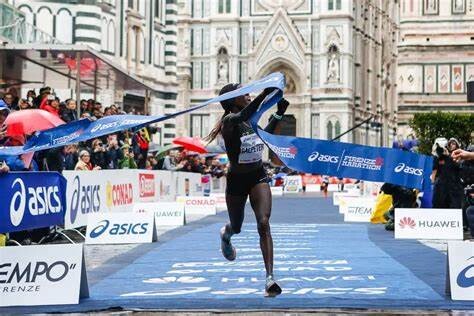
"Thanks to those who have made this event possible, it is a great honor for Tuscany to host the second largest Italian marathon in terms of number - said Giani -. It is with great commitment and satisfaction that we work so that this race takes place in the city center, testifying that the marriage between sport and culture is possible".
For Funaro it was "a great emotion the start of the 40th Firenze Marathon. It is truly an incredible edition, together with the 10km there are over 11 thousand registered and participants from over 90 nations, a river of wonderful people in our city. A big thank you goes to the organizers and the many volunteers who are the soul of the Florence Marathon".
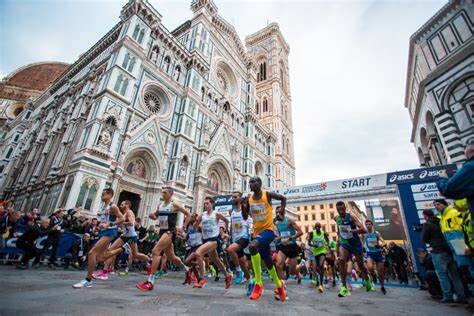
In the parterre of the start and finish area also the councilor for sport Letizia Perini and the president of the City Council Cosimo Guccione. Five minutes from the official start, departure for the MaratonAbili while at the same time the start of the first edition of the 10K FirenzeMarathon took place from via Tornabuoni. During the morning, the commander of the municipal police Paola Pieri was awarded with a plaque who, after having collaborated for the success of many editions of the FlorenceMarathon, retires for retirement.
Four athletes who participated in the first edition, in 1984, were also awarded with a plaque. Plaque also for Andrea Galbiati, marathon runner and president of MonzaMarathonTeam, friend of the Firenze Marathon, at his 15th continuous participation.
"Whether it is thanks to this special birthday or to the hearts of 11 thousand marathon runners who made this city vibrate, the emotions of this edition and the satisfaction of us organizers are on edge, we are very happy to have welcomed thousands of athletes to the finish line - the final thought of Giancarlo Romiti, on behalf of the organizing committee -. The first was also good for the 10K Firenze Marathon with over a thousand athletes who enjoyed our extraordinary historic center. For us organizers, the Florence Marathon began a year earlier, when, in the wake of the enthusiasm of the edition that has ended, we gathered the closeness of partners and institutions to embark on the new path. See you next year".
(11/25/2024) ⚡AMPby Ernesto Giusti
Firenze Marathon
This is Firenze (Florence) Marathon! Along the way you will be surrounded by centuries of art, history and culture, a unique emotion that can only be experienced by those who run in Florence. Thousands of sports people and enthusiasts from all over the world come to participate in this classic race on the last Sunday in November. The route takes...
more...Katie Florio, William Loevner win 2024 Philadelphia Marathon elite races
William Loevner, 27, of Pittsburgh, won the Philadelphia Marathon men's race in 2:16:12 on Sunday.
Mulgeta Birhanu Feyissa, of Washington, Alabama, was second in the 26.2-mile race in 2:16:38, and Rahal Bouchfar was third in 2:16:55, according to unofficial results.
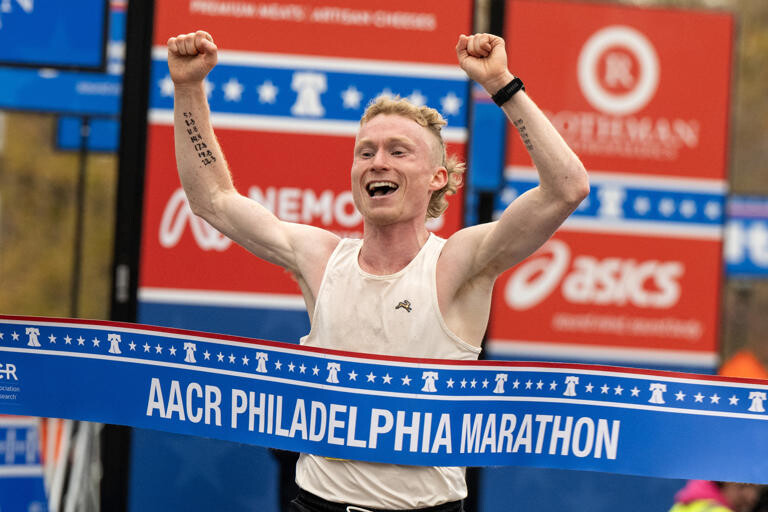
In the women's race, Katie Florio, 31, of Philadelphia, won in 2:32:42. Aberu Mekuria Zennebe, of Washington, D.C., was second in 2:33:26, and Elizabeth Chikotas was third in 2:35:28.
Florio runs for Liberty Track Club, a Philadelphia-based elite running team sponsored by Oiselle, an apparel brand.

"It feels amazing, I'm honestly still in shock," Loevner said after the race. "I can't believe it, but I'm just proud of all the hard work I put in, and I ran to the best of my ability, and that was the win today, so I couldn't be happier."
The top Philadelphian on the men's side was David Troy, who finished in 2:22:58.
(11/25/2024) ⚡AMPby Laura Fay
Philadelphia Marathon and Half
Have the time of your life in 2022 completing 13.11 miles! Runners will start along the Benjamin Franklin Parkway in the cultural Museum District and wind through Philadelphia’s most scenic and historic neighborhoods. From the history-steeped streets of Old City, through one of the liveliest stretches of Center City, across the Schuylkill River...
more...Turn up the pre-run tunes to banish mental fatigue, science says
We all know that music can give us that extra boost to pick up the pace, but here’s the surprising part: music doesn’t just motivate us—it actually tricks our brains. New research from the University of Edinburgh suggests that cranking up your favourite playlist might be the secret to powering through a mentally tough run. The study, published in the Journal of Human Sport and Exercise, found that listening to self-selected, high-energy music can help combat mental fatigue, letting runners keep their performance levels up even when their minds feel wiped out. Here’s what you need to know to harness the hidden power of your favourite playlist.
Some research suggests that music can help runners improve their cadence, leading to a more efficient pace and fewer injuries. But music might just be the key to unlocking next-level endurance by easing mental fatigue and making even tough runs feel manageable.

Testing the power of motivational music
Researchers recruited 18 fitness fans and split them into two groups. Each group faced a mentally challenging, 30-minute cognitive test designed to leave them feeling mentally fatigued. One group took on an interval running workout afterward, while the other tackled a 5K time trial. Each runner completed their workout twice: once with music and once without. But the playlists weren’t just random—participants handpicked tracks they found especially motivating, rating them on factors like beat, melody and tempo. Songs included motivational tunes like “Eye of the Tiger” by Survivor and “Run This Town” by Jay-Z.
The results? When runners were able to listen to their self-selected playlists after the mentally taxing task, they performed just as well as they did when they weren’t fatigued. Interval runners with music performed better than those running in silence, and those running the 5K saw a small, but notable, improvement in their times.
How music might help
According to the researchers, these improvements might come from music’s ability to alter perception. By drowning out the discomfort and making the exercise feel less taxing, tunes can help mentally fatigued runners push through at higher intensities. As Dr. Shaun Phillips, lead author of the study, puts it: “The findings indicate that listening to self-selected motivational music may be a useful strategy to help active people improve their endurance running capacity and performance when mentally fatigued.”
Researchers say future studies could explore how music impacts performance in different settings—whether it’s race-day intensity or a casual run through the neighbourhood—and how it affects a wider range of runners.
For now, let your playlist do the work. The next time your brain feels zapped after a long day of meetings, hit play on those favourite tracks. They might not only lift your pace, but also push aside lingering mental stress and make those miles fly by.
(11/24/2024) ⚡AMPRunners need to be smarter about being visible in the dark
In many parts of North America, it’s now dark by 5 p.m., making it difficult or impossible to squeeze in your run in daylight. Runners who don’t drive might not realize how challenging it is for drivers to spot pedestrians in the dark–especially those wearing dark clothing. The person operating the dangerous, fast-moving vehicle must always yield to pedestrians, but is your safety worth gambling that they will see you in time to avoid hitting you?
Many runners do wear reflective gear or a light source, such as a headlamp or arm light. Still, according to Statistics Canada, in 21 per cent of pedestrian fatalities occurring at night between 2018 and 2020, the victim was wearing dark clothing.


Many runners will argue that they are not the one operating the dangerous machine, driving too fast or not paying attention, but runners should always take care to make themselves visible. Dark clothing absorbs light, making runners and walkers difficult, if not impossible, to see in darkness. Just because you have the right of way, doesn’t mean vehicles can see you. Wearing reflective gear is an easy way to meet drivers in the middle and increase your chances of staying safe. (Wearing a light that visible from angles is best, as it can be seen from any direction; reflective gear is also good, but is only effective when illuminated by a light source.)
Safety is a team effort
As both a runner and a driver, I can see the issue from both sides. My instincts make me extra cautious when approaching intersections and crosswalks, whether I’m on foot or driving.
I’ve also been in the position where I’m driving in the dark (with my lights on and at the speed limit), and only see a pedestrian in dark clothing emerge when I’m already very close. Even driving carefully with full visibility and plenty of time to stop, it still gives me a scare.
Mandates for workers endangered by vehicles
The Occupational Health and Safety regulations in all provinces and territories in Canada have mandates in place for workers exposed to the danger of moving vehicles or heavy equipment. Workers must wear high-visibility apparel (typically fluorescent orange or yellow vests) during both daytime and nighttime hours, with the addition of retro-reflective strips at night or in conditions with poor visibility. The laws are in place to make workers easier to see, thus helping prevent vehicular accidents. When runners are exposed to the danger of moving vehicles, it’s not any different. (Maybe runners should be mandated to wear high-visibility clothing as well?)
No, pedestrians are not at fault if they are hit by a car when running alongside or crossing the street. But they should be diligent with taking steps to enforce their own safety where possible–because why not? Wearing some sort of high-visibility gear at night to help drivers see them will do nothing except increase their safety.
(11/24/2024) ⚡AMPStrava users overwhelmed by notifications bug
If you’re one of the millions of Strava users who thought their app glitched after an avalanche of push notifications from people you forgot you followed, rest assured: your app is not broken. On Tuesday, Strava had a “Friends Activities,” a notification bug that alerted users every time someone they followed completed an activity.
From runs and rides to swims and walks, Strava is eager to notify you every time your connections move. Cue the flurry of notifications like: “Your friend just finished a ride!”, “Your friend just completed a run!”, or “Your friend crossed the street!” And don’t forget to give Kudos!According to Strava, all users experienced a bug this morning, (which has now been resolved). While the bug was praised with good intentions, users reacted negatively to it, finding the sheer volume of notifications overwhelming.

While it’s great to celebrate your friends’ accomplishments, not everyone appreciates their phone lighting up with 20+ alerts (especially those who follow triathletes, who log multiple activities a day). It didn’t take long for Strava users to take to X (formerly Twitter), with many questioning whether the app was broken or why they were suddenly bombarded with updates. Strava Support responded, advising users to adjust their notifications settings to regain control.How to turn off “friend” notifications
Open the Strava app.
Navigate to Settings.
Go to Push Notifications.
Under Friends, toggle off Friends Activities.
You’ll thank us later.
(11/24/2024) ⚡AMPThe Evolution of Marathon Running: A Kenyan Perspective
I can still vividly remember when 2:08:32 in the marathon seemed like an unbreakable barrier. Derek Clayton of Australia set this world record back in 1969 at the Antwerp Marathon—a time so remarkable that it stood for nearly 12 years. Now, hundreds of runners have far surpassed that mark. Today, running a sub-2:05 marathon has become almost routine, particularly for athletes from Africa.
On the women’s side, the achievements are just as groundbreaking. Ruth Chepngetich of Kenya recently made history at the 2024 Chicago Marathon by breaking the 2:10 barrier, finishing in a stunning 2:09:56. While this remarkable time is still awaiting ratification, it is set to redefine the boundaries of women’s marathon running. This performance follows the previous world record of 2:11:53, set by Tigst Assefa of Ethiopia at the 2023 Berlin Marathon. These times show just how far women’s marathon performances have progressed in recent years.
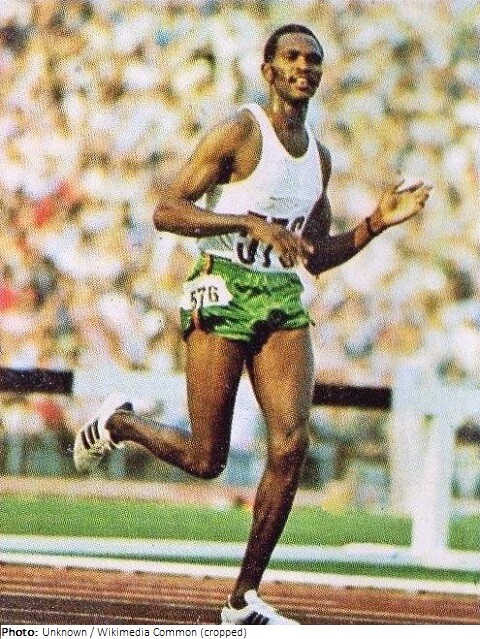
While advancements like “magic” shoes have undoubtedly played a role in these extraordinary performances, it’s important to note that better pacing by other professional runners, now a standard practice, has also made a significant difference. These pacesetters help keep athletes on target through much of the race, ensuring consistency and reducing mental strain. However, the story of record-breaking runs runs much deeper than technology and pacing strategies.
In Kenya alone, there are at least 80,000 distance runners who dream of nothing else but becoming professional athletes. For them, running isn’t just a passion—it’s a path to success and stability.
At the Kenyan Athletics Training Academy (KATA), the training camp I established in Thika, Kenya, we house, feed, and train aspiring athletes. I Each week, I receive messages from 10 or more runners hoping to join our program. For these athletes, running is not a hobby or a pastime. It’s a career aspiration, with the ultimate goal of winning races and securing prize money. They love running, but make no mistake—their drive is fueled by the potential to achieve financial security and support their families.
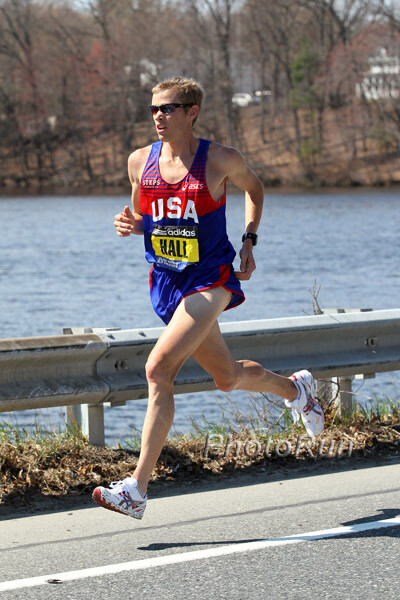
Contrast this with the United States, where very few runners train with the sole focus of becoming professional athletes. Instead, many children grow up dreaming of careers in sports like baseball, basketball, football, or, more recently, soccer. The talent pool for these sports is massive, and from this base, the superstars emerge.
That said, American marathoners have delivered incredible performances. Ryan Hall’s 2:04:58 at the 2011 Boston Marathon remains a monumental achievement, showcasing what U.S. athletes are capable of on a favorable course. On the women’s side, runners like Keira D’Amato (2:19:12) and Emily Sisson (2:18:29, an American record) are setting new benchmarks, proving that the U.S. can compete at the highest levels.
In the U.S., running is often a lifestyle choice rather than a career ambition. Recreational and “fun” runners dominate the scene, which has its benefits—contributing to a higher average life expectancy (76 years in the U.S. compared to 63 in Kenya). In Kenya, it’s rare to see runners over 40 years old out training. The focus there is on younger athletes whose primary goal is to make a living through running.
For many in Kenya, running is the equivalent of pursuing a high-paying job in other fields. This mentality dates back to pioneers like Kip Keino, who opened the door for countless Kenyan athletes to achieve global success. His legacy inspired generations, and today, Kenyan runners—both men and women—continue to push the limits of human potential.
As marathon times keep dropping and prize money continues to grow, I believe we’ll see even faster performances from both men and women—especially in Africa, where running is deeply ingrained as a pathway to opportunity.
(11/23/2024) ⚡AMP
by Bob Anderson
This Sunday's San Sebastian marathon is canceled due to the alert for strong winds
The organization of the Zurich San Sebastian Marathon scheduled for this Sunday has announced that the race is suspended in all distances (10 kilometers, 21 kilometers and 42) "due to the extreme weather alerts issued by the competent authorities".
"The forecasts announce gusts of wind from the south-southeast that can exceed 120km/h in exposed areas of the Cantabrian slope, especially in the east, which poses a serious risk to the safety of participants, volunteers, spectators and all the personnel involved in the organization," says the organization of the sports event in a statement.
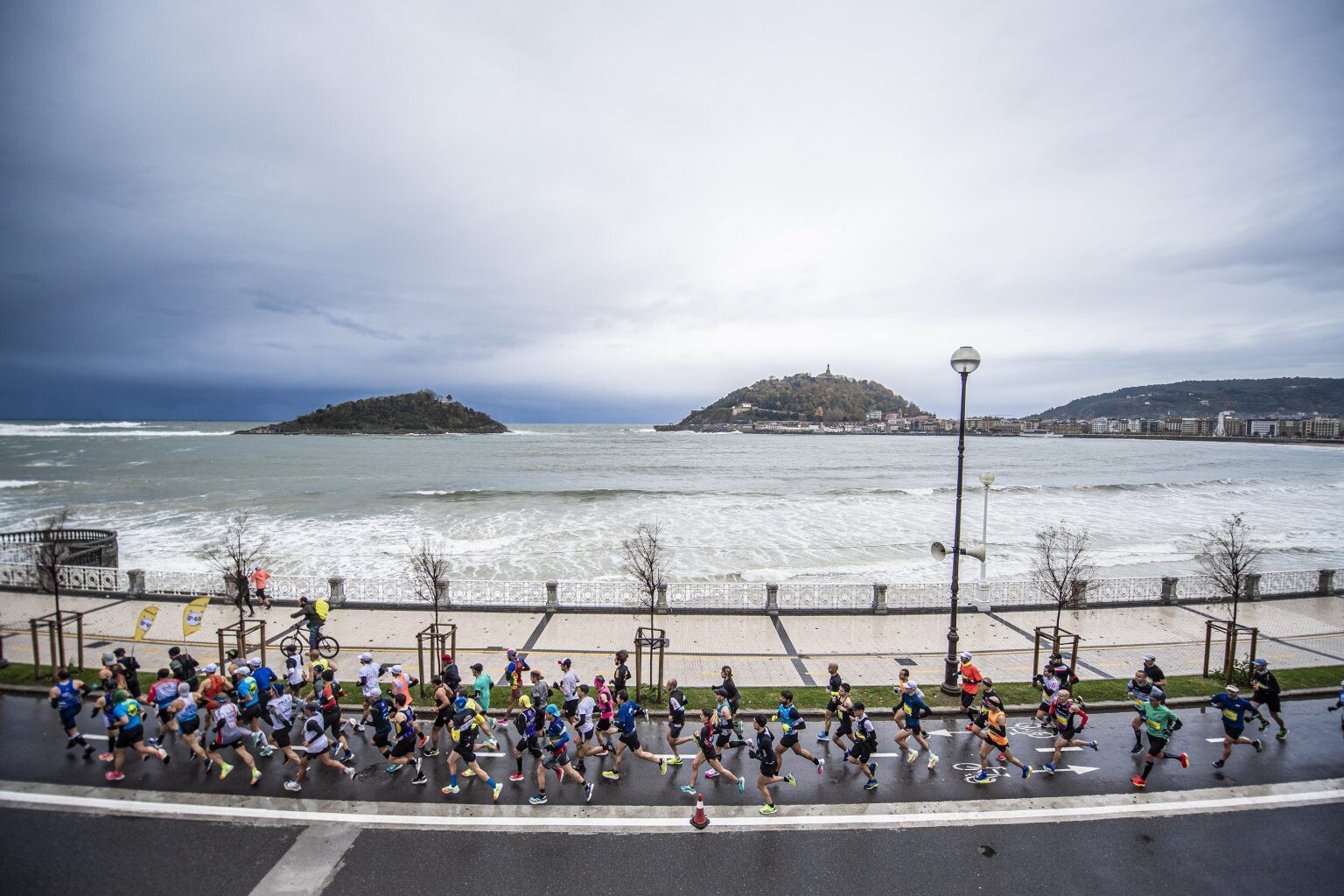
"Our main commitment is to guarantee the integrity and well-being of all the people involved in this event, and unfortunately, in these circumstances, we cannot ensure a safe environment for its development," he says.
The decision has been taken "following a ban by emergency services, meteorology and local authorities, and responds to the need to prioritise safety above any other consideration", it adds.
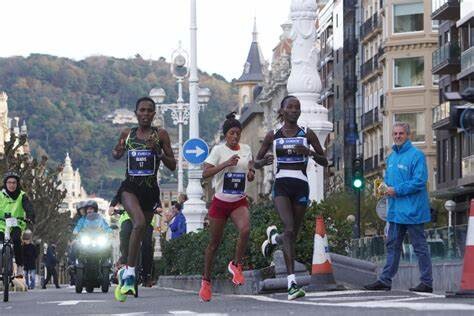
The Vasco Government has activated the orange alert for tomorrow due to strong winds in Gipuzkoa.
The race had exhausted the 3,000 bibs made available to the athletes to compete in this event, the second oldest marathon held in Spain.
In the coming days, the organization announces that it will contact all registrants to provide detailed information on the steps they need to take.
(11/23/2024) ⚡AMP
by Newsroom Infobae
Zurich San Sebastian Marathon
More than 6,500 runners have raced in previous editions in the centre of San Sebastian on an urban route at sea level. Take part in this prestigious race and enjoy the beauty, cuisine and culture of one of the world’s most beautiful cities. In 2016, 64% of participants improved their PB....
more...U.S. Olympian Jenny Simpson completes 7 marathons in 7 days
Two weeks after finishing 18th at the New York City Marathon in 2:31:54, U.S. Olympian Jenny Simpson tackled one of the most gruelling challenges: the Great World Race, which involves running seven marathons on seven continents in seven days.
The decorated middle-distance runner was a late addition to the event that offered a fitting end to her storied career. Over her career on the track, Simpson won four medals at major championships, including an Olympic bronze in the 1,500m at Rio 2016 and a gold medal at the 2011 World Championships in Daegu, South Korea.
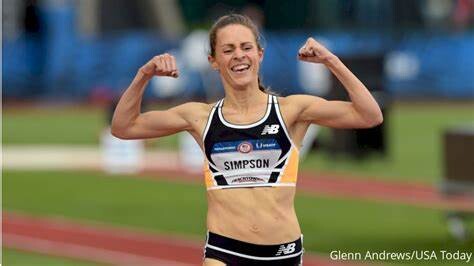
The Great World Race kicked off on Nov. 14 at Wolf’s Fang, Antarctica and concluded on Nov. 20 in Miami. Simpson completed the challenge with the following times:
Antarctica: 3:31
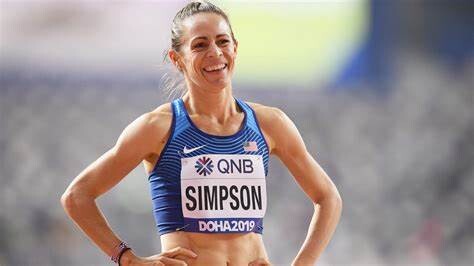
South Africa: 3:15
Australia: 3:12
Turkey: 3:11
Istanbul (overlap leg): 3:15
Colombia: 3:16
Miami: 5:15
Simpson finished fourth in the women’s competition. The week-long-race was won by Ashley Paulson, a two-time Badwater 135 champion, while the men’s race went to David Kilgore after Ireland’s William Maunsell withdrew on the fifth day–four days after he set a continental marathon record on Antarctica.
Reflecting on her last-minute decision to join, Simpson said the invitation was an irresistible opportunity to challenge herself one last time. Initially, it was announced the New York City Marathon would be her final race, but the chance to “run around the world” was too much to pass up for Simpson.
“I have never in my life been so happy to see a finish line,” Simpson wrote on Instagram. “Seven marathons in seven days, plus around the world in one week! My body is surprisingly resilient and I’m so glad I did it.”
Participation in the jet-setting event doesn’t come cheap—the USD $52,000 entry fee covers charter flights, in-flight meals and emergency evacuation coverage for the Antarctica leg. Despite the cost and the gruelling schedule, the event is a bucket-list challenge for many hardcore marathoners.
(11/23/2024) ⚡AMPby Marley Dickinson
Could a midday nap help you ace your next race?
Recent research says catching some extra Zzzs may help you nail some PBs.
We all know rest and recovery are crucial components of training, but could a midday nap help you gain an edge on the competition? Research suggests strategic naps can enhance athletic performance, sharpen cognitive skills and even improve respiratory function. But not all naps are created equal—timing, length and your post-nap strategy all matter. Here’s how runners can harness the power of napping to gain an edge.
The science of napping and performance
A growing body of research highlights how napping can enhance athletic performance, even within the same day. One recent study demonstrated that professional athletes who took a short daytime nap of approximately 35 minutes experienced significantly improved afternoon peak power production, reported less fatigue and had less general muscle soreness. Athletes also experienced lower perceived exertion during their afternoon training sessions compared to days they skipped the nap.

Naps help lower cortisol (the stress hormone) and increase the production of growth hormones that support muscle repair. While a full night’s rest is the gold standard, for runners who struggle with nighttime sleep due to training schedules, travel or pre-race nerves, a nap may help close the gap
Napping and respiratory health
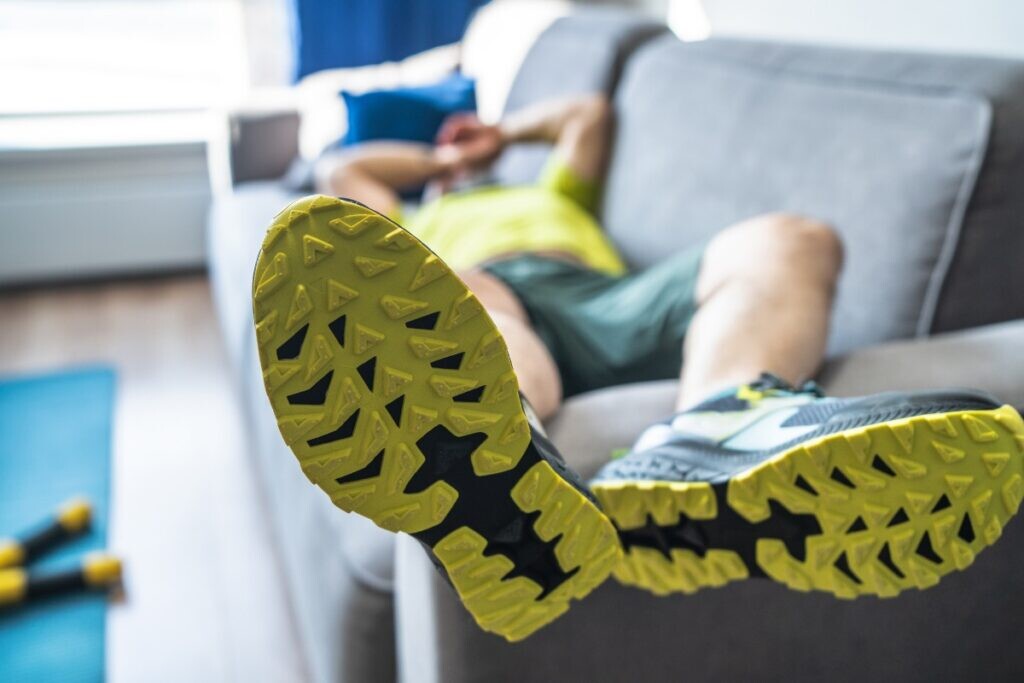
New research highlights how naps can even impact respiratory function—a key factor for endurance athletes. You’ve probably heard of VO2 max—a measurement of the maximum amount of oxygen your body can use doing exercise—something that is increasingly considered to be a critical component of not only race-day performance, but also general health and longevity.
In a study of elite young athletes, a 45-minute nap significantly improved Peak Expiratory Flow rate (PEF), a measure of maximum airflow during exhalation. This finding suggests strategic napping could support better oxygen delivery during exercise and boost overall performance.
When and how long to nap
To maximize the benefits of napping without compromising your training, follow these tips:
Timing matters: Aim for naps between 1:00 p.m. and 4:00 p.m. to align with your body’s natural circadian rhythms and avoid disrupting nighttime sleep.
Duration counts: Short naps (20–30 minutes) are ideal for a quick recharge without grogginess. Longer naps (up to 90 minutes) can offer deeper recovery, but require a buffer period before activity to reduce post-nap grogginess.
Plan your wake-up: Allow at least 30 minutes post-nap to reduce sleep inertia before resuming exercise.
While naps might help you bank sleep before a big race or add bonus recovery time during hard training weeks, they’re ultimately no substitute for quality nighttime sleep. You should still aim for seven to nine hours of sleep per night as the foundation of your recovery routine—but sprinkling in a few power naps could be the extra spark that helps you cross the finish line faster.
(11/23/2024) ⚡AMPby Keeley Milne
Toronto runner takes Strava art to the next level
Toronto-based accountant Duncan McCabe has taken Strava art to new heights. Blending his passions for video editing and running, he has created a viral TikTok featuring a mesmerizing animation of a Strava-art stick man.
As of Friday morning, McCabe’s dancing Strava video has garnered more than eight million views on social media.

We spoke to McCabe, the artist, who said he was surprised at the video’s viral success. He says he was inspired by San Francisco Strava artist Lenny Maughan and Toronto’s Mike Scott, who famously biked a GPS route of a giant beaver across the city’s east end. In 2023, McCabe created a series of animal drawings leading up to the Toronto Waterfront Marathon.
The 32-year-old explained the extensive planning behind his latest project, set to Sofi Tukker’s hit song Purple Hat. “For six months, I had a line across the stick person’s head that was used for animation,” McCabe said. “The hat-tip adds creativity and is a nod to the song.”
McCabe says the biggest challenge was maintaining fluid transitions. “My stick man had to be the same size in the frames,” he explained. “I mapped it out for 10 months.”
McCabe found motivation for the project by consistently seeing his progress and dates on his Strava. “It was the motivating factor for me,” he said.
With viral fame comes scrutiny, and McCabe has faced skepticism on X and TikTok about the video’s diagonal lines. “It’s believable right up until the stick man runs smoothly diagonally through a row of houses again and again,” one user commented.
However, the diagonal lines make his video even more impressive, as McCabe had to start and stop his watch to ensure the lines met precisely at certain points on the map.
Massive kudos!
(11/23/2024) ⚡AMPAre You Eating Enough? Here Are 5 Signs You Might Not Be.
“Running on empty” is a common idiom that can be used to describe a number of scenarios where someone is worn out or unmotivated. For runners that are underfueling, it can be quite literal. Whether you are knowingly or unknowingly underfueling, there are important factors to know about your caloric and nutritional needs.
Despite the prevailing myth that weight loss boils down to a simple calories in, calories out formula, a variety of lifestyle factors and their ensuing hormonal responses affect the ways our bodies respond to exercise and food. In an effort to maximize weight loss, many people (particularly women) eat as little as possible. “High-performing female athletes are at a high risk of underfueling,” says Yasi Ansari, MS, RDN, CSSD, and national media spokesperson for the Academy of Nutrition and Dietetics. “This can take place without them even knowing.” There can also be such a focus on creating this calorie deficit that it can be easy to forget what calories actually do: fuel our bodies.

Your body responds to extreme caloric restriction by doing whatever it can to ensure your survival, mostly by conserving energy and putting calories toward its most basic functions. To do this, the body resorts to burning fewer calories. While in this survival mode your body produces more of the stress hormone cortisol, according to this 2010 study. And according to the Hormone Health Network, high levels of cortisol can cause changes to your sex drive and menstrual cycle and might even be linked to anxiety and depression.

If you’re not eating enough food, it’s also likely that you have some sort of micronutrient deficiency. According to the Micronutrient Information Center of Oregon State University, vitamin D, calcium, potassium, dietary fiber, and iron are commonly underconsumed in the U.S. Like eating too few calories, symptoms of micronutrient deficiency include fatigue, reduced immunity, lack of concentration, memory troubles, and mood fluctuations.
This impacts your training in several ways. When the body feels it must prioritize essential functions (like regulating breathing, body temperature, and blood pressure), it doesn’t feel that it’s safe to put resources toward things like rebuilding muscle tissue, which is the process that enables it to build strength. Training sessions
5 Signs You Aren’t Eating Enough
1. You’re Constantly Tired
Food is energy. As mentioned above, if you’re not eating enough calories, your body is going to use the ones it does have to support vital functions. This means there aren’t any left to do the things you love. If you’re dragging your feet at the gym every day or while out on a run, chances are you could benefit from more food.
2. You’ve Hit a Training Plateau
Have you been working out with greater intensity but aren’t seeing any results? Do you see, as Ansari describes, “decreased performance in the weight room, out on the track or trails,” or feeling like you’re bonking or hitting the wall? Your body could be in starvation mode, fighting to preserve as many calories as it can.
If you’ve hit a ceiling in your weight training and haven’t seen an increase in months, it’s likely that you need to eat more, both to fuel your training and to repair your muscles.
3. You Aren’t Regular
Only about five percent of Americans consume enough fiber each day, according to national consumption surveys. If you are under-eating, the chances of your body getting
4. Your Brain Feels Foggy
Ansari, who works mostly with runners in high school and college, mentions that poor concentration in school is a symptom of underfueling. You may also feel that at work or even have trouble staying mentally alert during a workout. Your brain relies on proper nutrition to function, as well as the rest of your body.
5. You Can’t Sleep, Even Though You’re Tired
Appropriate food intake allows for improved blood sugar control. The combination of consuming too few calories and over-exercising leaves your liver depleted of the glycogen stores it needs to keep your blood sugar stable, forcing your body to release stress hormones that eventually lead to the production of new glucose. When stress hormones are high, we have trouble falling–and staying–asleep.
“Someone who is limiting carbs and/or overall calories may experience some sleep challenges,” says Ansari. “Carbohydrates help to make tryptophan, an amino acid that increases sleepiness, more available to the brain.”
Adding Fuel to Your Tank
Unfortunately, it’s impossible to give a one-size-fits-all on how many calories your body needs, particularly since your energy expenditure varies every day. The USDA Dietary Guidelines estimate that adult women need anywhere from 1,600 to 2,400 calories a day. However, this baseline estimate doesn’t include the additional calories needed for intense exercise, as their definition of an active lifestyle for their purpose is “physical activity equivalent to walking more than 3 miles per day…in addition to the activities of independent living.”
While there are many bodyweight calculators available that can tell you what your ideal weight (and thus ideal calorie intake) should be for your age, gender, and height, both fail to consider things like frame size and muscle mass. Ansari recommends connecting with a registered dietitian to really figure out how to meet your needs.
There are other simple steps you can take to start benefiting your nutrition, like adding more whole foods, especially fruits and vegetables, to your diet. This is especially important if you suspect you have a nutrient deficiency. An RD can help you determine if you need additional interventions like supplements or vitamins.
You can use
(11/23/2024) ⚡AMPHow to Run a Turkey Trot: Your Panic Training Guide
Whether you forgot to train or signed up at the last minute, we’ve got you covered with quick, effective training tips to get you ready for your Thanksgiving race
If a friend or family member just sent you a link to a turkey trot and you thought, Sure, why not? and signed up with less than a week to the big day, congrats! You’ve found a page with the perfect blend of last-minute race training desperation and can-do attitude.


The good news? Sheer willpower can propel you through a few miles of fun. The bad news? At this point, you can’t really train, per se. Let me bring in Erica Coviello, RRCA-certified running coach to explain. “Physiologically speaking, your body needs about 10 days to adapt to any kind of stress so you’d need more than that to influence performance,” she says.
You can, however, prepare. And we’re here to help.
Don’t Panic
First things first: don’t freak out. You can do this. “Turkey trots are distances that the average person should be able to complete, whether running, walking or a combination of the two,” Coviello says.
Most of these races will be between 3 and 6 miles, with a lengthy course cutoff time, meaning it’s totally doable. To be clear, we wouldn’t advise running a marathon or even a half marathon with no training. The risk of injury is too high. But a local turkey trot? As long as you walk or run within your fitness level, it’s safe and super fun to do.
Move a Little (Not a Lot)
If your last running mile was in high school P.E., get out and stretch those legs in the days leading up to the race. “Running a bit during that week before can build your confidence and help ‘train’ your mind, so why not give it a go?” Coviello says. “Done correctly, it can lead to less pain on race day. Correctly as in short, easy runs, maybe with some walking just to get time on your feet and muscle activation if you’re going from zero to 60.”
Try 20 to 30-minute run/walks. You’ll be able to find what cadence works for you at your current fitness level by trial and error. Try a 30-second run followed by a two-minute walk. Repeat the
The key is to not overdo it. Now is not the time to start running 5 miles at a time. Also inadvisable: sprints, timed miles, climbing the stairs to the Philadelphia Museum of Art. Keep your runs joyful and easy, not intense. If you’re unsure what “easy” means, you can judge it by your heart rate, staying below 60 to 70 percent of your max, or by the talk test. (I.e. can you hold a conversation while running with ease?)
“Running too much, too fast, too soon, almost always results in injury or burnout and can lead to a rough race day or poor recovery,” Coviello says.
Last-Minute Turkey Trot Training Pans
Before we go through the “training plans” let me hit you with some tough love. Where have you been for the last three months, dude? If you came here 12 weeks ago to get a real training plan, we’d have you on your way to gravy-covered Thanksgiving race glory. OK, end rant. Just promise me you’ll train for real next year.
Training Plan Length: One Week Level: Mild Panic
Let’s focus on making it to the finish line with all your muscles (and dignity) intact.
Training Plan Length: Three Days Level: Acute Anxiety
You just looked at the calendar and realized you’re racing in three days. Big yikes. You’ve got time for a vibes-based taper.
Training Plan Length: One Day Level: Advanced Chaos
If you just noticed that Thanksgiving is tomorrow and you’re racing in 12 hours, it’s…fine. Maybe it’s a day to drink more water and less Diet Coke. Move your body a little. Find (or buy) some running shoes.
Make Better Choices
During the holidays, it’s so easy to forget the simple steps that help you feel less like a garbage pile. You don’t need a massive diet overhaul to run a turkey trot, but choosing nourishing foods will help you feel better while you’re out there.
(11/23/2024) ⚡AMPWhy You’re Hungrier When It’s Cold
It's perfectly OK to lean into your hunger cues
I run year-round, but winter is by far my favorite time to go jogging. When it’s cold and crisp out, I can go much longer and harder, often doubling the length of my summertime routes. Afterward, I want nothing more than to eat like a bear preparing to hibernate for the winter.

I always figured my increased appetite was merely due to the fact that I exercise more in the cooler months. While that’s undoubtedly a factor, research published by Nature in 2023 suggests that the state of being chilly can make your stomach growl, too. When you’re cold, your body has to work harder to keep itself warm, and that burns more calories and can make you feel hungrier,” says Dana Ellis Hunnes, a senior clinical dietitian at the University of California, Los Angeles Medical Center (UCLA) and assistant professor at UCLA’s Fielding School of Public Health.Your nutrition needs fluctuate with the seasons, and paying attention to those changes is crucial to getting the most out of your wintertime activities. Here’s why.

Why You Feel Hungrier When It’s Cold Out
Your internal organs function best when your core temperature hovers around 98.6 degrees Fahrenheit; anything below that automatically triggers your body to warm itself. And if you’re revving too hot, your body will naturally try to dissipate heat. This process, called thermoregulation, keeps your heart, brain, and lungs performing optimally.
“It’s a well-established phenomenon that your body needs more energy to maintain its core temperature when it’s cold out,” says Li Ye, a professor in the Department of Neuroscience at the Scripps Research Institute and lead researcher of the Nature study.
One way your body maintains its warmth is by shivering, Ye says. Trembling—which occurs when your muscles involuntarily contract and relax super quickly—requires energy that, in turn, ups your body temperature to a toastier level.
In my conversation with Hunnes, I learned a second reason we humans tend to scarf down everything in sight after spending time in bone-chilling weather. It takes a lot of work for your body to digestOther but slightly less impactful factors can further exacerbate your cold-weather hunger. For example, people who struggle with seasonal affective disorder (SAD), a type of depression that can be triggered by the reduction of daylight in the fall and winter months, tend to crave carb-dense foods.
Moreover, the added stress that goes hand in hand with the holiday season may also cause your adrenal glands to produce more cortisol, the stress hormone. This can give you an insatiable appetite, or what we know colloquially as “stress eating.” A boost in cortisol production might make you more inclined to seek out food.
An Increase in Appetite Can Affect Your Workouts
During cold-weather activities, you likely need to eat more to compensate for all the extra calories your body’s burning, Hunnes says. “You may need to eat more frequent, smaller meals or complex carbs to carry out the same level of activity,” she says.But what, exactly, makes complex carbs so useful? According to the Centers for Disease Control and Prevention, they contain more nutrients and fiber than refined or simple carbs. In other words, complex carbs, like sweet potatoes and legumes, fill you up and energize you for longer than, say, a fistful of Tootsie Rolls. So, if you don’t fuel yourself properly, your body will settle into a lethargic state to conserve whatever remaining energy you have, says Ye.
Ye’s study investigated the effects of cold temperatures on mice to understand what is happening in the body that makes animals hungrier when cold. Per his preliminary findings, specific neurons activated in cold conditions prompted the rodents to scavenge for food.
Furthermore, when the mice couldn’t find food, they became sluggish and chose to hunker down in the corner of their cage. “The default response is to perform less vigorously to conserve energy,” says Ye. I asked if those findings might apply to humans. He said they certainly might—though more research is needed to verify this.
According to Nyree Dardarian, an assistant clinical professor and director of the Center for Nutrition and Performance at Drexel University, our physical and cognitive performance suffersPack some snacks if you plan to go skiing for a few hours. Being in the cold for an extended period will inevitably deplete your energy stores and make you ravenous. Having a treat or two handy will be a lifesaver when hunger strikes.
Don’t Forget the Carbs Mid-Workout
Regarding snacking during an activity, carbohydrates are king. “Your brain is looking for an immediate source of generating heat, and carbs are effective at doing that,” Ye says. The reason, he says, is that carbs contain glucose, and your body tends to warm up when it breaks down glucose.
Dardarian recommends eating fruit, like a banana or grapes, fruit snacks such as Mott’s Assorted Fruit Flavored Snacks (no need to get organic ones, she says), energy gels, or a bag of pretzels about 1.5 hours into your activity.
It’s Totally Normal—and OK—to Lean into Your Natural Hunger Cues
When hunger pangs intensify, your body is trying to tell you something. Ye’s advice: don’t ignore those cues. “Your body knows what it wants—follow its calls,” he says.
Don’t feel guilty about eating more when it’s cold out. Remember, there’s a legitimate physiological reason you feel hungrier. Your body
(11/23/2024) ⚡AMPEmmaculate Anyango: Kenya’s long-distance prodigy handed six-year doping ban
Emmaculate Anyango, who has been one of Kenya’s emerging athletes, has suffered a major blow after receiving a six-year ban over multiple doping violations.
Kenya’s long-distance sensation Emmaculate Anyango has been handed a six-year doping ban by the Athletics Integrity Unit (AIU) over multiple anti-doping violations.
The AIU announced Anyango’s doping ban on Friday, having provisionally suspended her in October, for the presence and use of a prohibited substance (Testosterone and EPO).
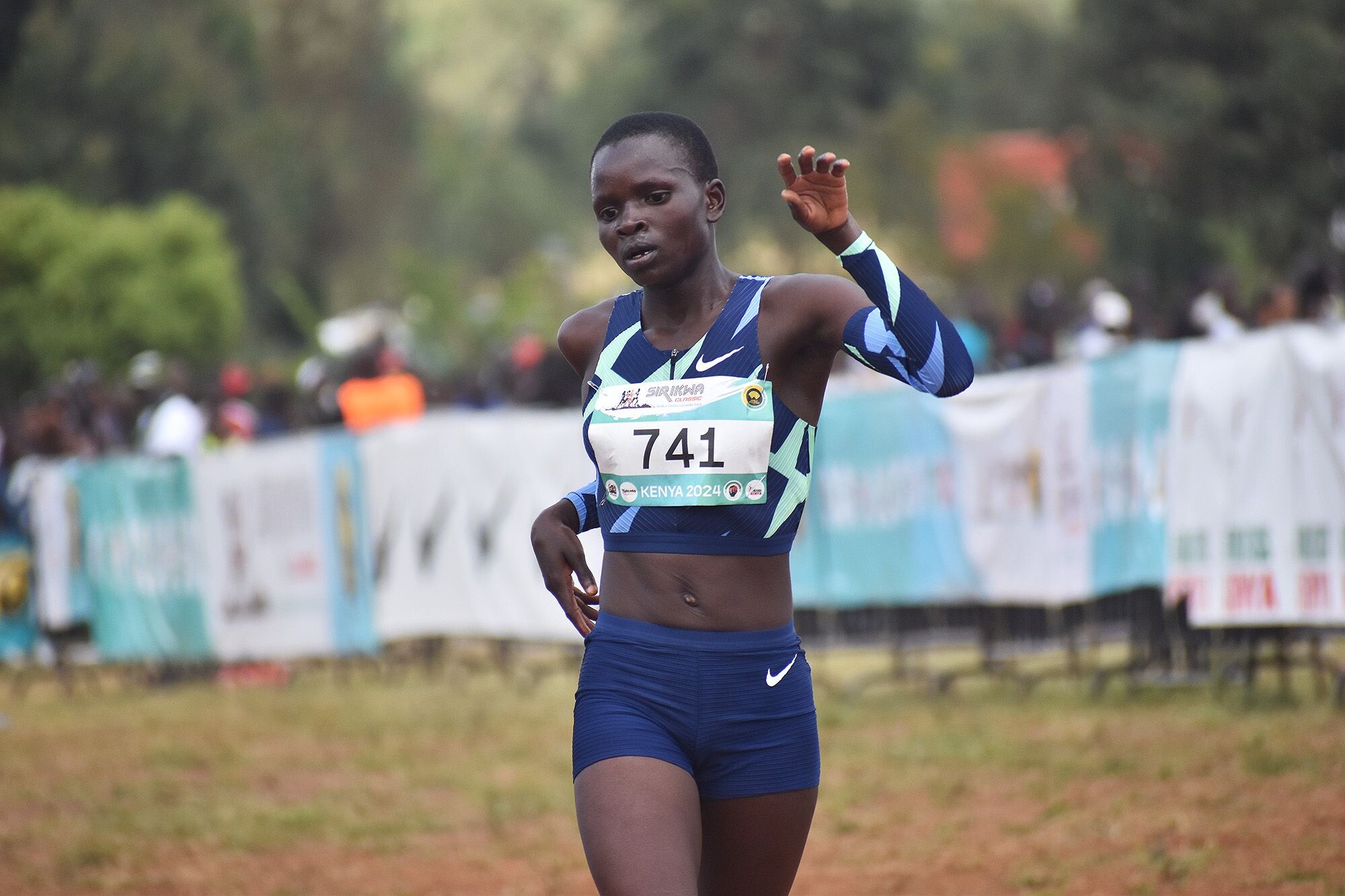
However as per AIU’s latest statement, the athlete was found to have cheated on four occasions between February and June 2024, her first, second and third urine samples revealing the presence of banned substance Metabolites while her fourth urine and blood sample revealed the presence of EPO.
The athlete failed to prove that she used the substances deliberately, having defended herself by claiming that she did not know how they ended up in her body. In her defence, Anyanyo claimed that she visited several hospitals in Eldoret after falling ill and that she fainted on multiple occasions and did not know what was injected into her system.
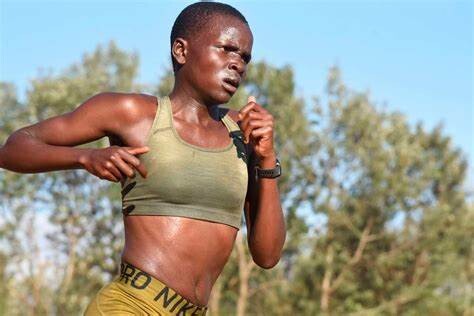
She also presented documents that failed to prove that she knowingly doped, which left her facing the mandatory four-year doping ban, and an extra two for Aggravating Circumstances as a result of her use of multiple banned substances.
The athlete was given an opportunity to accept responsibility, which would have seen her ban reduced by one year, but she failed to do this during the stipulated period, leaving the AIU with no choice but to slap her with the lengthy ban.
It is a major blow to the career of the 24-year-old, who will be 30 and beyond her prime by the time her ban ends in September 2030, having started making waves in 2024.
The Sirikwa Classic Cross-country champion was awarded the Sports Personality of the Month award for February by the Sports Journalists Association of Kenya (SJAK) after coming close to breaking the world 10km world record in January.
She recorded the second fastest 10km time in history when she clocked 28:57 in Valencia, Spain, improving Ethiopian Yalemzerf Yehualaw’s world record (29.14) but unfortunately for her, compatriot Agnes Ngetich won the race in a better time of 28.46.
Her career now appears to be over following the lengthy ban with her results from February 3, 2024 also scrapped.
(11/22/2024) ⚡AMPby Joel Omotto
Two-time winner Mark Carroll returns to Manchester Road Race as honorary chair
Two-time Manchester Road Race winner Mark Carroll recalled his introduction to the annual Thanksgiving Day race on Thursday.
Carroll, an Irish Olympian who is the Boston Athletic Association’s director of performance, is this year’s honorary race director. He will be on the press truck at the 88th edition of the race Nov. 28 on Main Street in Manchester.
In 1995, Carroll had just graduated from Providence College and was competing at the Millrose Games the following year when he was approached by the late Irish native P.J. Tierney, who had been responsible for getting Irish runners like John Treacy and Eamonn Coghlan to run at Manchester.
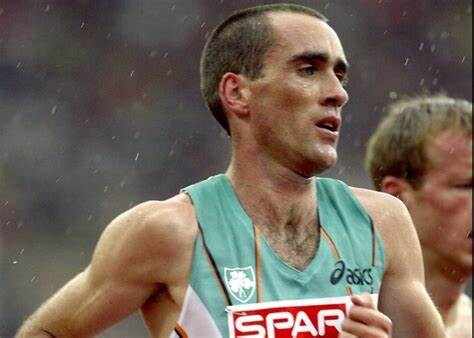
“He said, ‘Treacy’s won. Coghlan’s won it,’” Carroll said. “They were legends in Ireland. I called my agent (John’s brother Ray) and I said, ‘Hey, I got to go to Manchester in November.’
“The way P.J. put it, it was of national importance.”
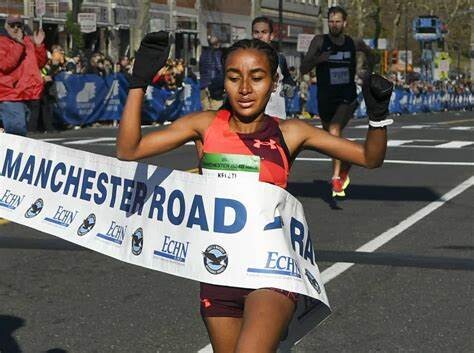
So Carroll went. He was in shape to win. But he was beaten in the last quarter mile by Khalid Khannouchi, who went on to run the world record in the marathon. The next year, Carroll finished second again to Aurelio Miti Handanga of Angelo. He kept coming back. Tierney was still on him to win it.
“I started to appreciate everything around the event,” he said. “The pasta dinner. The energy on race day is second to none and I’ve raced all over the world. The start of the Manchester Road Race is very. very special.”
He finally won in 1998 and again in 2000, finishing second for the third time in 1999.
“I can’t believe it’s 28 years since I first ran here,” he said Thursday. “I drove around the course this morning and it brought back vivid memories, some of the fondest memories of my career.
“When you look at the list of names who have won the race, it just speaks to the stature of the race. Professional runners want to come here and win; it’s seen as a feather in your cap to win here.”
Getting ready for potential Main Street changes
Road race organizers are planning to have temporary plastic fencing on the corner of Main and Charter Oaks streets where the course turns at the start of the race to simulate street width if a proposed roundabout is constructed there in the future.
The Downtown Manchester Improvements Project, in part, is intended to shrink the number of lanes on Main Street to make the road safer. The plan has been controversial for some Main Street businesses, who oppose it for a variety of reasons.
But the road race organizers, who have met with planners, say that the race will not be affected, except at the one corner, where the plans call for the road to be 40 feet wide. There are upwards of 10,000 runners at the annual race and concerns about a crush of runners bottlenecking at the turn.
“It’s a very contentious item,” road race president Tris Carta said of the project. “There’s a lot of people, as this goes forward, who will be impacted negatively, so some of the businesses have a real problem with this.
“We had to figure out a way to keep our race. At the meetings, they’ve been very good with us, meeting and showing us the plans.”
So they’re going to give the fencing a trial run to see if the smaller space works. If there is a problem on race day, the fencing can be removed by volunteers who will be holding it.
“We said, ‘If this is what’s going to be, let’s practice,’” Carta said.
That’s the only part of the race that will be impacted, Carta said. Even with a potentially narrower Main Street, the part of the road used by the race will not be affected.
Three-time women’s winner is back
Weini Kelati, who finished eighth in the Olympic 10,000 meters for the U.S. this summer, will return to the Manchester Road Race after winning the women’s race the past three years. Runner-up Annie Rodenfels of Newton, Mass. who finished second last year, is also back as is 2019 winner Edna Kiplagat. On the men’s side, there are three Olympians – Kenyan Edwin Kurgat (seventh in the 5,000 meters), 2021 winner Ben Flanagan, a Canadian Olympian in the 5,000 meters and British Olympian Pat Dever (5,000) – as well as Andrew Colley, who finished fourth in 2022 in the fourth fastest time in Manchester history (21:07).
(11/22/2024) ⚡AMPby Lori Riley
Manchester Road Race
The Manchester Road race is one of New England’s oldest and most popular road races. The 86th Manchester Road Race will be held on Thanksgiving Day. It starts and finishes on Main Street, in front of St. James Church. The Connecticut Sports Writers’ Alliance recently honored the Manchester Road Race. The CSWA, which is comprised of sports journalists and broadcasters...
more...Cape Town Marathon primed to become Africa’s first Abbott World Marathon Major
The Sanlam Cape Town Marathon has recently made significant strides in its journey to join the international Abbott World Marathon Majors (AbbottWMM) series after the 2024 edition met the criteria set out by the AbbottWMM team.
Cape Town will now proceed to the second stage of the candidacy process in its attempt to join the series when it stages its next marathon on October 19, 2025. If it is successful, the race would join the Majors in 2026. This follows the recent addition of the TCS Sydney Marathon, which was announced as the seventh Abbott World Marathon Major event and will take place as a Major on August 31, 2025.
Current AbbottWMM events are: Tokyo Marathon, Boston Marathon, TCS London Marathon, BMW-Berlin Marathon, Bank of America Chicago Marathon, TCS New York City Marathon and most recently the TCS Sydney Marathon.
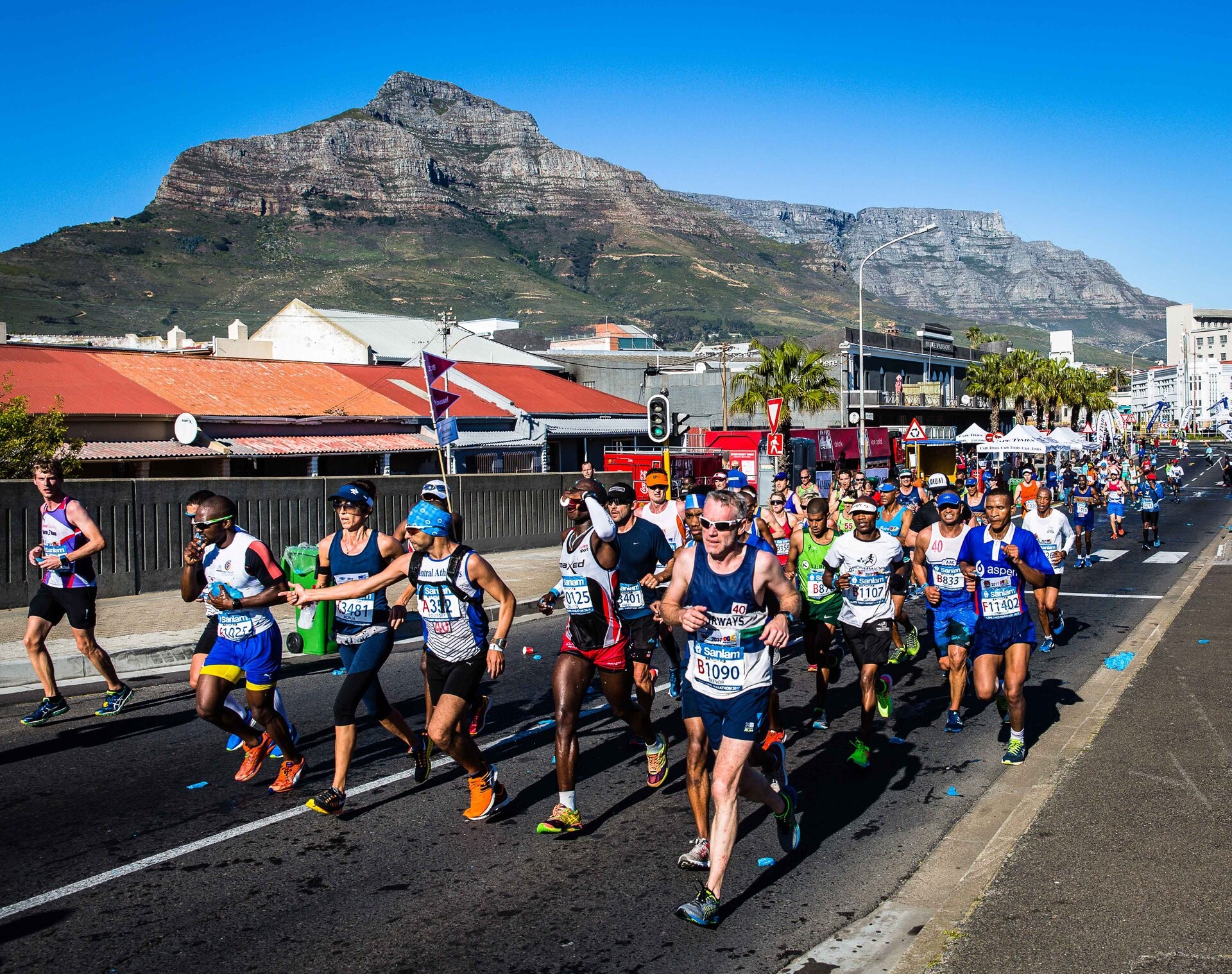
“Cape Town has continued its impressive progress since joining the candidacy process, and we are thrilled that it has now met all of our criteria for the first time,” said AbbottWMM CEO, Dawna Stone.
“We know how much the city, the country and the whole continent want the race to become Africa’s first Major, and they have taken a great step in the right direction.”
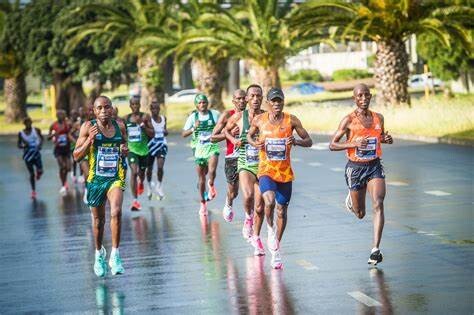
Behind the scenes, Infront’s partnership with the Sanlam Cape Town Marathon, which got under way in 2021, has helped to support the event’s application.
Hans-Peter Zurbruegg, Senior Vice President Active Lifestyle at Infront, said “Meeting the AbbottWMM criteria in 2024 for the first time reflects a true milestone on the journey to making our vision of the Sanlam Cape Town Marathon becoming part of the AbbottWMM Series as Africa’s first Major a reality.
“Sanlam Cape Town marathon will capture the imaginations of a global running community with its unique African spirit and the unlimited touristic offers that the area of Cape and South Africa as a country has to offer.
“This milestone is the result of the enormous efforts made by the local Cape Town marathon team, and the close partnership with all stakeholders involved that all share the same vision and want to shape the future of running, putting Cape Town as a city and Africa as a continent onto the world map of running.”
The next Sanlam Cape Town Marathon, Africa’s only World Athletics Gold Label marathon, will take place on Sunday, October 19, 2025. As one of the continent’s most prestigious marathons, it offers participants a scenic route through Cape Town’s landmarks, showcasing its scenery and cultural heritage.
In 2024, the Sanlam Cape Town Marathon achieved a milestone by successfully passing stage one of the rigorous Abbott World Marathon Majors (AbbottWMM) evaluation process. It now sets its sights on passing stage 2 in 2025, as it strives to become Africa’s first Major.
The marathon weekend also features a range of events, including the 10km and 5km Peace Runs and the 44km Trail Marathon, 22km Trail, and 11km Trail on Saturday, October 18, 2025. These events cater to runners of all abilities, whether on the road or trail.
The official expo, where participants can collect their race packs and explore various running products, will be held at the DHL Stadium fon October 16-18 October 2025.
With the support of our title sponsor Sanlam, alongside partners such as adidas and the City of Cape Town, the event continues to attract top-tier athletes and running enthusiasts from around the world.
(11/22/2024) ⚡AMPby Gary
Cape Town Marathon
The Sanlam Cape Town Marathon is a City Marathon held in Cape Town, South Africa, which is sponsored by Sanlam, the City of Cape Town and Vital Health Foods. The marathon is held on a fast and flat course, starting and finishing in Green Point, near the Cape Town Stadium. Prior to existing in its current format, the Cape Town...
more...Kenya’s Faith Kipyegon receives honorary doctorate degree
The back-to-back-to-back Olympic 1,500m champion was given an honorary doctor degree in Education on Wednesday.
It has been a monumental year for Kenya’s Faith Kipyegon, who in August became the first female athlete in Olympic history to win three consecutive gold medals in a single track discipline. On Wednesday, her achievements were celebrated in her home country when she received an honorary doctorate degree in education from the University of Eldoret.
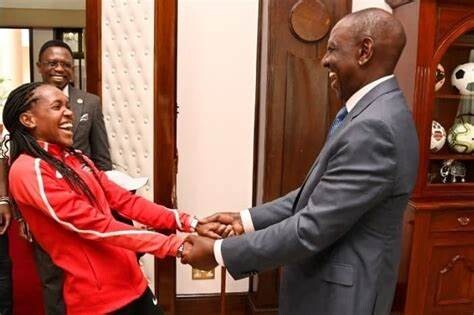
“I am greatly honoured to receive an honorary doctorate degree in education from the University of Eldoret,” Kipyegon shared on Instagram, signing off as “Dr. Faith Kipyegon.”
Honorary doctorates are typically awarded to individuals who have made exceptional contributions in their fields. Kipyegon’s recognition highlights her trailblazing career in women’s distance running, where she has inspired countless athletes by returning to elite competition and breaking records after giving birth to her daughter in 2018.

Kipyegon’s 2024 season
This year has been one of the most successful of Kipyegon’s career. At the Paris Diamond League in July, the 30-year-old broke her own world record in the 1,500m, running 3:49.04. The following month, she defended her Olympic 1,500m title at the Stade de France, setting a new Olympic record of 3:51.29.
Kipyegon also earned a silver medal in the 5,000m, an event she contested for the first time at the Olympics. Initially disqualified for an obstruction involving Ethiopian runner Gudaf Tsegay, Kipyegon was reinstated after a successful appeal. Her compatriot, Beatrice Chebet, won gold in the event.
Accolades and recognition
Kipyegon was among six nominees for the Women’s Track Athlete of the Year award by World Athletics, a title she won in 2023. Additionally, she was shortlisted for the Laureus World Sports Award for Sportswoman of the Year, an honour recognizing the year’s greatest female athlete. This year, the award was won by Spanish footballer Aitana Bonmatí.
(11/22/2024) ⚡AMPby Marley Dickinson
Firenze Marathon 2024: Top runners
Florence - Writing one's name in the roll of honour of a noble event and doing it on the occasion of the 40th birthday, the challenge of the 40^ Estra Firenze Marathon is therefore even more electrifying and the task of making it so is entrusted to twelve men and eight women.
Top runners – Men
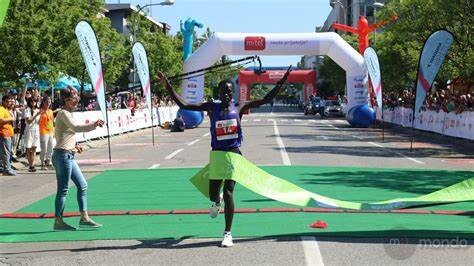
Five from Kenya and Italy, one from France and Burundi to beat the record to be beaten currently in the legs of the Kenyan James Kipkogei Kutto who in 2006 crossed the finish line in 2h08'40". The Kenyan Dikson Simba Naykundi (Caivano Runners) could succeed in his debut on the queen distance. Dikson Nyakundi brings with him the excellent record of 60'39" on the half marathon distance that earned him victory in Treviso in 2022 and has racked up several podiums in Italy, as stated in his curriculum in which we find, among others, the victories in Cremona in 2021 and at the last edition of the Neapolis Half Marathon.
In the race, however, there are those who already have experience on the queen distance and will try to have their say having already run below the record of the event. This is the Kenyan Edwin Kimutai Kiplagat who with 2h08'21", detached in Geneva in 2021, could captain the leading group.
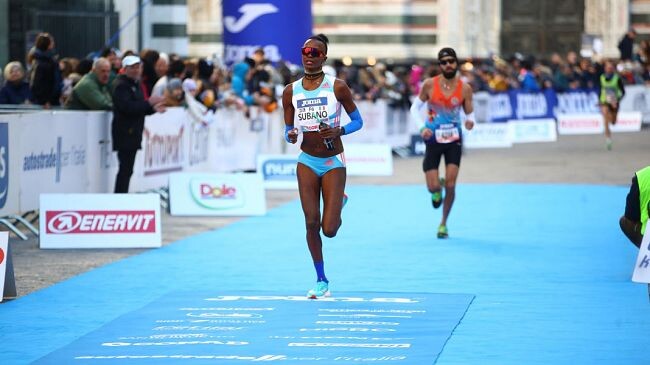
Just over a minute away, the winner of the last edition of the Neapolis Marathon, the Kenyan Samuel Naibei Kiplimo who has already stopped the clock of the 2022 Run Rome The Marathon at 2h09'41", when he conquered the seventh position overall. Behind him is the first on the home list, the Moroccan with an Italian passport Hicham Boufars (Asd International Security) who participated in Florence in 2019 (third overall with 2h13'29"), in 2018 with a personal best (second overall with 2h12'16"), 2015 (2h13'36") and 2014 (2h17'12"), followed by the Kenyan Hyllry Chemweno who this year snatched the personal best of 2h13'28" by winning the Skopje marathon (Macedonia).
A little further behind is Lhoussaine Oukhrid (ASD AT Running) with a personal best of 2h16'25" followed by the Algerian with a French passport Menad Lamrani, last year at the personal best of 2h16'45" at the Rennes marathon (France).
At the start, with the task of acting as a hare, the Kenyan Simon Dudi Ekidor who brings the time of 2h18'58" from the 2019 Nairobi marathon.
Closing the ranks are three Italian regulars of this event, the Moroccan Khalid Jbari (Athl. Club 96 Alperia), capable of 2h21'32", his personal best, in 2022 and Andrea Soffientini (Dinamo Running), for him already three medals in the Firenze Marathon, in 2022 (2h26'36"), in 2021 (2h22'29") and in 2021 (2h26'36") and Kabir Hicham (Pol Moving SSD ARL) who in Florence conquered his best time with 2h22'44" last year, when he showed up sixth at the finish line, improving on the 12^ position of 2021 (2h27'24").
Burundian Jean Marie Bukuru makes his debut with the record of 63'03" in his legs at the 2023 Arezzo half marathon.
Top runners – Women
Five from Kenya, two national standard-bearers and one from Morocco for the glory of the 40^ Estra Firenze Marathon, although, barring surprises, it does not seem that the women's record of the route that belongs to the Olympic Lonah Chemtai Salpeter can waver, in 2018 she had lowered it by four minutes compared to the previous one bringing it to 2h 24'17".
On paper, the victory goes to the Kenyan Vivian Cherotich to whom the Italian roads bring luck, as told by the record with victory conquered at the last edition of the Romeo & Giulietta Half Marathon with a time of 1h09'18" which is on a par with the victory of the last marathon in Eindhoven (Netherlands) when she set her personal best of 2h26'41". Watch out for the Moroccan Souad Kabouchia who here in Florence, in 2021, has already taken fourth place running in 2h27'49", a handful of seconds from the personal best that gave her the victory of the last marathon in Enschede, which ended in 2h27'16".
Three minutes behind her it is possible to see the stride of her compatriot Dorine Cherop Murkomen who this year in Seville set her best time with 2h29'39".
The breath on the neck is of the Kenyan Teresiah Kwaboka Omosa (Caivano Runners) who has racked up several victories, including the half marathons of Udine (2021), Wachau (2022) and Nancy (2024) as well as that of the Salzburg marathon in 2018. For her, the record on the queen distance is from 2021 when in Fürstenfeld (Austria) she stopped the clock at 2h30'12".
A little more detached is the Kenyan Hellen Chepkorir who brings 2h34'16" scored in Kosice (Slovakia) in 2017. In the group of pursuers the Kenyan Lucy Chepoghon Chelele who boasts the time of 2h38'12" a few weeks ago in Nairobi, the blue of Kenyan origin Maria Gorette Subano (Cus Pro Patria Milano), last year able to snatch the bronze medal of the 39^ Firenze Marathon and recently improved at the Berlin marathon (Germany) where she finished her efforts in 2h38'45". For Italy also her teammate Sarah Giomi with the time of 2h40'22" set in Amsterdam in 2018.
Hall of Fame
The ranking by nations still sees the colors of Italy in the lead with 22 victories (11 among men and 11 among women), followed by Kenya with 16 successes (12/4), then Ethiopia which with 15 victories (7/8) extends its lead over Great Britain with 9 victories (3/6); then at 2 there are Bahrain (2/0) and Hungary (0/2). Austria (0/1), Belgium (0/1), Brazil (1/0), Israel (0/1), Yugoslavia (1/0), Morocco (1/0), Norway (0/1), Czech Republic (0/1), Russia (0/1), Rwanda (0/1), Slovenia (0/1) and Ukraine (1/0) all have one win each. There are 18 nations that can boast at least one victory in the roll of honour.
Victories of 9 different nations among men and 13 different nations among women. Men: Kenya 12, Italy 11, Ethiopia 7, Great Britain 3, Bahrain 2. Brazil, Yugoslavia, Morocco and Ukraine: 1. Women: Italy 11, Ethiopia 8, Great Britain 6, Kenya 4, Hungary 2. Austria, Belgium, Israel, Norway, Czech Republic, Russia, Rwanda and Slovenia: 1.
The 2023 edition of the Florence Marathon brought the tricolor back to the men's podium with Said El Otmani (CS Army), in the women's victory of Clementine Mukandanga who signed the national record for Rwanda while the last Italian who had the national anthem sung is Giovanna Volpato who in 2008 cut the ribbon in 2h34'13".
(11/21/2024) ⚡AMPFirenze Marathon
This is Firenze (Florence) Marathon! Along the way you will be surrounded by centuries of art, history and culture, a unique emotion that can only be experienced by those who run in Florence. Thousands of sports people and enthusiasts from all over the world come to participate in this classic race on the last Sunday in November. The route takes...
more...Seven Things To Do Before You Start Marathon Training
It’s essential to start preparing for a marathon 2-3 months before you begin your marathon-specific training. The more prep work you do before training starts, the less likely you are to get injured and the more likely you’ll be to reach your goals. Here are 7 things you need to do in the weeks before you start following your marathon training plan.
1.- Pick a training plan or hire a coach.
This is a no-brainer, but make sure you’re strategic in picking the right plan or coach. To ensure you get the plan you need, review your past training logs and make notes of what kind of weekly mileage you want to complete. Write out your goals for the race. Then start looking for the training plan that’s going to work best for you. If you only want to run four days a week, don’t choose a plan that asks you to run six days a week. Running isn’t your only goal in life, so find a training plan that works well with your lifestyle.
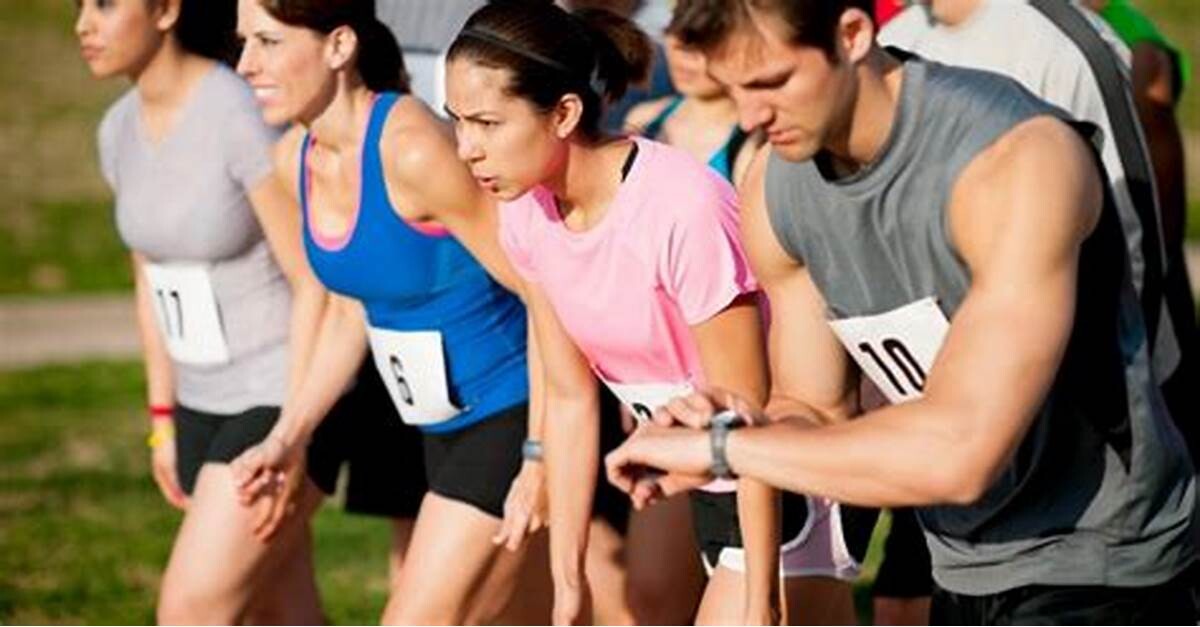
2.- Work on your weaknesses.
If you know you need to work on glute strength, commit to strength training three days per week now so that once marathon training starts, you’ll be strong enough to handle all the miles. If you know you need to work on your mental game, start working on it by reading books, listening to podcasts, etc. Even if you don’t have weak glutes or know of any muscle imbalances, you should still focus on doing strength training a minimum of two times per week.
3.- Be a little less structured with your workouts, but give each workout a purpose.
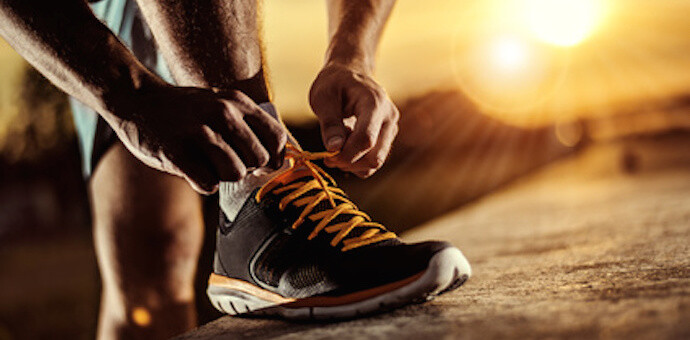
Marathon training can feel as though it goes on forever and ever. Now is the time to be a little less structured with your workouts. Give yourself the freedom to workout later in the day on the weekends. Don’t be afraid to miss a workout to see friends, or just cut yourself some slack when you need it. Make sure you’re doing the work you need to (base building and strength training), but don’t go crazy. Once marathon training officially starts, you’ll need to be on your ‘A game’ and giving yourself some time to breathe now will set you up for success.
4.- Build your running base.
Before you begin training, you’ll need to have completed 4-6 weeks of consistent running. The number of miles you’ll need to run per week to build your base depends on your goal for the marathon, your running history and what kind of mileage you’ll be doing during the first month of your training plan.
5.- Have fun with your workouts.
This is a time when you can try out all the fun fitness classes in your neighborhood without having to worry about how they will interfere with marathon training. Once marathon training starts, there won’t be much time for exploring new workouts.
6.- Improve your running form.
Now is the time to focus on stride rate, stride length, foot strike, arm swing, etc. Small changes made over time can make you a more efficient runner.
7.- If you had any nagging injuries you haven’t taken care of, see a doctor or physical therapist.
Don’t wait for a small twinge to become a real injury.
(11/21/2024) ⚡AMPby Jess Underhill
Afghan sprinter homeless in Germany after Paris Olympics
Less than four months ago, Afghanistan sprinter Sha Mahmood Noor Zahi proudly carried his country’s flag down the River Seine at the 2024 Paris Olympics. A week later, he became a household name in Afghanistan by setting a national record in the men’s 100m preliminary round, missing a qualifying spot in the heats by just one place. At that moment, Noor Zahi made the biggest decision of his life: choosing to leave his country with a one-way ticket to Germany in hopes of a better future.
In an interview with the German newspaper Süddeutsche Zeitung, Noor Zahi said he has been living in a shelter in the city of Schweinfurt for the past few months while awaiting his asylum application. Though he does not speak English or German, he can be found training four to (sometimes) five hours a day at Sachs Stadion, the home of the city’s soccer team.
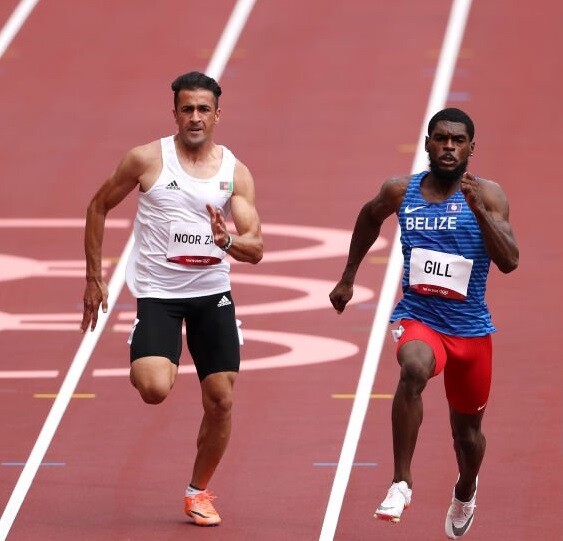
The 33-year-old achieved his dream of running at the Olympic Games through a universality place selection for Tokyo 2020. (The program aims to ensure broader global representation at major championships by allowing athletes from countries with less-developed sports programs to participate). Noor Zahi has taken full advantage of the opportunity, lowering his 100m personal best from 11.04 seconds to 10.64 seconds in the span of three years. Although he does not have a coach, he continues to follow the training plan he received in Iran before the Paris Olympics.
Noor Zahi’s main goal is to qualify for the 2028 Olympics in Los Angeles (his third Olympics), when he would be 37. He has ambitions to become the first person from his country to run under 10 seconds and qualify for an Olympic final. “I’ve run and run to overcome many obstacles,” he said about his challenges. “So why stop now?”
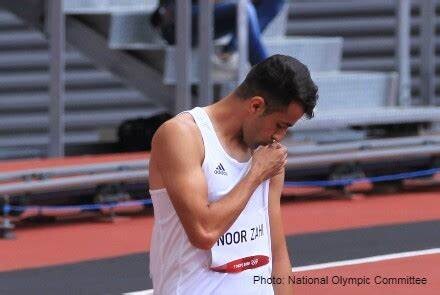
An athlete he has always admired is Jamaica’s Usain Bolt, whom he recalls watching in videos on his mobile phone in his younger days in Afghanistan. Noor Zahi pointed to Bolt’s speed, confidence and the way he graced the track. For Noor Zahi to achieve his goal, he needs to stay in Germany, where he can continue to train and pursue a career in athletics.
The situation in his home country remains dire. The radical Islamist Taliban group regained power in 2021 after the withdrawal of international troops. Since then, the group has been publicly executing people in stadiums, and women are only allowed on the streets when accompanied by men.
Noor Zahi is aware that he is also fighting a battle against time in sprinting, where athletes over 30 rarely set personal bests. His idol, Bolt, set his world record at 23 and was 30 when he won his final Olympic medals in Rio 2016.
(11/21/2024) ⚡AMPby Marley Dickinson
Mary Moraa 'back to the grind' ahead of tough 2025 season
Mary Moraa has resumed training as she plans to defend her world title amid the rise of strong 800m runners including Keely Hodgkinson and Athing Mu.
Mary Moraa has resumed training ahead of a tough 2025 season where she has a huge task of defending her world title at the World Championships in Tokyo, Japan.
The reigning world champion will battle for the title alongside very formidable 800m runners who have emerged this season. The Commonwealth Games champion lines up against Keely Hodgkinson, Tsige Duguma and Athing Mu alongside other 800m athletes.
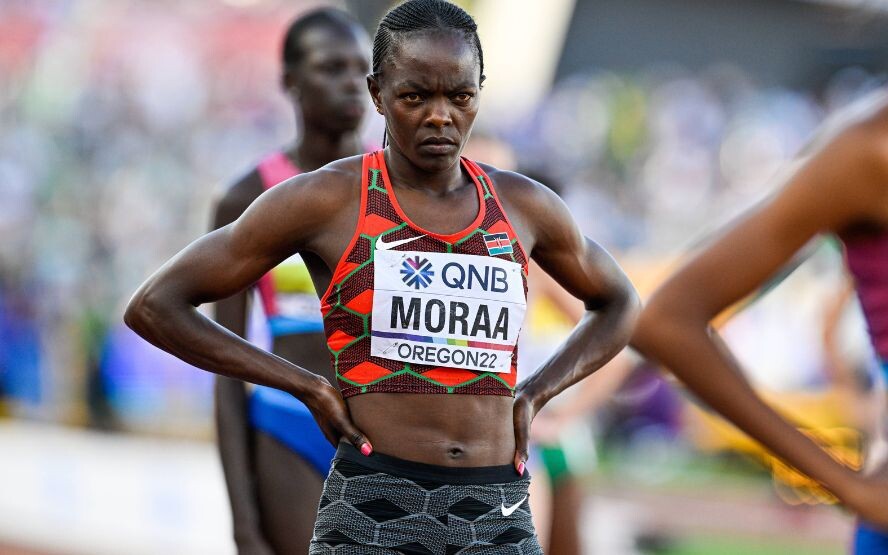
Mary Moraa had a mixed season this year and she will be looking to work on the finer things so as to be ready next season. She was off to a great start to her season, winning the 400m at the African Games then anchored the 4x400m mixed relay team to a bronze medal.
The Kenyan 800m star then proceeded to claim the win at the Kip Keino Classic before reigning supreme at the Diamond League Meeting in Doha and finished second at the USATF Los Angeles Grand Prix and Prefontaine Classic.
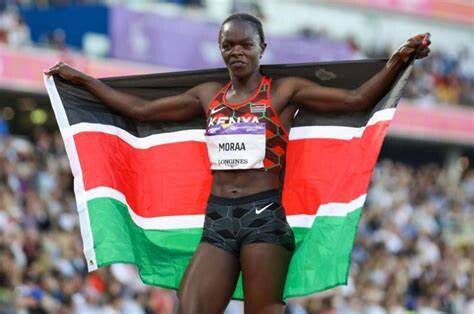
Moraa then finished second at the Kenyan Olympic trials and then won the bronze medal at the Paris Olympics. She bounced back to take the win at the Diamond League Meeting in Lausanne and finished third in Silesia. She won the 600m in a world best time at the ISTAF 2024 and then claimed wins in Zurich and the Diamond League Meeting final in Brussels.
Mary Moraa rounded up her season with a second-place finish at the Athlos NYC. Going back into training, she hopes to polish a lot of things and bounce back stronger to maintain a winning streak in 2025.
“It's about time...back to the grind ?,” Mary Moraa shared in a post on her Facebook page, adding, “Nice morning cruise with Brandon and the gang after a deserved break.”
Her competitors are also not resting on their laurels with Keely Hodgkinson, the reigning Olympic champion, making it clear that she will be going for the world title since it’s one of the titles she has yet to win.
Her coaches, Jenny Meadows and Trevor Painter have also revealed that she will be attacking both the indoor and outdoor world records in the near future.
“There’s no silvers and bronzes, now we have to do gold all the way forward, we don’t want to take any backward step and I just hopefully think that Keely can dominate and we’ve got the indoor world record to go at and in the next couple of years we’ll go after the tough world record. I think she can do it,” Jenny Meadows said.
“If she’s got the leg speed to get closer to her rivals, then they can’t out strength her so it was magic. The indoor one is easier to get than the outdoor but we’ll have a crack of both and see what happens,” Trevor Painter added.
On her part, after a heartbreaking 2024 season marred with injuries and missing out on the Paris Olympic Games, Athing Mu has already started preparation for the 2025 season.
The former world champion noted that the World Championships are her major target for the season and she is working towards making it through the trials and then heading to Tokyo.
“Well, trackwise we have the World Championships in September next year and it’s in Tokyo…first of all I pray we make it through trials and then we make it to that race,” Athing Mu said.
“I feel like it’s going to be a circle moment for me because that’s basically where I started and then I had some highs and lows.”
(11/21/2024) ⚡AMPby Abigael Wafula
Three reasons why treadmill running is fantastic
In every running group, there are always a few people who love to grumble endlessly about how much they hate treadmill running. But here’s the thing: running on a treadmill has its perks, and we’re here to give it the credit it deserves.
We get it—the “dreadmill” jokes practically write themselves. There’s also always a die-hard outdoor crew who take pride in braving icy sidewalks and freezing winds to avoid setting foot indoors. If you’re one of those runners who actually enjoys hopping on the treadmill now and then, don’t let the naysayers get to you. Whether you love the predictability, the convenience, or just the chance to run without layering up like you’re racing an Arctic marathon, your preference makes perfect sense. And guess what—you’re not alone.
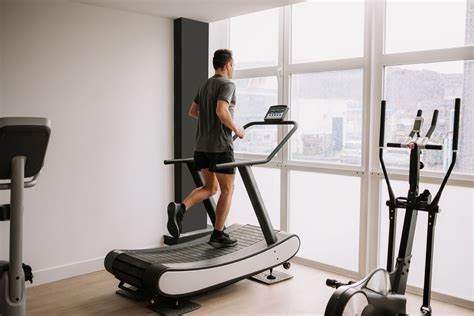
1.- A treadmill is the perfect training partner
A treadmill offers precision that outdoor running can’t always match. If you’re looking to nail a steady pace or hit a specific incline during your hill-training sessions, the treadmill delivers. Its cushioned surface also feels kinder on your body than pounding pavement—for newer runners or those returning from an injury, this can be a huge help when it comes to staying consistent without overloading your body. The treadmill can be a fantastic, customizable tool that will help you smash your goals, with the complete control it allows over speed, incline and distance.

2.- Enjoy a unique mental challenge (and maybe a Netflix challenge, too)
Hey, you never need an excuse to rest and relax—but if you’re looking to justify that multi-hour Netflix binge, your treadmill long run has you covered. The miles will melt away as you dive into your favourite thrilling series or indulge in a few Hallmark Christmas specials (hey, we don’t judge). Want to channel your inner David Goggins and take on a next-level mental challenge? Skip the screen and stare at the wall in front of you for hours instead. It’s a bold choice, but who are we to question your grit?
3.- You can learn to love it
As someone who has bounced between the treadmill skeptics and fans, I can confirm that hitting that start button can absolutely grow on you. After enduring frostbitten fingers during brutal winter long runs and even breaking a leg on an icy sidewalk, I decided it was time to embrace the treadmill with an open mind. These days, whether I’m catching up on my favourite show, tackling a tough incline workout (a rarity in my pancake-flat prairie town) or squeezing in a run during odd hours when the streets feel less inviting, the treadmill has earned a permanent spot in my running routine.
Don’t get me wrong—I’ll always love the crunch of crisp fall leaves underfoot or the magic of a snowy trail. But there’s something equally liberating about knowing I can keep my training consistent, no matter what the weather or circumstances throw my way.
(11/20/2024) ⚡AMPby Keeley Milne
Noah Lyles younger brother Josephus inspires young athletes in Nigeria
The American sprinter has inspired young athletes in Nigeria by donating running kits to help nurture their talents and pursue their dreams in athletics.
Noah Lyles’ younger brother Josephus Lyles has impacted the lives of young kids in Nigeria by donating running kits as he seeks to build his own legacy.
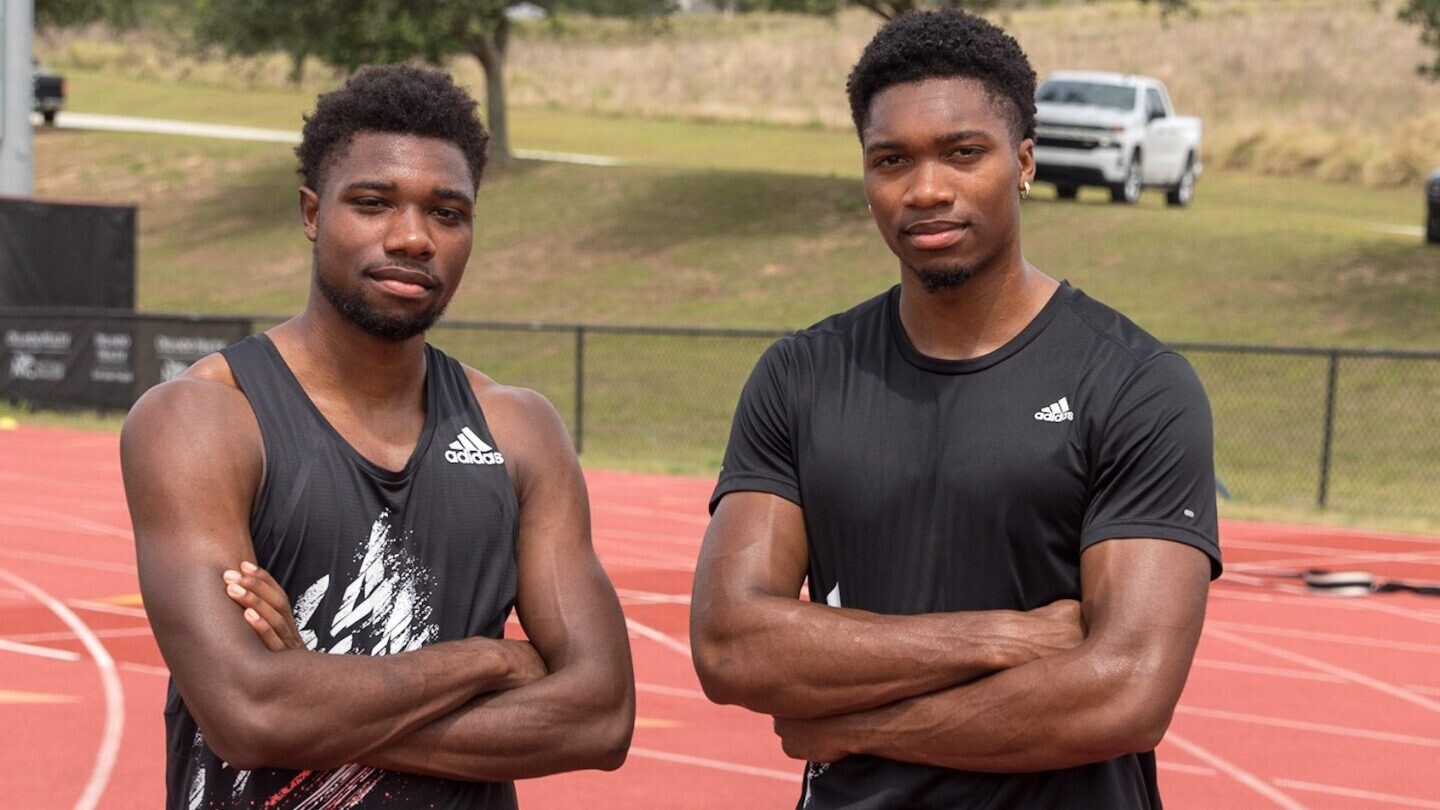
Through his foundation, Josephus Lyles donated important running gear including canvases, spikes, and other training kits. He made the donations possible through Nigerian athletics coaches Kayode Yaya and coach Osuagwu Chima.
The young kids from the HIT Athletics Club in Benin, Edo State-Nigeria will now train without difficulties thanks to Josephus. Coach Kayode Yaya, who coaches Nigeria’s long jump sensation Ese Brume, was in awe of the kindness show by Noah Lyles’ younger brother.
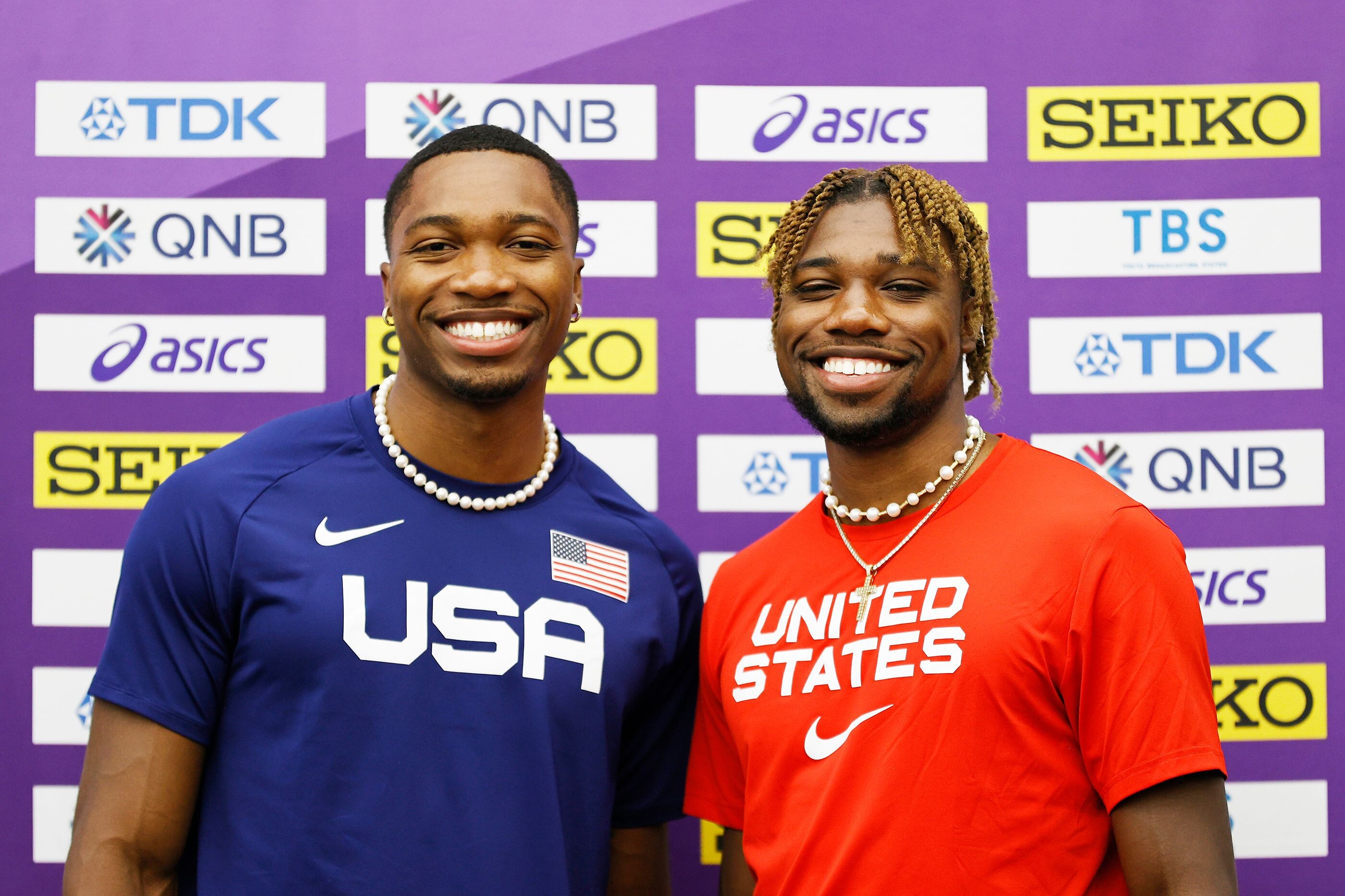
He explained that the young athletes will certainly be filled with joy following the gesture from the American sprinter and it is proof to them that they have a bright future when it comes to athletics.
"This donation means so much to our young athletes. Josephus’ generosity provides not only equipment but inspiration and hope. He has shown them that their dreams are within reach and that their hard work is recognized, even from across the globe,” Coach Yaya said.
Meanwhile, the donation will be looking to aid the young, talented athletes, who lack access to quality training equipment. This will help them nurture their talent and help them grow in the sport. Coach Yaya explained that the resources will place them in a better position to train with confidence and pursue excellence.
This season, Josephus Lyles missed the Paris Olympic Games as he finished outside the podium bracket in both the 100m and 200m at the US Olympic trials.
In the men’s 100m, he was eliminated in the semifinal after finishing fifth as his brother, Noah Lyles claimed the win. In the semifinal of the 200m, he finished fourth and could not proceed to the final. He rounded up his season in July and has been training since then in preparation for the 2025 season.
Josephus Lyles will be looking to follow in the footsteps of his elder brother Noah Lyles and make it to the World Championships in Tokyo, Japan.
(11/20/2024) ⚡AMPby Abigael Wafula
World half marathon champion Sabastian Sawe to lead Kenyan quartet against star-studded Ethiopian lineup at Valencia Marathon
The debuting quartet of Sebastian Sawe, Daniel Mateiko, Mathew Kimeli, and Hillary Kipkoech will attempt to challenge the Ethiopian dominance at the Valencia Marathon
The Kenyan athletics scene will once again be in the spotlight as four formidable runners Sebastian Sawe, Daniel Mateiko, Mathew Kimeli, and Hillary Kipkoech gear up to challenge Ethiopia's dominance at the Valencia Marathon on December 1.
Each member of this Kenyan quartet has established themselves as a powerhouse in road running and half marathons, promising an electrifying race against a star-studded Ethiopian lineup.
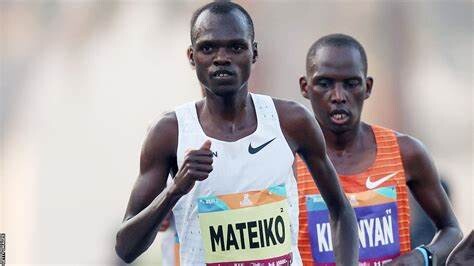
Leading the charge for the Kenyan team is Sebastian Sawe, the reigning World Road Running champion.
Sawe has completed all nine of his half marathons under the coveted 60-minute mark, boasting a personal best (PB) of 58:02.
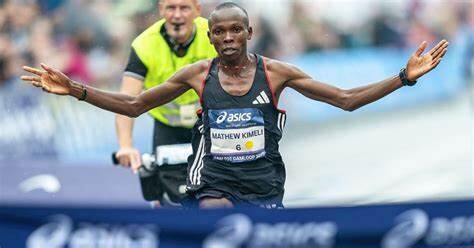
Close on his heels is Mateiko, another consistent performer who has clocked sub-59-minute times on seven occasions, making him one of the most reliable half-marathoners in the world.
Kipkoech, who holds a PB of 59:22, enters the marathon as a serious contender after previously pacing Ethiopian course record holder Sisay Lemma in 2023.
Kimeli who triumphed at the 2023 Bangsaen21 Half Marathon in Thailand with a time of 1:03:39, adds another layer of depth to Kenya’s challenge.
The Kenyan quartet will face stiff competition from a stellar Ethiopian team led by Sisay Lemma, the Valencia Marathon course record holder.
Lemma’s breathtaking 2:01:48, set last year, ranks as the sixth-fastest marathon time in history.
Following his Valencia triumph, Lemma claimed the Boston Marathon title earlier this year with a time of 2:06:17.
Joining Lemma is Ethiopian legend Kenenisa Bekele, whose PB of 2:01:41 makes him the fastest man in the field.
Bekele, a three-time Olympic gold medalist and five-time world champion, continues to be a force at the marathon distance, ranking third on the all-time list.
The Ethiopian roster further includes two-time Tokyo Marathon champion Birhanu Legese, winner of the 2021 Berlin Marathon Guye Adola and Olympian Deresa Geleta who placed fifth at the 2024 Paris Olympics.
(11/20/2024) ⚡AMPby Stephen Awino
VALENCIA TRINIDAD ALFONSO
The Trinidad Alfonso EDP Valencia Marathon is held annually in the historic city of Valencia which, with its entirely flat circuit and perfect November temperature, averaging between 12-17 degrees, represents the ideal setting for hosting such a long-distance sporting challenge. This, coupled with the most incomparable of settings, makes the Valencia Marathon, Valencia, one of the most important events in...
more...'Just win the day' - Gabby Thomas on what is motivating her to shake off post-season blues
Olympics champion Gabby Thomas has shed light on how she is coping with post-season blues which made her first day back in training difficult to deal with.
Multiple Olympics champion Gabby Thomas has given fans an insight into her first day of training as she bids to get back in shape for the 2025 season.
Thomas returned to work after enjoying a well-earned break but she is facing difficulties shaking off the post-season blues and she had to summon enough strength to complete her workout.
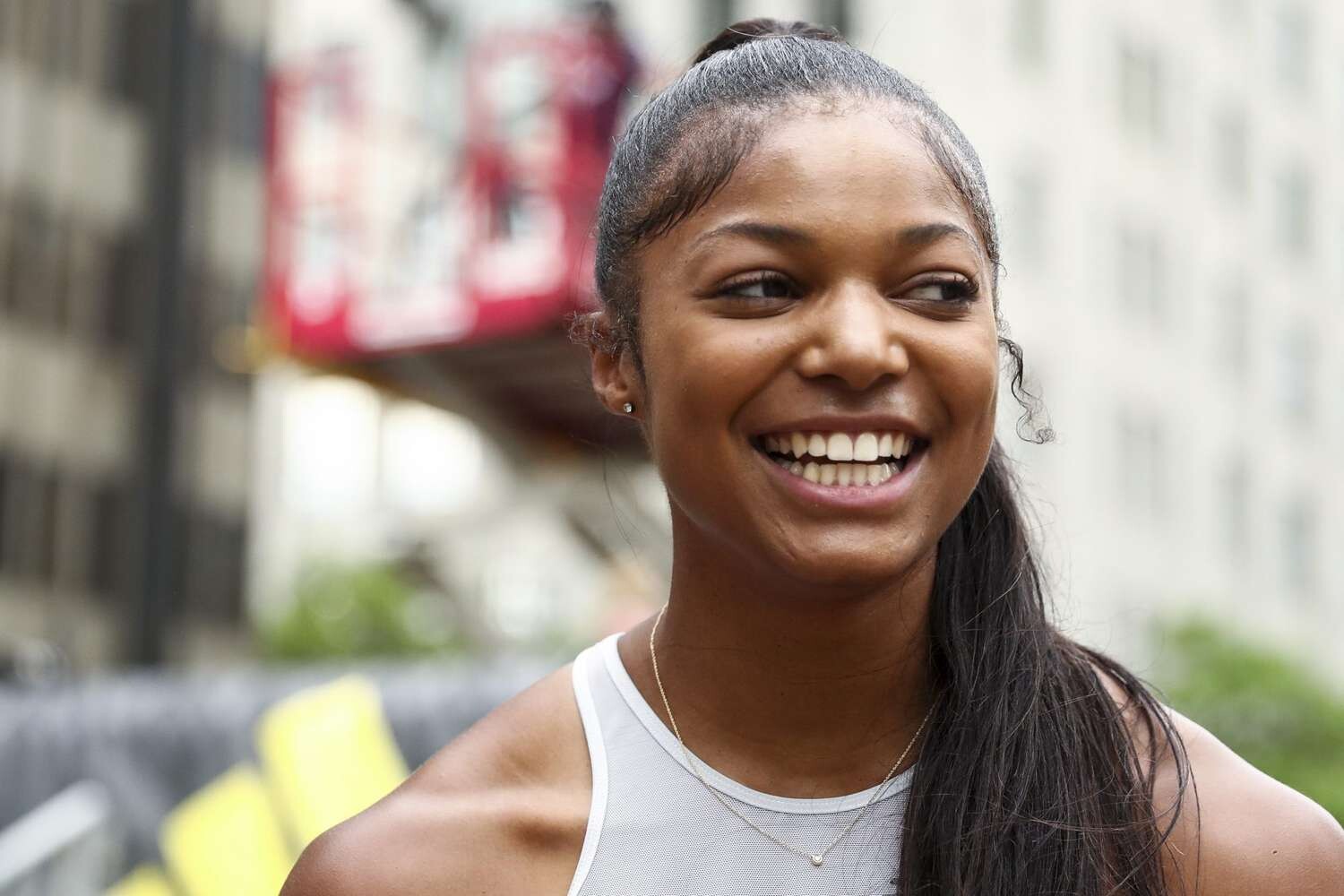
The three-time Olympics champion explained how she needed to set goals for herself to be able to accomplish what she set out to do on the first day and was glad that all went to plan.
“I just finished day one of training for the next season. I have the World Championships in September of 2025 so we started training today (Tuesday),” Thomas posted on TikTok.
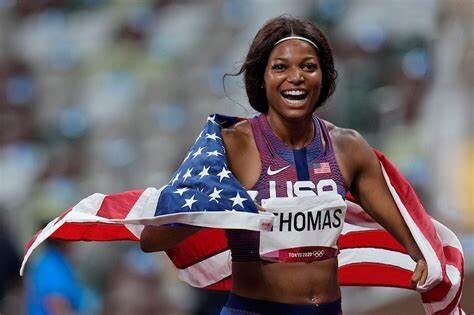
“So many months out and I am not in the same fitness that I was for the Olympics. I am not in that shape. Today was hard,” she admitted.
“I did a one-mile time trial and I did 20 100m runs and it was really difficult but there is a tip if you are going through any type of process. I would say just win the day.
“I focus on winning my set and I focus on winning that rep. I broke it down and I won each moment then I won the day.
“So, it was a great training session, I can’t wait to get back out here and conquer day two.”
Thomas will be among the star names at next year’s World Championships in Tokyo, Japan where she will be looking to win her first world title.
The 27-year-old had an incredible 2024 season, winning Olympics gold in 200m, 4x100m and 4x400m relays which saw her crowned US Athlete of the Year last week.
(11/20/2024) ⚡AMPby Joel Omotto
Everything you need to know about effort-based running
If you’ve spent time around coaches or training groups, you’ve probably heard the acronym RPE tossed around, referring to the Rate of Perceived Exertion. If you’re not already familiar with how RPE works, it might sound intimidatingly like a technical term, but it’s actually a simple and intuitive way to gauge how hard you’re working. Here’s how it works and why you might want to give it a try.
What is RPE?
RPE is a scale that rates how intense a workout feels to you, usually from one to 10, with one being “barely any effort” and 10 being “all-out sprint.” Developed to help athletes learn how their bodies respond to different levels of effort, RPE provides an easy, flexible way to adjust your workout based on how you feel on any given day.
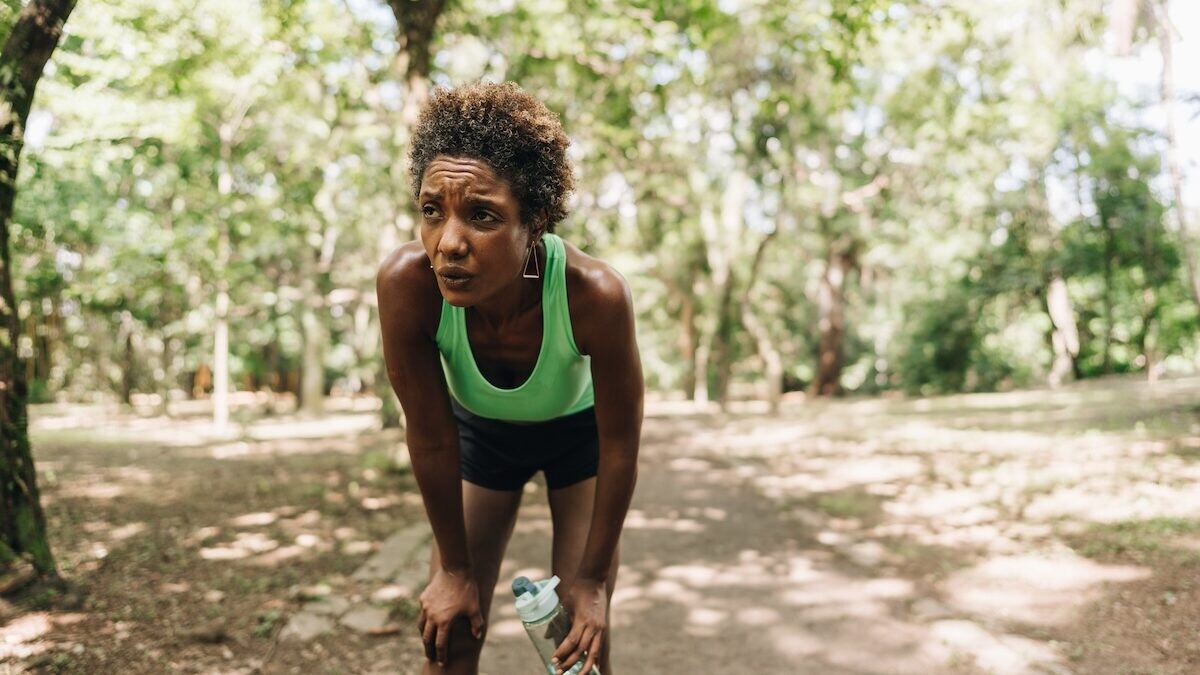
Why RPE works (and when it doesn’t)
For runners, RPE can be a transformative tool. Instead of chasing a specific pace, you’re focusing on effort, which can help you tune in to how your body feels, rather than risking overloading it by trying to run a pace you can’t manage. On days you’re well-rested, you might be able to push a little harder; on off days, RPE helps you ease up without feeling guilty.
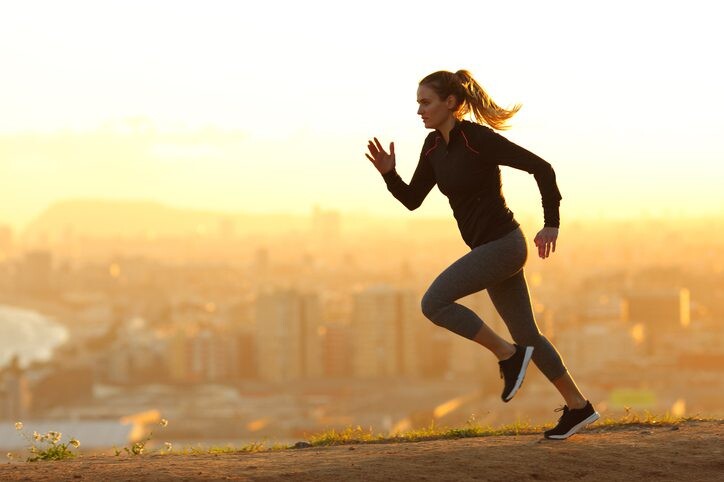
But RPE isn’t perfect. Since it’s subjective, it can vary from runner to runner—and beginners may struggle to gauge effort accurately. A “moderate” effort to one person might feel much tougher to someone just starting out, making it tricky to follow a coach’s RPE-based plan if you’re new to running.
How to use RPE in your training
Incorporating RPE into your runs is easy: start by assigning numbers to different kinds of workouts. A relaxed recovery run might rate around a three or four, while a steady tempo run could feel like a six or seven, and a sprint session would push you up to an eight to 10.
Using RPE alongside more specific metrics (like pace or heart rate) can offer a fuller picture. For instance, if your tempo run feels like a nine one day but you’re hitting your usual pace, it might be a sign you need more rest. Or, if your easy run feels too easy at two, it could be a day to bump up the intensity.
RPE is a versatile tool that can help runners adapt training to fit real-life ups and downs. Like most things, it takes some practice to align your efforts along the RPE scale, but no matter your level of experience, using RPE can help you train smarter by running at a level that feels right.
(11/19/2024) ⚡AMPby Keeley Milne
2024 Valencia Marathon Elite Fields Announced: Sisay Lemma, Kenenisa Bekele and Amane Beriso Headline
Race organizers for the Valencia Marathon have announced the elite fields for the 2024 edition of the race on Dec. 1.
The field is headlined by 2024 Boston Marathon champion Sisay Lemma returning from injury after withdrawing from the Paris Olympics. He will be challenged by his compatriot and all-time great Kenenisa Bekele, who finished second in April’s London Marathon and 39th at the Paris Olympics at 42 years old.
Kenya’s Sebastian Sawe, who boasts a half marathon personal best of 58:05, and Daniel Mateiko, who has also run 58:17 for the half, are the most intriguing debutants.
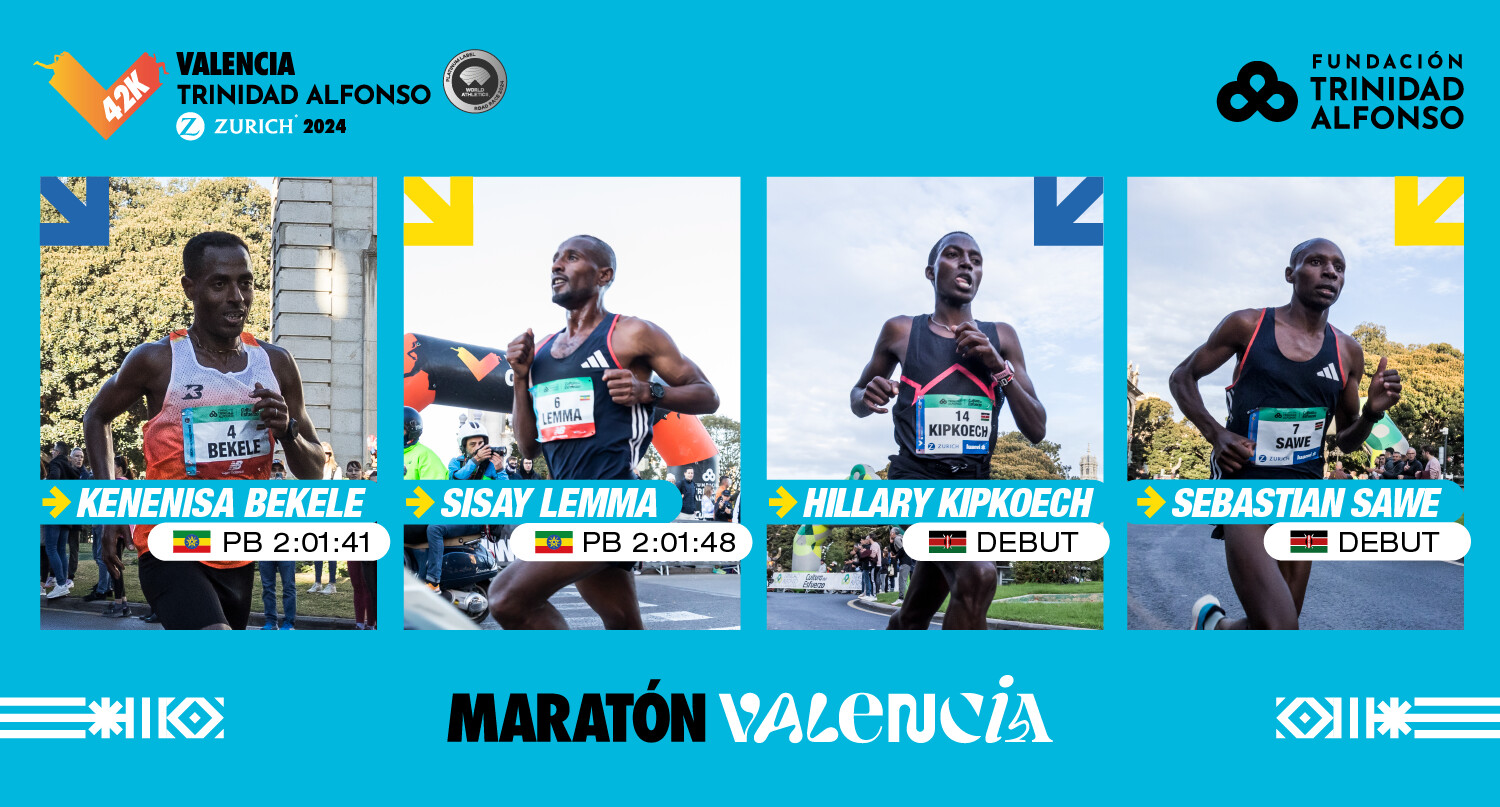
On the women’s side, 2023 World champion Amane Beriso headlines the field with her 2:14:58 personal best from the 2022 Valencia Marathon, which puts her at No. 6 on the all-time list. Her fellow countrywomen Megertu Alemu (2:16:34) and Hiwot Gebrekidan (2:17:59) are the only two other women under 2:18.
American Sara Hall will be running her fourth marathon of the year. Biya Simbassa, who has a personal best of 2:10:34 and was 11th at the U.S. Olympic Marathon Trials in February, is heading to Spain for his third career marathon.

Here’s a list of the notable men who are running…
Men’s Elite Field
Kenenisa Bekele – 2:01:41
Sisay Lemma – 2:01:48
Birhanu Legese – 2:02:48
Deresa Geleta – 2:03:27
Guye Adola – 2:03:46
Gashau Ayale – 2:04:53
Tadesse Abraham – 2:05:01
Alphonce Simbu – 2:05:39
Sondre Moen – 2:05:48
Samwel Fitwi – 2:06:27
Andamlak Belihu – 2:06:40
Maru Teferi – 2:06:43
Shokhrukh Davlyatov – 2:07:02
Richard Ringer – 2:07:05
Zerei Kbrom – 2:07:10
Iliass Aouani – 2:07:16
Samuel Barata – 2:07:35
Héctor Garibay – 2:07:44
Ibrahim Chakir – 2:07:48
Mohamed El Talhaoui – 2:08:03
Peiyou Feng – 2:08:07
Dani Mateo – 2:08:22
Lahsene Bouchikhi – 2:08:36
Abderrazak Charik – 2:08:37
Andy Buchanan – 2:08:58
Weldu Negash Gebretsadik – 2:09:14
Therence Bizoza – 2:09:18
Yohan Durand – 2:09:21
Mohamed Chaaboud – 2:09:21
Simon Boch – 2:09:25
Yimer Getahun – 2:09:27
Bukayawe Malede – 2:09:28
Emmanuel Roudolff – 2:09:34
Yohanes Chiappinelli – 2:09:46
Stephen Scullion – 2:09:49
Paulo Paula – 2:09:50
Peter Herzog – 2:10:06
Bart van Nunen – 2:10:16
Felicien Muhitira – 2:10:17
Dieter Kersten – 2:10:22
Arkadiusz Gardielewski – 2:10:31
Bjorn Koreman – 2:10:32
Abbabiya Simbassa – 2:10:34
Hicham Sigueni – 2:10:37
Johannes Motschmann – 2:10:39
Patricio Castillo – 2:10:40
Jorge Blanco Alvarez – 2:10:49
Archie Casteel – 2:10:49
Yongzheng Huang – 2:10:49
Jakoub Labquira – 2:10:50
Alejandro Jiménez – 2:10:54
Juan Luis Barrios – 2:10:55
Thijs Nijhuis – 2:10:57
Iraitz Arrospide – 2:10:59
Christian Zamora – 2:11:02
Nicolás Cuestas – 2:11:03
Edward Cheserek – 2:11:07
Kamil Jastrzebski – 2:11:09
Necho Tayachew – 2:11:21
Richard Douma – 2:11:21
Linus Rosdahl – 2:11:30
Mohamed El Ghazouany – 2:11:48
Thomas do Canto – 2:11:51
Hesiquio Flores – 2:11:57
Ahmed Elhassouni – 2:12:12
René Cunéaz – 2:12:48
Mario Bauernfeind – 2:12:49
Patrik Wageli – 2:12:58
Jason Pointeau – 2:13:00
Adam Lipschitz – 2:13:01
Joris Keppens – 2:13:18
Alexis Godefroy – 2:13:32
Pierre Denays – 2:13:34
Sebastian Sawe – Debut
Daniel Mateiko – Debut
Matthew Kimeli – Debut
Dillon Maggard – Debut
Here’s a list of the notable women who are running…
Amane Beriso – 2:14:58
Megertu Alemu – 2:16:34
Hiwot Gebrekidan – 2:17:59
Tiruye Mesfin – 2:18:47
Stella Chesang – 2:20:23
Sara Hall – 2:20:32
Majida Maayouf – 2:21:27
Evaline Chirchir – 2:22:11
Chimdesa Kumsa – 2:22:13
Isobel Batt-Doyle – 2:23:27
Malindi Elmore – 2:23:30
Sofia Assefa – 2:23:33
Fionnuala McCormack – 2:23:58
Jessica Stenson – 2:24:01
Gerda Steyn – 2:24:03
Laura Hottenrott – 2:24:32
Camilla Richardsson – 2:24:38
Kaoutar Boulaid – 2:25:03
Clara Evans – 2:25:04
Fatima Azzaharaa Ouhaddou – 2:25:30
Laura Luengo – 2:25:35
Susana Santos – 2:25:35
Moira Stewartova – 2:25:36
Marie Perrier – 2:26:19
Tereza Hrochová – 2:26:38
Zhanna Mamazhanova – 2:26:42
Aleksandra Brzezinska – 2:27:20
Solange Jesus – 2:27:30
Paola Bonilla – 2:27:38
Nora Szabo – 2:28:25
Jane Bareikis – 2:29:00
Becky Briggs – 2:29:06
Alice Wright – 2:29:08
Roberta Groner – 2:29:09
Molly Gravill – 2:29:45
Monika Jackiewicz – 2:29:51
Event organizers announced the race will move forward as scheduled despite severe flooding and more than 200 deaths in the Valencia province. In a statement, organizers announced fundraising plans to aid the city and those affected by the recent storms and flooding.
(11/19/2024) ⚡AMPby Chris Chavez
VALENCIA TRINIDAD ALFONSO
The Trinidad Alfonso EDP Valencia Marathon is held annually in the historic city of Valencia which, with its entirely flat circuit and perfect November temperature, averaging between 12-17 degrees, represents the ideal setting for hosting such a long-distance sporting challenge. This, coupled with the most incomparable of settings, makes the Valencia Marathon, Valencia, one of the most important events in...
more...Mo Farah catches a moving vehicle after thieves steal his phone
Typically, runners are confident they can outrun anyone (or anything) in a non-race scenario. Missed the bus? No problem–you’ll catch it at the next stop. Someone snatched your purse? They won’t get far. Last week, four-time Olympic gold medallist Sir Mo Farah confirmed this theory–while on foot, the athlete reportedly pursued and caught thieves who drove away with his phone.
A year of retirement from competition seems to have had little impact on Farah’s top-tier fitness. While jogging with his wife, Tania, through his estate in Surrey, U.K., Farah set his phone down by the side of the road to collect it at the end of his run. (Farah and his family reside in a 964-acre gated community with extensive security.)

According to the Daily Mail, two men in a white van somehow slipped by the guarded entrance and nabbed the phone. Farah sprinted after the trespassers as they drove away, successfully catching them and taking back his device. Sources say he is angry about the security breach and an investigation has been launched.
This isn’t the first time Farah has faced members of the public in a “race.” Last year, he competed in a 100m dads’ race at one of his kids’ schools. But in that instance, even wearing track spikes, he finished third, losing to a dad who was wearing jeans.
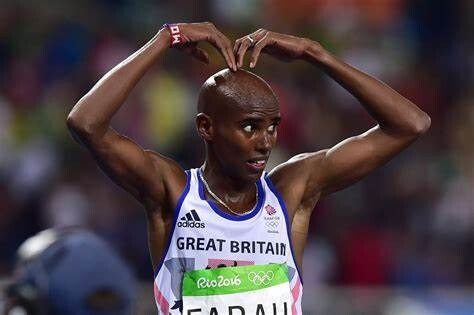
Alongside his four Olympic golds, Farah has six world championship titles in the 5,000m and 10,000m events, and was the second runner in history to win the 5,000 and 10,000m at back-to-back Olympic Games. In 2016, he moved up to the marathon, winning the Chicago Marathon in 2018 and finishing third in London the same year. The British athlete retired last September; the 2023 Great North Run in Newcastle, U.K., marked his final competition.
(11/19/2024) ⚡AMPby Cameron Ormond
Chebet and Ndikumwenayo victorious in Seville
Kenya’s double Olympic champion Beatrice Chebet and Spain’s Thierry Ndikumwenayo were the winners at the Cross Internacional de Itálica – a World Athletics Cross Country Tour Gold meeting – held on the outskirts of Seville on Sunday (17).
While two-time world cross-country champion Chebet was a dominant winner of the women’s race, European 10,000m bronze medallist Ndikumwenayo prevailed in a much tighter finish over Burundi’s Rodrigue Kwizera and pre-race favourite Ethiopia’s Berihu Aregawi in the men’s contest.
Chebet set a swift pace from the outset, and after just one minute of running she already had a lead over a chase quintet comprising Kazakhstan’s Deisy Jepkemei, Uganda’s Charity Cherop and Kenya’s Mercy, Diana and Sharon Chepkemoi. European 5000m bronze medallist Marta García and fellow Spaniard Carolina Robles were a few metres back, alongside Sweden’s Sarah Lahti.
Chebet covered the opening 2.5km loop in a brisk 7:36, six seconds faster than Jepkemei, herself another three clear of Cherop. The world 10,000m record-holder almost matched that pace on the second lap (7:44), by which time she had doubled her leading margin to 12 seconds.
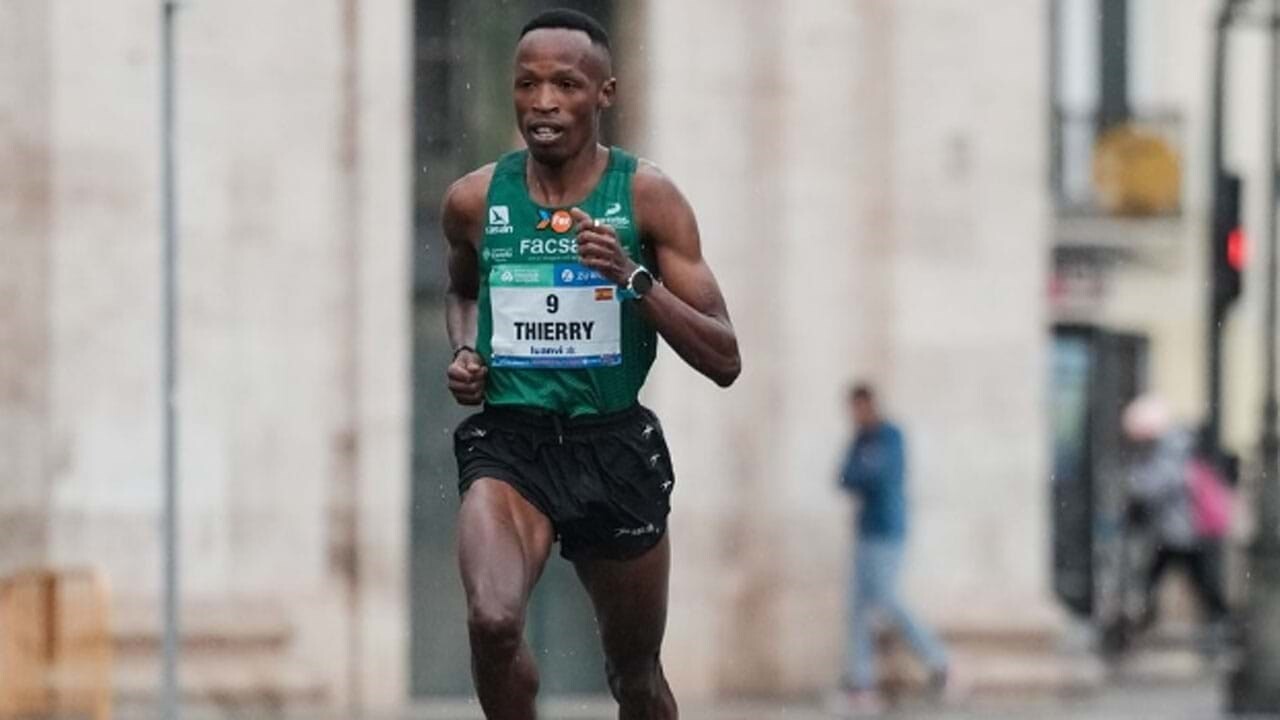
Over the closing circuit, Chebet maintained her cadence and produced a 7:42 lap to seal the victory. By the time she crossed the finish line in 23:32, her lead had grown to 27 seconds over Jepkemei with Cherop holding off her pursuers to secure third place.
“It was my third appearance here and I managed to triumph at last so I’m very satisfied,” said Chebet. “It has also been very nice to share the weekend with my young compatriots Mercy, Diana and Sharon Chepkemoi.”
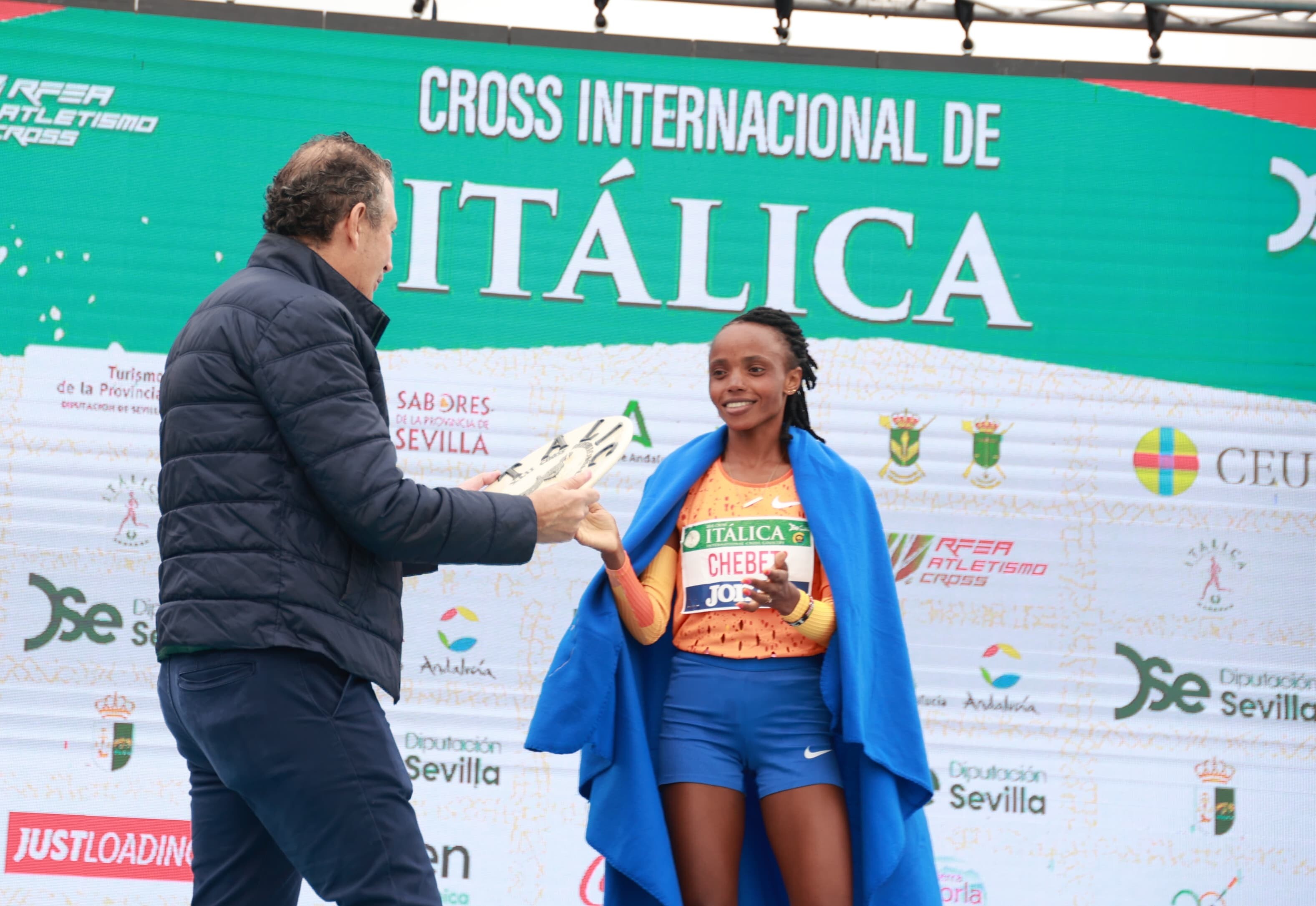
Unlike the women’s contest, the men’s race opened at a moderate rhythm. Morocco’s Younes Kniya was the surprise early leader, covering the opening lap in 7:13 while a large chase pack followed in 7:16.
European half marathon champion Crippa caught Kniya shortly after the fourth kilometre. At the bell – with the second lap having been covered in 7:03 – Crippa headed a group of eight men which included Olympic 10,000m silver medallist Berihu Aregawi. The 23-year-old Ethiopian took command for the first time about 18 minutes into the race but his lead proved to be short-lived as Kwizera and Ndikumwenayo moved to the front and began to push hard.
Crippa lost ground with about 700m left. Then, over the closing 500m, Ndikumwenayo’s fierce attack paid off as he managed to build a slight advantage on Kwizera while Aregawi struggled and just couldn’t follow their pace.
With the final lap covered in 6:36, Ndikumwenayo crossed the finish line ahead of his training mate Kwizera, though both were given the same time (21:24). Aregawi took third spot in 21:27 with Crippa another five seconds in arrears.
“I didn’t expect to win as my only target today was to help my club (Playas de Castellón) to win the national team title but I felt strong throughout and decided to go for the victory over the last lap,” said Ndikumwenayo, the winner here two years ago. “I’m now going to return to the altitude of Sierra Nevada where I’m building up for the European Cross Country Championships which will be next competition.”
Leading results
Women
1 Beatrice Chebet (KEN) 23:32
2 Daisy Jepkemei (KZK) 23:59
3 Charity Cherop (UGA) 24:35
4 Diana Chepkemoi (KEN) 24:38
5 Mercy Chepkemoi (KEN) 24:46
6 Marta García (ESP) 24:50
Men
1 Thierry Ndikumwenayo (ESP) 21:24
2 Rodrigue Kwizera (BDI) 21:24
3 Berihu Aregawi (ETH) 21:27
4 Yemaneberhan Crippa (ITA) 21:32
5 Kenneth Kiprop (UGA) 21:41
6 Adel Mechaal (ESP) 21:42
(11/19/2024) ⚡AMPby World Athletics
Cross internacional de Italica
The Cross Internacional de Itálica is an annual cross country running competition it will be held on 21st of November in Santiponce, near Seville, Spain. Inaugurated in 1982, the race course is set in the ruins of the ancient Roman city of Italica. As one of only two Spanish competitions to hold IAAF permit meeting status, it is one of...
more...Etienne Daguinos sets European 10km record in Lille
The distance runner clocks 27:04 and takes three seconds off Jimmy Gressier’s mark with super run in French city
Etienne Daguinos set a European 10km record with a sensational performance at Urban Trail de Lille (November 16).
Daguinos, who was part of the French under-23 team that claimed silver at the 2022 European Cross Country Championships, went into the 10km off the back of a personal half-marathon best of 59:46, which put him joint-10th on the European all-time list over 13.1 miles.
“I cannot believe it,” Daguinos said. “Some people might have predicted it [10km record] but I didn’t believe it. I knew that I was in good shape after my half-marathon in Valencia. I wanted to run faster than 27:30 and I am still in shock.”
Not only did Daguinos defeat a strong and deep field in Lille but he did so by running identical 5km splits of 13:32.
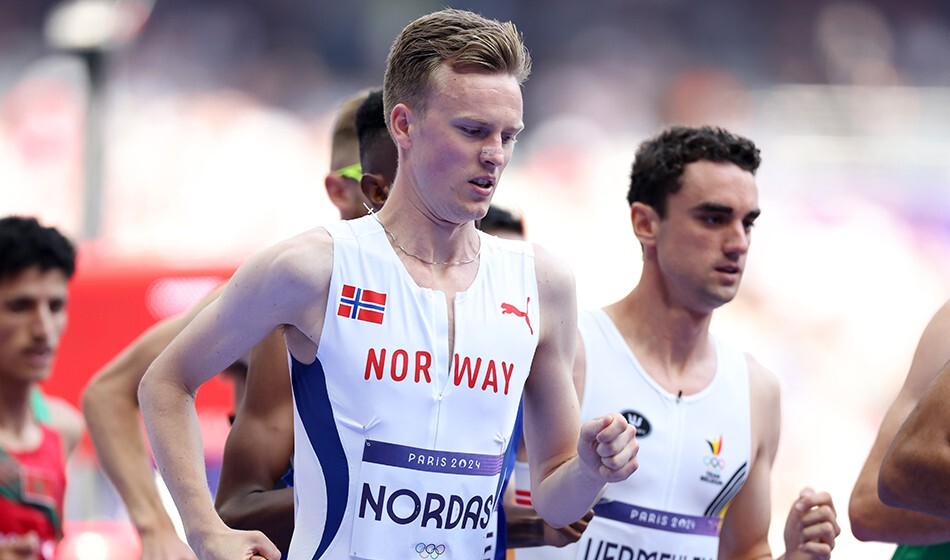
World 1500m bronze medallist Narve Gilje Nordas broke the Norwegian 10km record with 27:31, while Mohamed Abdilaahi clocked 27:40, the fastest time by a German in history.
That put the pair seventh and joint-10th on the European 10km all-time list respectively.
It means that Mo Farah, who ran 27:44 in 2010 and held the European 10km record until Julien Wanders recorded 27:32 in 2018, is now 13th on the rankings.
With six out of the eight fastest 10km times by European male athlete occurring this season, expect the record books to tumble once again next year.
Daguinos, who occasionally trains in Font Romeu and also has a background in trail running, is now in prime position to be the first European athlete to break the 27-minute barrier in the 10km.
Only 29 athletes have ever achieved the feat and they are all from Africa.
(11/19/2024) ⚡AMPby Athletics Weekly
Jacob Kiplimo Shatters the 15k World Record
On November 17, 2024, the running world witnessed a historic moment as Ugandan athlete Jacob Kiplimo shattered the men’s 15-kilometer road race world record at the Zevenheuvelenloop in Nijmegen, Netherlands. Kiplimo completed the race in an astonishing 40 minutes and 27 seconds, surpassing his previous record of 41:05 set in 2023 at the same event.
The Zevenheuvelenloop, or “Seven Hills Run,” is renowned for its challenging course, featuring undulating terrain that tests even the most seasoned runners. Despite these challenges, Kiplimo’s performance was nothing short of extraordinary. He maintained a blistering pace throughout the race, averaging approximately 2:42 per kilometer. His final kilometer was particularly impressive, clocking in at 2:31, which underscores his exceptional endurance and speed.
Kiplimo’s achievement is a testament to his dedication and the rigorous training he has undertaken. At just 24 years old, he has already established himself as a dominant force in long-distance running. His previous accolades include a world record in the half marathon, set in Lisbon in 2021, where he recorded a 15-kilometer split of 40:27 en route to his 57:31 finish. This consistency in breaking records highlights his remarkable talent and potential for future accomplishments.
The significance of Kiplimo’s new world record extends beyond personal achievement; it also places Uganda prominently on the global athletics stage. His success serves as an inspiration to aspiring athletes in his home country and around the world, demonstrating that with perseverance and hard work, extraordinary feats are attainable.
In the women’s category, Kenyan runner Beatrice Chepkoech delivered a stellar performance, finishing the 15-kilometer race in 47 minutes and 12 seconds. Chepkoech, known for her prowess in the 3000-meter steeplechase, showcased her versatility and endurance in road racing, finishing 43 seconds ahead of her closest competitor.
The 2024 Zevenheuvelenloop will be remembered as a landmark event in the history of long-distance running. Jacob Kiplimo’s record-breaking run has set a new benchmark for the 15-kilometer distance, inspiring athletes worldwide to push the boundaries of human performance. As the running community celebrates this monumental achievement, all eyes will be on Kiplimo to see what records he may break next.
(11/17/2024) ⚡AMP
Moderate Exercise Isn't Enough to Offset Sitting All Day, Study Says
If you sit for most of the day, even moderate exercise may not undo the health risks of prolonged sitting, according to a new study published in the journal PLoS ONE.
The study included people ages 28 to 49 who, on average, spend more than 8.5 hours sitting each day. Even when participants met the recommended 150 minutes of moderate exercise or 75 minutes of vigorous exercise per week, they still had higher levels of body mass index (BMI) and elevated total cholesterol.

However, those who spent 30 minutes per day doing vigorous exercise—such as running, playing basketball, or swimming laps—had cholesterol levels similar to those of sedentary people five years younger.
For younger adults, vigorous activities seem to be the most helpful in offsetting the harms of extended sitting, said Ryan Bruellman, MS, an author of the study and a doctoral candidate in the Department of Genetics, Genomics, and Bioinformatics at UC Riverside.
Sitting for too long is not only bad for your back, but it may also speed up the aging process.
“When you don’t move all day, your muscles don’t do the job they’re supposed to do in terms of helping to remove blood sugar and helping to break down fats in the blood,” Keith Diaz, PhD, a certified exercise physiologist and an associate professor of behavioral medicine at Columbia University Medical Center, told Verywell.
People who spend their day sitting behind a desk have a 16% higher chance of death and a 34% higher risk of heart disease compared to those who are more active at work, according to a study published in JAMA Network Open.
One in four American adults sit at least eight hours each day. If you fall into this group, what can you do to reduce the risks that come with sitting most of the day?
Watch How Long You’re Sitting Every Day
Exercise is important, but reducing sitting time is key to cutting down on the risks that come with sedentary behavior. A study published in the Journal of the American Heart Association found that older women who sat for 11 to 12 hours per day still had a high risk for heart disease and death even if they were physically active.
“Individuals can be both highly active and highly sedentary. For example, someone could walk or run or go to the gym every day but still sit for more than 10 hours per day across work and leisure time,” said Steve Nguyen, PhD, MPH, a postdoctoral scholar at the Herbert Wertheim School of Public Health and Human Longevity Science at UC San Diego and first author of the study.
It’s not always easy to get up from your desk. But, when possible, try working movement breaks into your routine. Stand up and move around while on the phone, plan walking meetings with colleagues, or consider a treadmill or cycle desk.
“Sedentary behavior is definitely something we should try to reduce,” Nguyen said.
Take a One-Minute Walk Every Hour
Standing desks might seem like a good solution to sitting all day, but standing for too long might also come with risks, according to a recent study published in the International Journal of Epidemiology.
That study found that standing instead of sitting won’t necessarily decrease heart disease risk. It could actually increase the chance of varicose veins or orthostatic hypotension (low blood pressure that causes dizziness and fainting).
“You have to find a way to move during your day. We know without a doubt that movement is healthier than sitting. So if you’re looking to do something, try to break up your sitting time with some walking, not standing,” Diaz said.
Getting up from your desk and taking a light five-minute walk every half hour has benefits for blood sugar and blood pressure, according to a study Diaz conducted last year.
“That’s a really hard ask for a lot of people,” Diaz said. “Our lowest dose that we tested—move every hour for just one minute—still reduced blood pressure by four to five points. If you do it every hour, you still get some health benefit.”
(11/17/2024) ⚡AMPYou Have No Idea How Gross Your Water Bottle Is. Here’s How to Clean It.
As an active person, staying hydrated is one of your top priorities. Cleaning your water bottle should be high up on your to-do list, too, but for many of us—let’s be honest—it’s not.
This makes for a humbling (and gross) reality check when you go for a drink, glance down at your mouthpiece, and are forced to reckon with a film of mystery gunk that has collected there since the last time you washed it.
Due to busy schedules, forgetfulness, and a lack of extra tumblers, water bottles get nasty quickly. Although we love the sustainable choice of reusing one, that commitment requires some care-taking to avoid illness and maintain good water-bottle hygiene.

Below, experts dig into the dirty details and share their tips for keeping your water bottle safe and sanitary, no matter how many sweaty hikes or shared sips it endures.
What Types of Bacteria Are Lurking in Your Reusable Water Bottle?
According to the Water Quality Association, a not-for-profit organization in the water treatment industry, all drinking water contains microbes or heterotrophic microorganisms, a catch-all term for types of bacteria, mold, or yeast.
A September 2024 survey that swabbed water bottles found that the most common bacteria in reusable bottles were associated with antibiotic-resistant, hospital-acquired infections like pneumonia and meningitis (which can be fatal), and food poisoning, which comes with symptoms like vomiting and diarrhea.
The survey also concluded that Americans’ reusable water bottles, on average, contain 20.8 million CFUs of bacteria—about 40,000 times more than you’d typically find on a household toilet seat.
Exactly what type of invaders your water bottle collects depends on if it has a screw top with nooks and crannies for germs to stow away in, whether or not you share your bottle with others, or if you use it for anything other than water, like coffee or sports
Sugary beverages, in particular, leave behind nutrients for bacteria to feed on and multiply.
Drinking from a Dirty Bottle Can Make You Sick
If you don’t clean your water bottle properly, all kinds of bacteria can start to grow. Ingesting water from an unclean bottle can result in gastrointestinal or respiratory issues, says Qinchun Rao, a professor of Food and Nutrition at Florida State University.
How to Tell When Your Water Bottle Is Dirty
Acceptable levels of heterotrophic organisms, also known as heterotrophic plate counts (HPC), vary by country. The Environmental Protection Agency’s HPC standard for any given drinking water sample is less than or equal to 500 colony-forming units per milliliter (CFU/mL).
When your water surpasses that threshold, and/or other bacteria strains are introduced to the mix—like when a water bottle goes uncleaned after a workout—water safety is called into question.
You won’t always be able to tell how dirty your water bottle is. That’s a big reason cleaning them falls by the wayside: they “look” clean.
According to the Cleveland Clinic, more noticeable signs of contamination are visible mold spots, an unpleasant smell, cloudy water, or an off-putting taste.
Instead of waiting for it to show signs of grime, just get into the practice of cleaning it daily at a minimum.
However, if you fall behind and skip a few days, remain on the lookout for a tell-tale layer of dark slime known as a biofilm. It’s something that you will likely have to remove your lid and peek inside to notice, especially if it’s only
How to Clean Your Water Bottle
“Treat your water bottle like a utensil,” says Mitzi Baum, the CEO of Stop Foodborne Illness. If it’s dishwasher safe, she strongly recommends running it through a wash cycle.
Below are some more expert tips for water bottle washing.
Clean Your Water Bottle After You Purchase It
When you’ve bought your ideal water bottle, don’t race to use it. Baum says it’s important to clean and sanitize it with hot water before your lips ever touch it—because who knows how dirty its journey to the store was.
Wash Your Water Bottle Daily, and Do a Good Job
Rao recommends washing the bottle with warm, soapy water, especially if you use it frequently or for beverages other than water. (Reader: just rinsing the bottle under some running water doesn’t qualify as cleaning it.)
Clean Your Reusable Straw with a Small, Long Brush
Flushing the narrow spout with water won’t cut it. This is especially the case if your straw is plastic because, as Wu notes about plastic water bottles, they are most easily scratched and, therefore, more likely to harbor bacteria.
Regardless of material, straws are small and compact, making them the perfect hiding
If You Have a Water Bladder, Give It a Similar Treatment
Your hiking water reservoir can be treated like a giant water bottle. Soak it in hot, soapy water or use a cleaning tab, like the Bottle Bright Cleaning Tablets, scrub the inside (including the narrow drinking hose, which will require a slim, straw-cleaning brush), drain it, and rinse it well before refilling for the next adventure. During the soak stage, make sure to also fill the hose with cleaning solution.
Narrow-Neck Bottles Require Attention to Detail
Professor Wu points out that bottles with narrow necks make thorough cleaning difficult. Cleaning one efficiently might take a slender bottle-cleaning brush or, more simply, a soft sponge that’s easy to manipulate around its curves without missing any spots.
Don’t Forget to Wash the Outside
“People often carry their water bottle throughout the day and rest it on various surfaces,” says Dr. Mieses Malchuk, a board-certified family physician in North Carolina, like, for example, in a sweaty duffel or on a musty tree trunk. For that reason, cleaning the outside of your bottle with the same soapy water method matters.
The easiest way to keep your water bottle clean
(11/17/2024) ⚡AMP3 Years Ago, He Weighed Almost 500 Pounds. Now He’s a Marathon Finisher
César Torruella says running has been instrumental in building a healthy life.
In 2021, César Torruella struggled to walk even short distances around his neighborhood in Houston, Texas. Weighing in at 495 pounds, the former vocalist and music teacher underwent bariatric surgery to address critical health issues that were putting his life at risk.
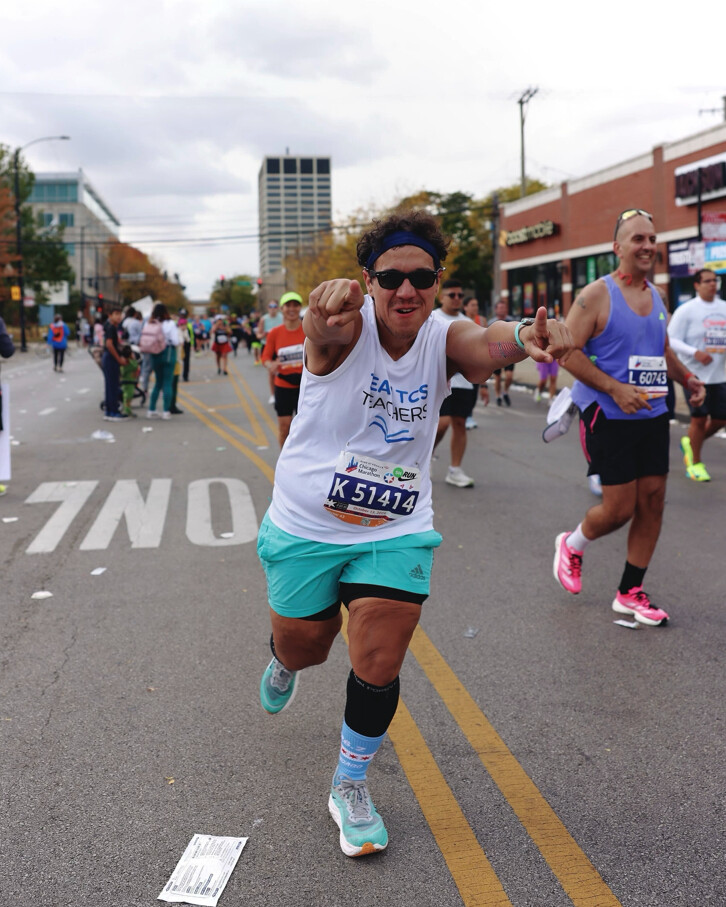
Three and a half years later, Torruella completed his first 26.2 at the 2024 Chicago Marathon, an experience he considers a “celebration” after many hard-fought moments in the 35-year-old’s weight-loss journey.
On race day, Sunday, October 13, Torruella faced setbacks—including a pulled muscle in his right quad, which forced him into the medical tent at mile 17—but he continued on, often pushing through tears in the latter half of the race.
In the tougher miles, Torruella focused on regulating his breath under a compression suit designed to hold in excess skin and prevent chafing beneath his shorts and singlet. He thought about running to his partner, Esteban, at mile 20 in the Pilsen neighborhood. He also focused on who he would become when he finally reached the finish in Grant Park.
“This pain and struggle was necessary to carry me through closing this chapter of my life after losing so much weight,” Torruella told Runner’s World a few days after completing the marathon in 5:58:46.
“I feel like a new version of myself was born as I crossed that finish line.”
Growing up in Puerto Rico and later moving to Houston in 2012, Torruella struggled with weight management for most of his life. When the pandemic forced everyone into quarantine, Torruella ate as a way to cope. “I found asylum in food to a point that it got out of control,” he said. “I became addicted to eating and eating unhealthy.”
In 2021, Torruella weighed almost 500 pounds. He was diagnosed with high blood pressure, pre-diabetes, and hypertension. He was also starting to lose his vision, a condition that can develop as a result of high blood pressure and diabetes.
It was a wakeup call for the singer, who decided to change his habits and undergo bariatric surgery—a weight-loss procedure that involves making changes to the digestive system to help the patient lose weight. After the procedure, patients must make permanent healthy changes to their diet and exercise routine to help ensure the long-term success of the surgery.
Post-surgery in June 2021, Torruella had to relearn the basics of eating (a process that involves different phases, similar to how a baby learns how to eat solid foods) and how to exercise.
“Never in my life did I know what going to the gym meant or what you do when you get there,” Torruella said. “I was learning how to move again, how to accept my body, and how to find love in the foods that nourish me.”
Six months after surgery, Torruella lost almost 200 pounds, a result of medical and family support as well as
“I wouldn’t be closing this chapter of my life if it weren’t for the opportunity I got through TCS,” Torruella said. “They gave me a platform to advocate for arts education and to encourage other teachers and folks that are struggling with obesity that this is possible.”
After the defining experience in Chicago, Torruella is already planning to take on another marathon next year. This time, he wants to run a personal best.
“I will gain a lot more flexibility and freedom to move [after surgery], and then I can start training to finish my marathon a little faster,” he said.
(11/17/2024) ⚡AMPMatt Choi Apologizes for Running with E-Bikes on New York City Marathon Course
The influencer said in a video posted to Instagram, “I have no excuses. Full stop.”Matt Choi, the running influencer who infuriated the running community by bringing two unauthorized e-bikes onto the New York City Marathon course to film him running, has issued an apology.
“I f----- up,” he said in a video posted to Instagram. “I was selfish on Sunday.”Choi made it clear in his video that he understood the consequences of his actions. “We endangered other runners. We impacted people going for PBs. We blocked people from getting water. And with the New York City Marathon being about everyone else and about the community, I made it about myself.” Choi has not responded to a request for comment from Runner’s World.
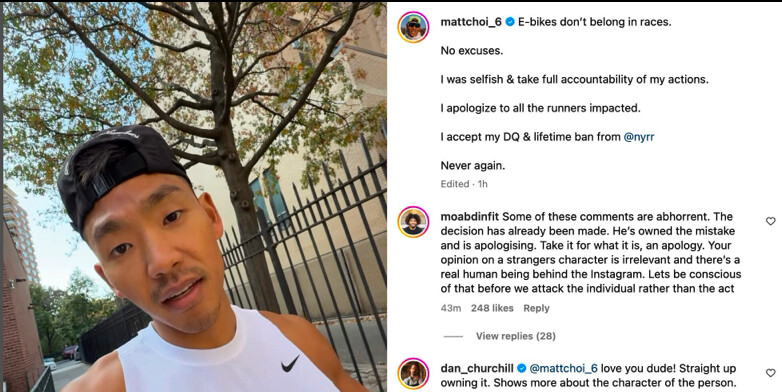
On November 3, Choi, 29, finished the marathon in 2:57, openly floating race rules with the two vehicles beside him. Runners raised an outcry, and by the evening of November 4, New York Road Runners had disqualified him from the race and banned him from future events.Choi said in his apology video that he will not appeal the organization’s ruling.
The actions are likely to have financial implications for Choi. The COO of Runna, a training program and app that was partnering with Choi, wrote in a statement posted on LetsRun’s message boards, “We have decided to terminate our relationship with Matt effective immediately.”
MORE FROM RUNNER'S WORLD ON APPLE NEWS
(11/17/2024) ⚡AMP

